October 30, 2022
Martha O'Kennon
Cold. Warm. Cold. That's the weather report for this week. October is almost at an end and so were most of the flowering plants. We still had a bit of yellow Goldenrod, but very far between sightings. That tiny Aster that I started calling Fleabane last year still has some outcroppings. And the Euonymus is flashing by fast!
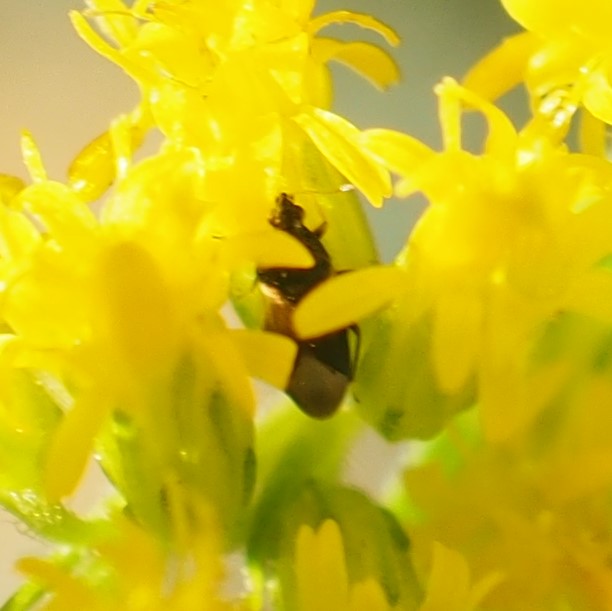

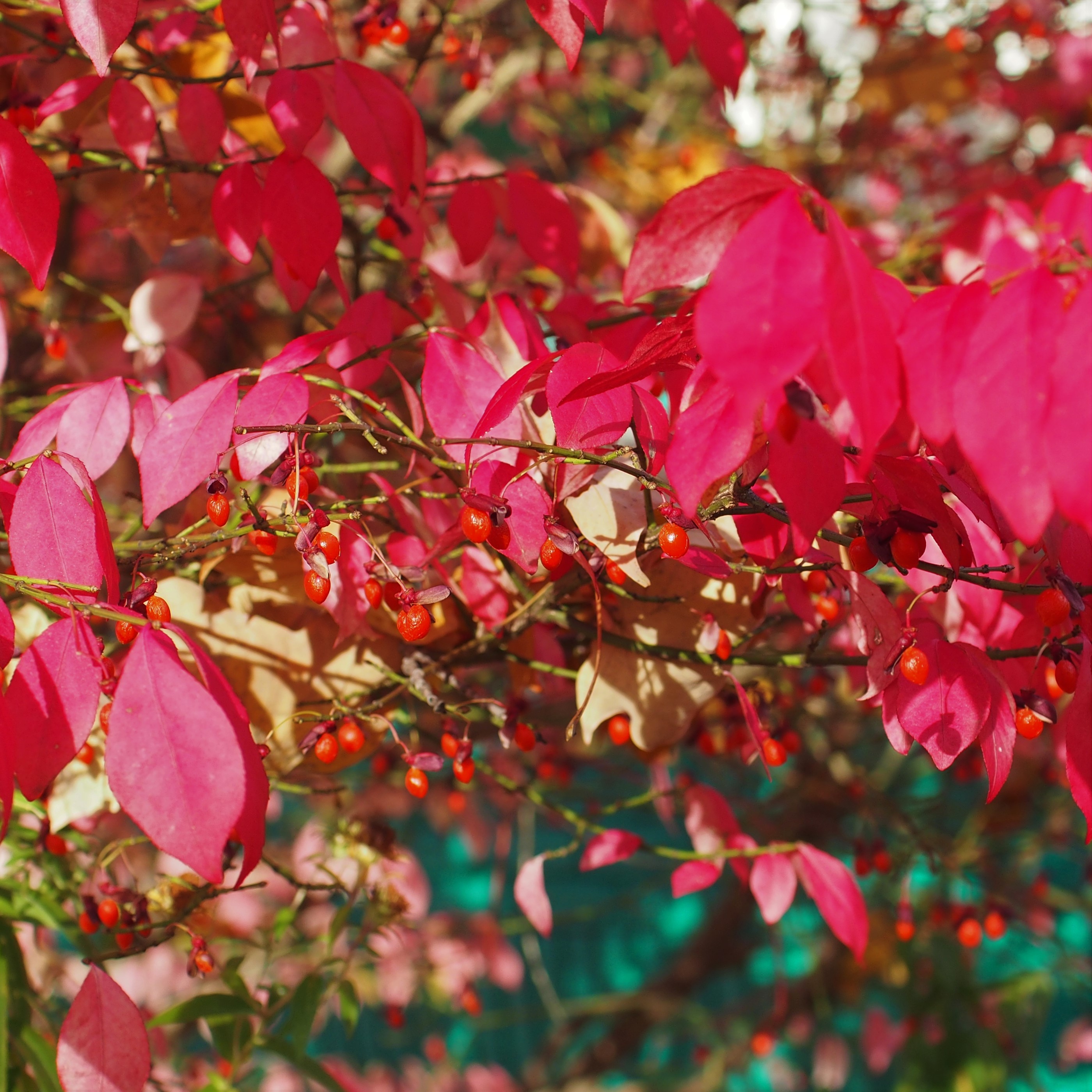
Not only were the kinds of Ants we're used to seeing fairly rare, but my old faithful camera's just stopping has meant much more effort to get a few pictures to come out clearly. But we had our usual Winter Ants, thank goodness, and looking much the same as ever. Picture 3 is of an Eastern Black Carpenter Ant.
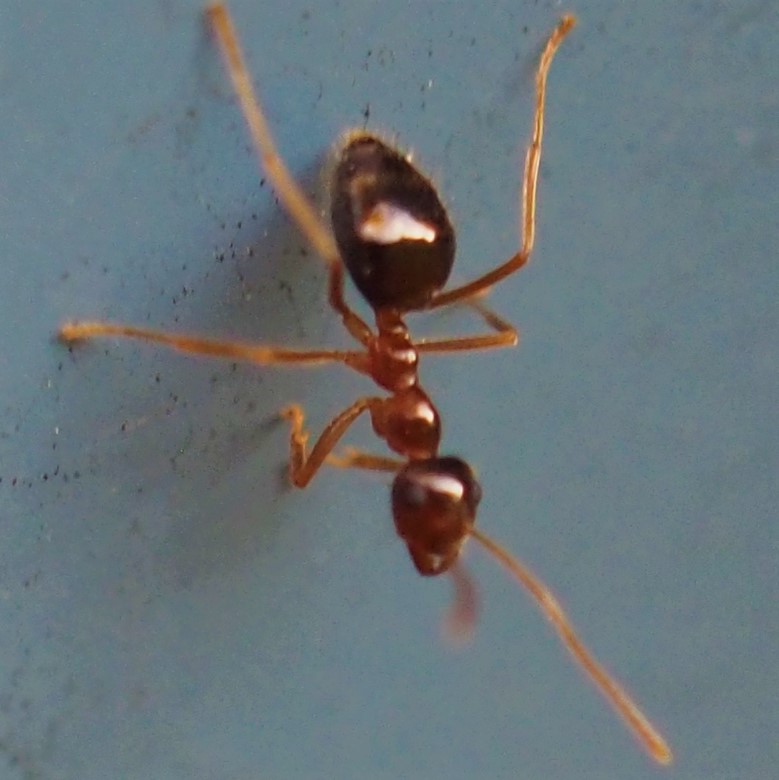
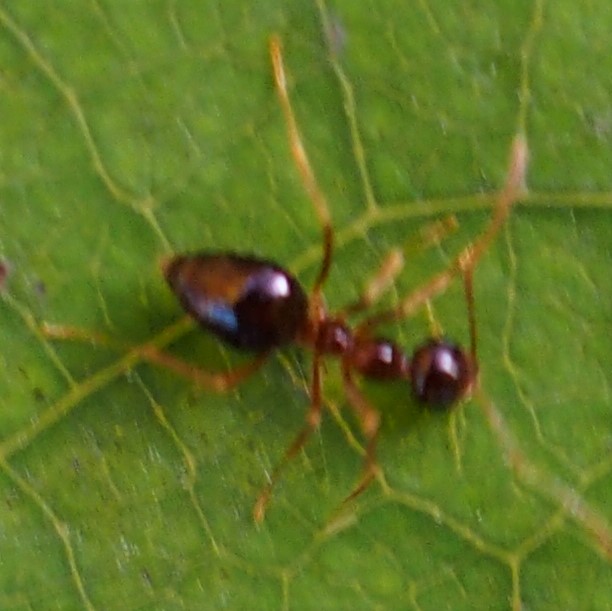
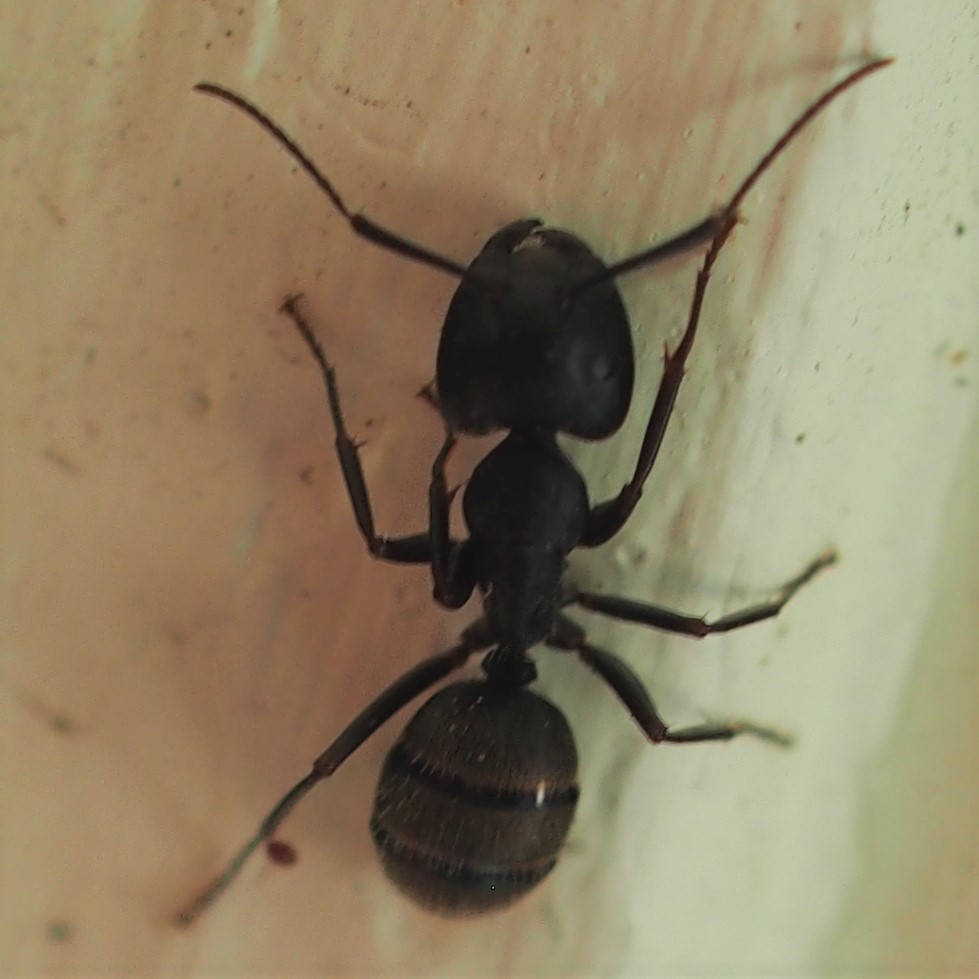
The Nearctic Ants, the ones that we could count on having one red segment and the rest black (picture 1), have not even shown up for several weeks. This past week they seemed to be back, but the red covers the whole Ant now. They also seemed to be twisting their little bodies a lot more than usual (picture 3).
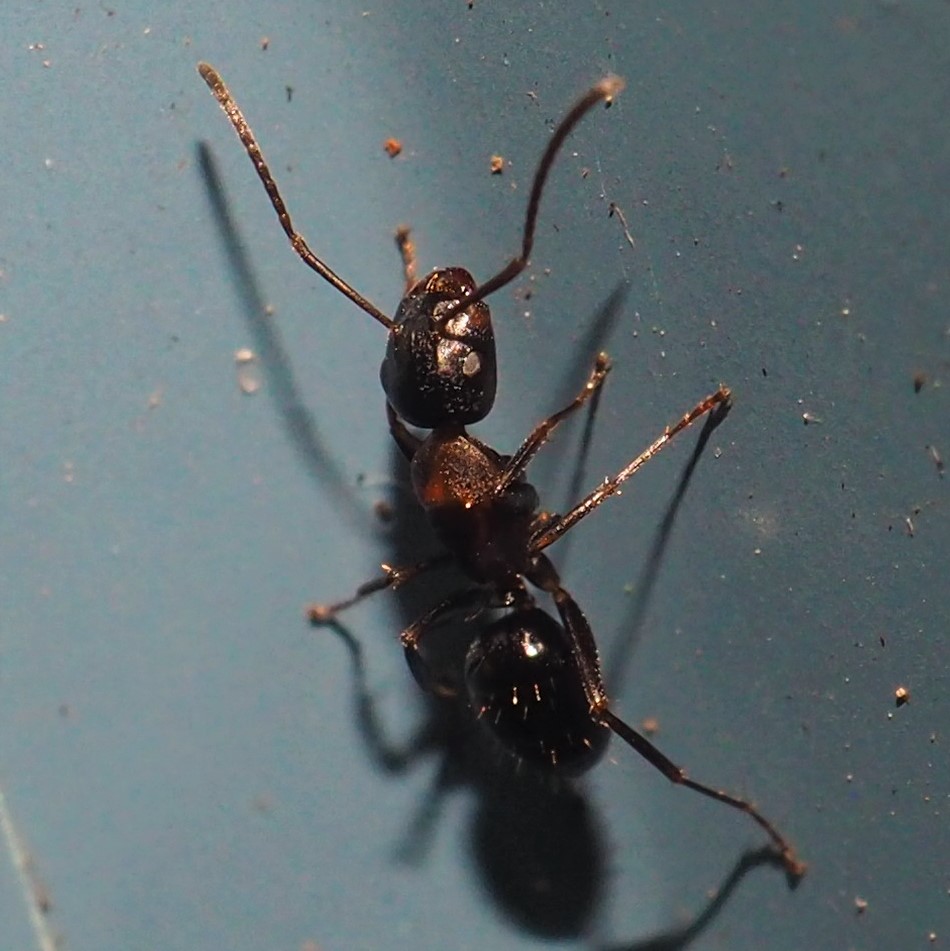
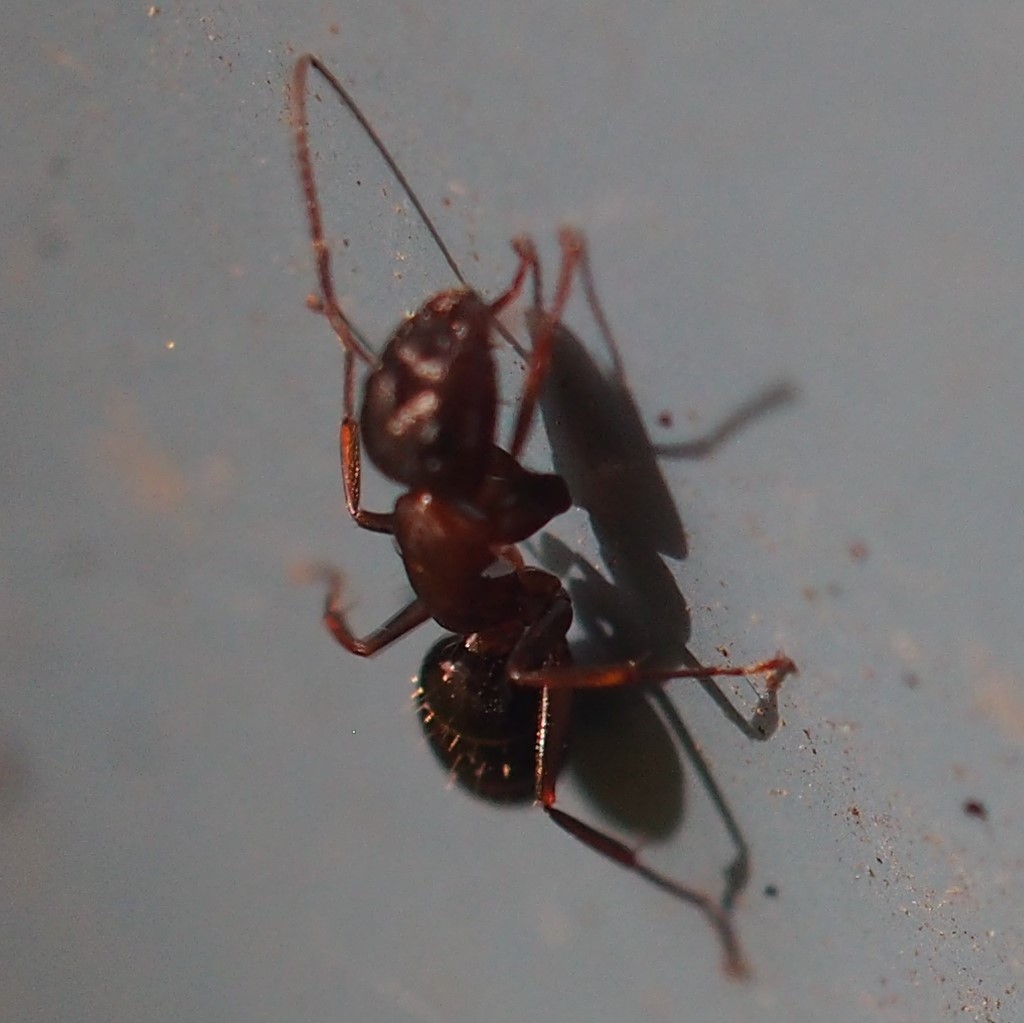
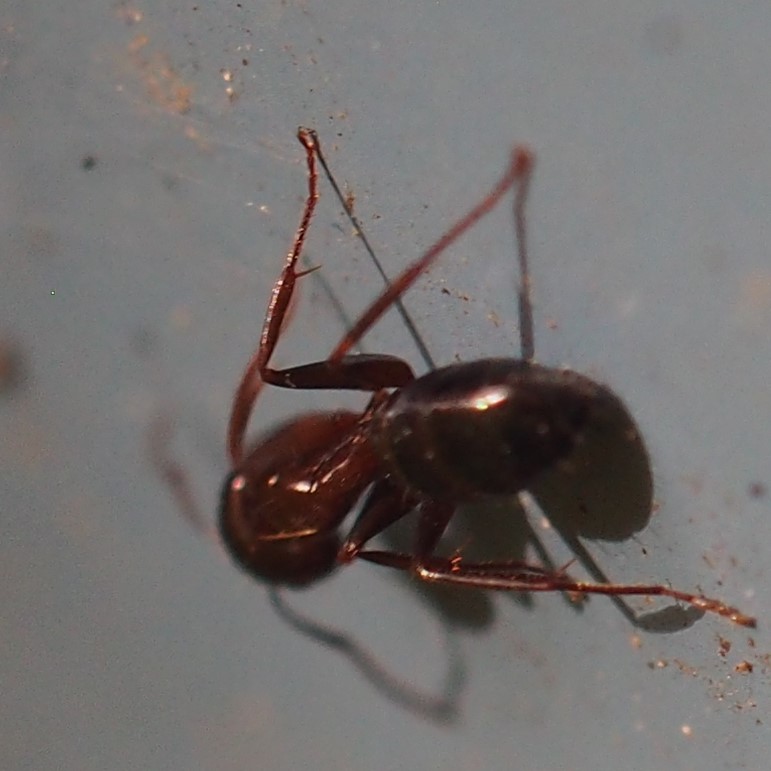
Remember that there is information in the name of the file for each image. You can see it by mousing over the image - look at the lower left of the screen. Or you can click on the image to get to the (usually) larger image. Then the info is displayed in the address line above. Sometimes the second click will actually display a different view of the original image.
Bees are practically a thing of the past, but we did have this Common Eastern Bumble Bee.
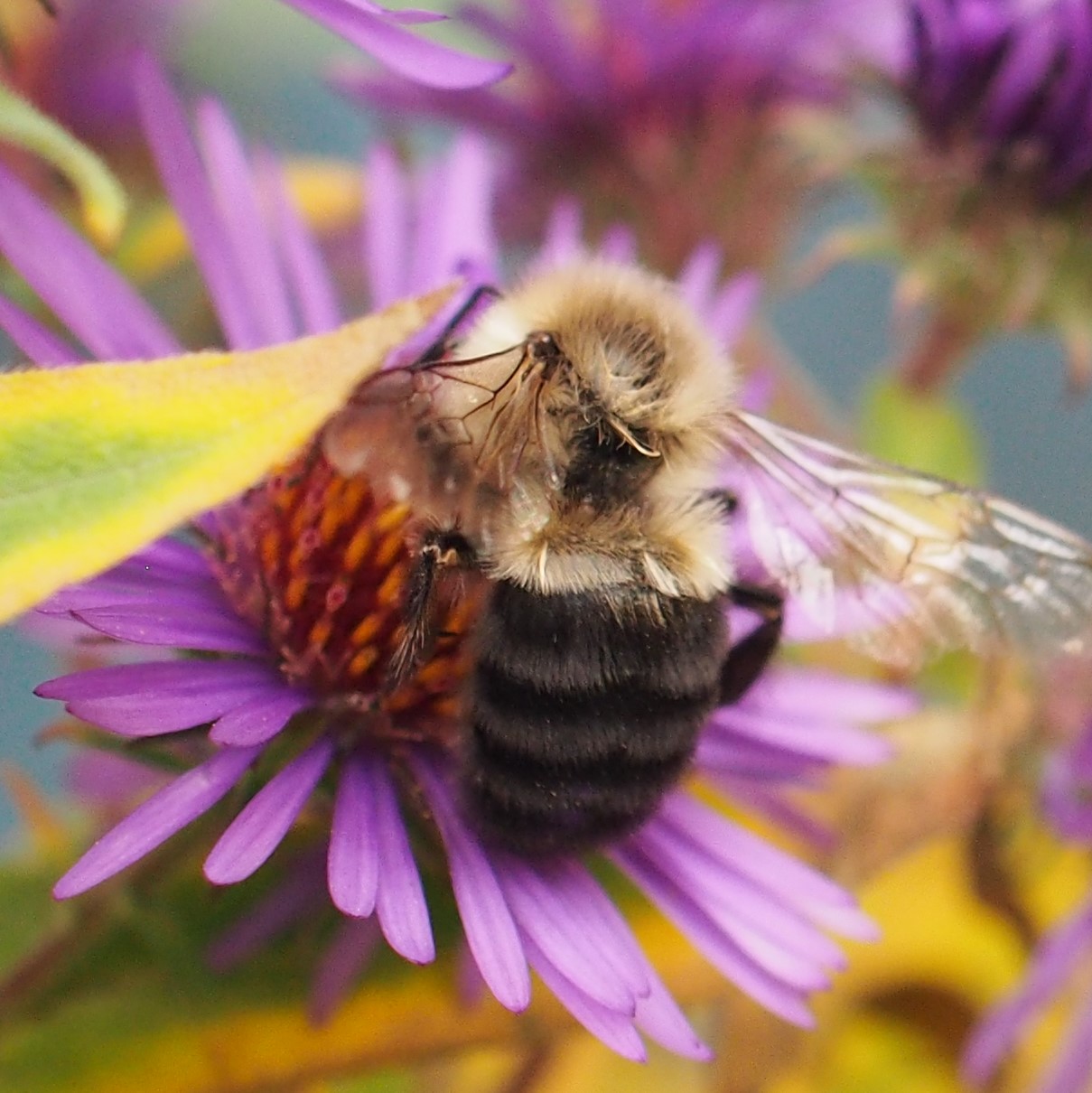
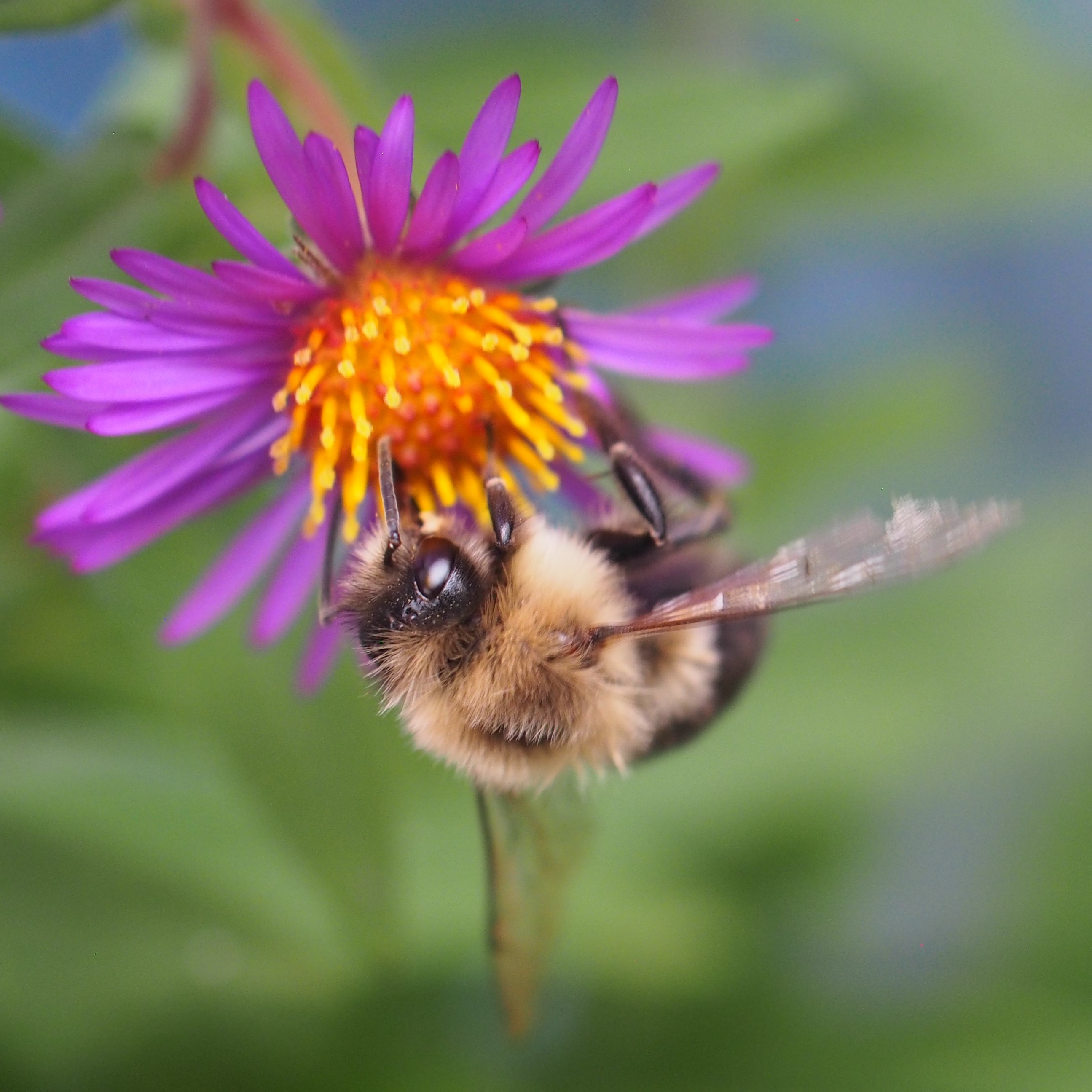
Here is one of many look-alike Beetles. Our friend @borisb of iNat says the first is one of a large genus called Cryptophagus, most of which are very similar-looking. Next is an Asian Lady Beetle, and third is a holdover from last week - the Picnic Beetle!

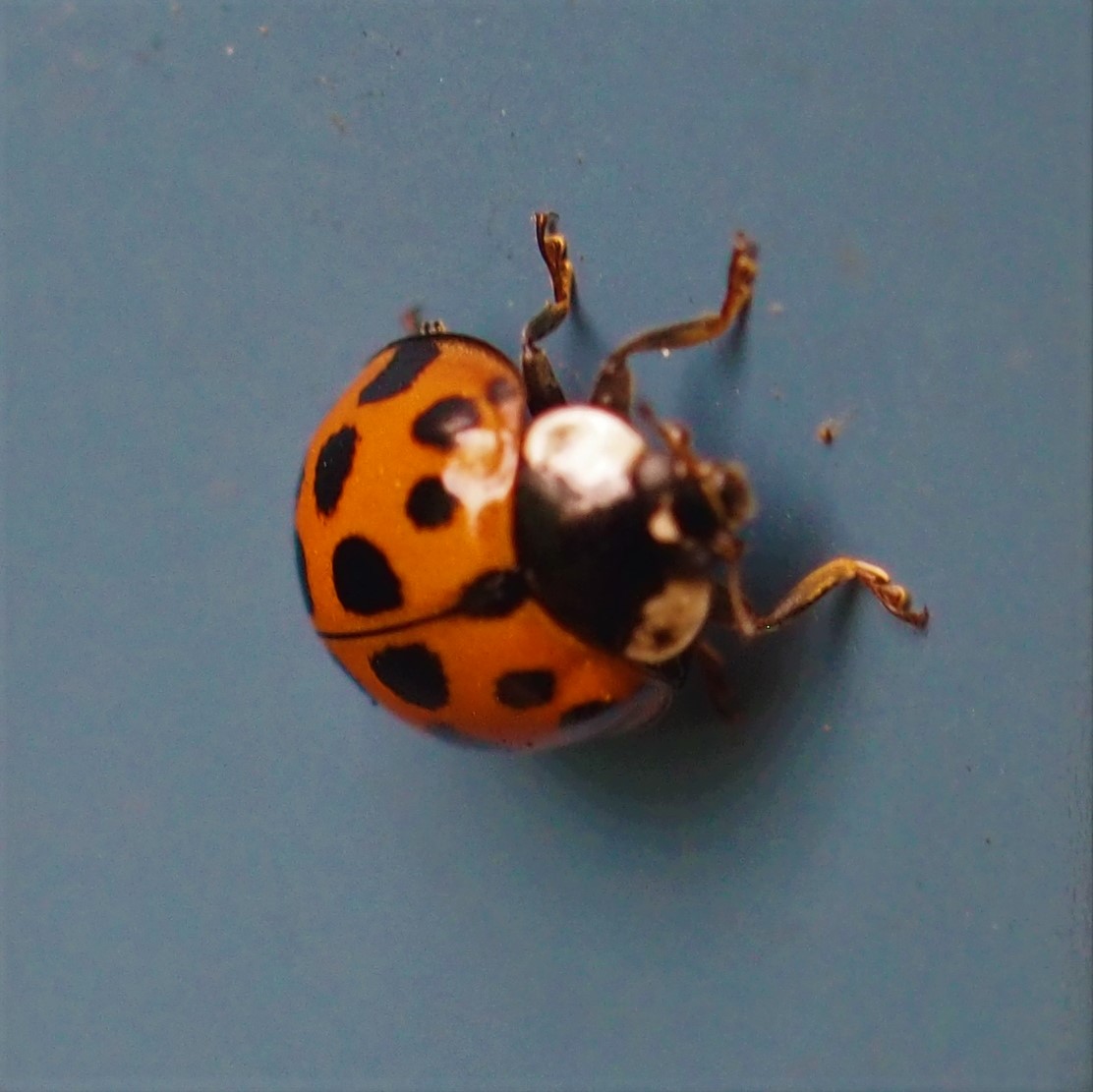
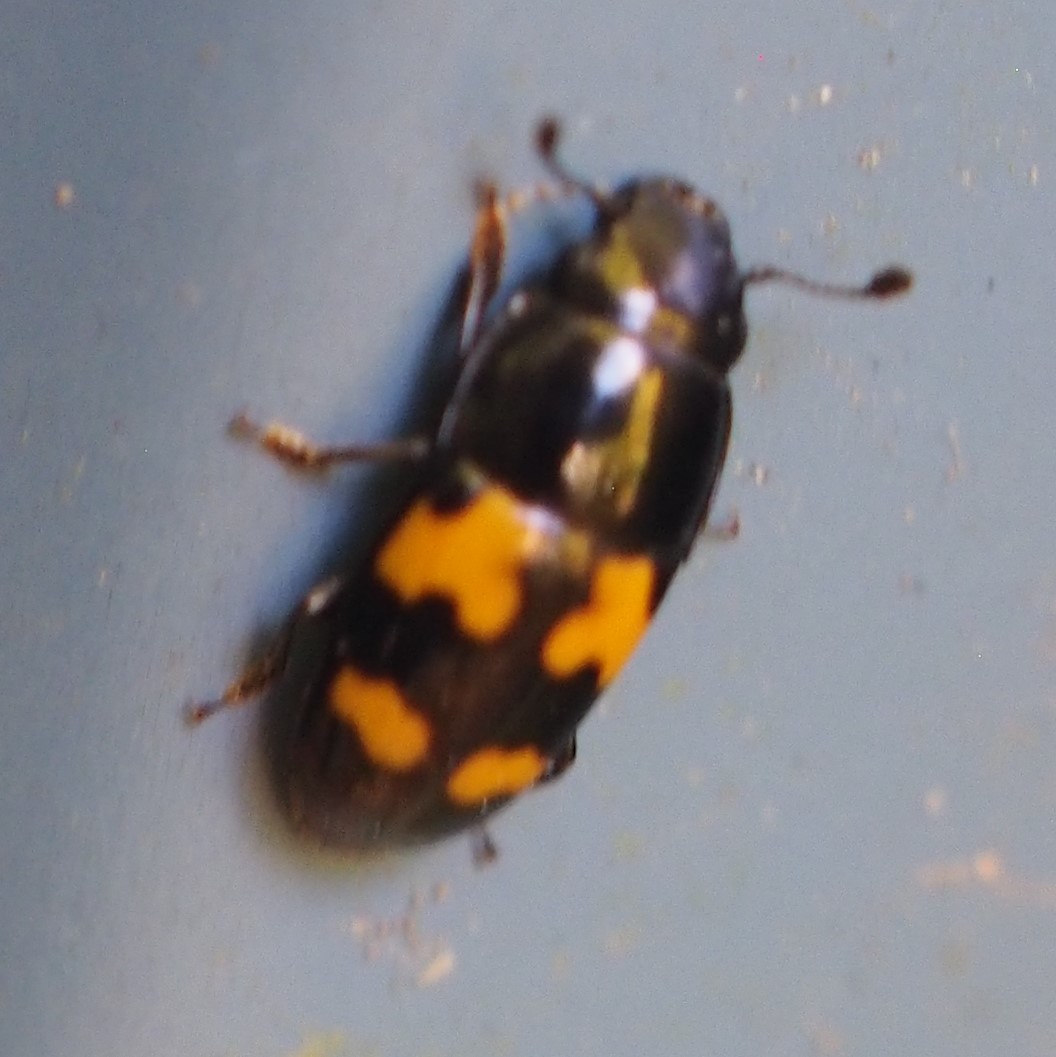
These Striped Cucumber Beetles are taking advantage of the remnants of the Goldenrod to meet each other. Next, the Redbud Bruchid (Redbud Seed Weevil) in an unusual frontal view. Third is that Madarellus undulatus Weevil - I had also seen it a couple of weeks ago but forgot (how can I forget that face or the rest of it either)?

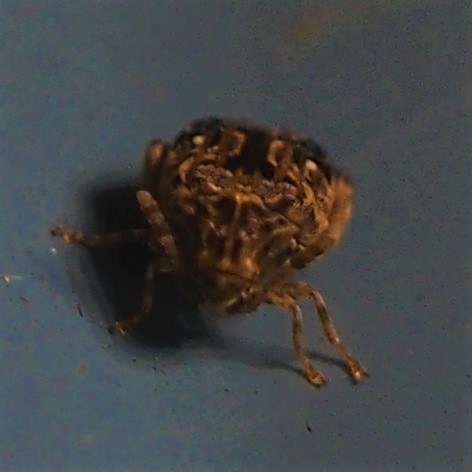
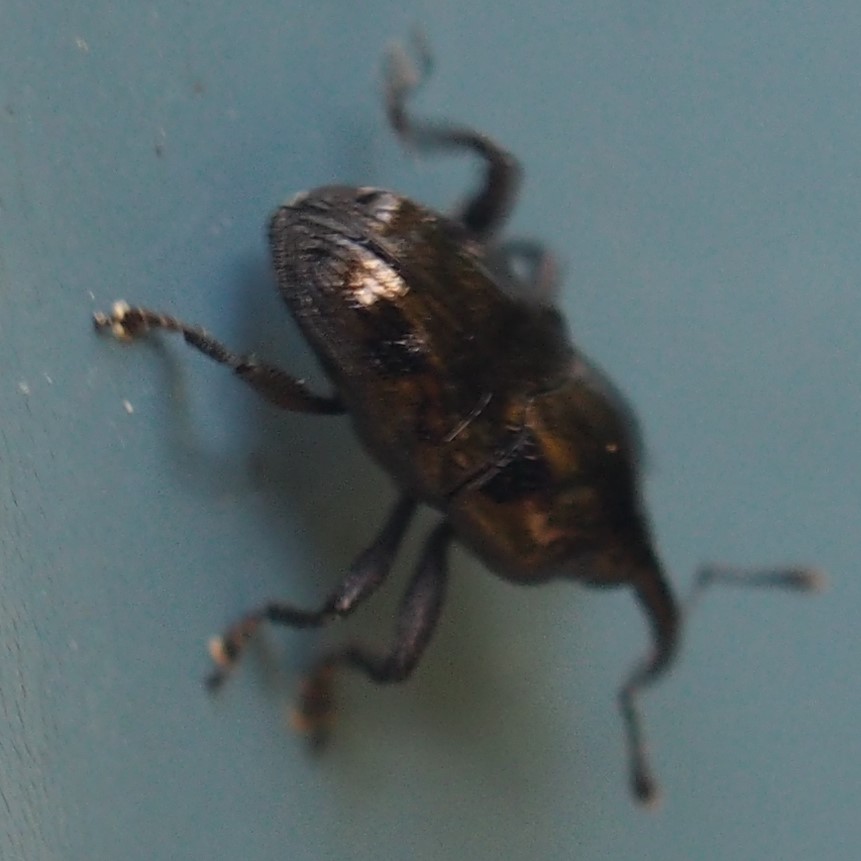
The Drymus unus Bugs are still at it in the Goldenrod, now Whiterod I suppose). Then we see a couple of shots of the Eastern Boxelder Bugs.
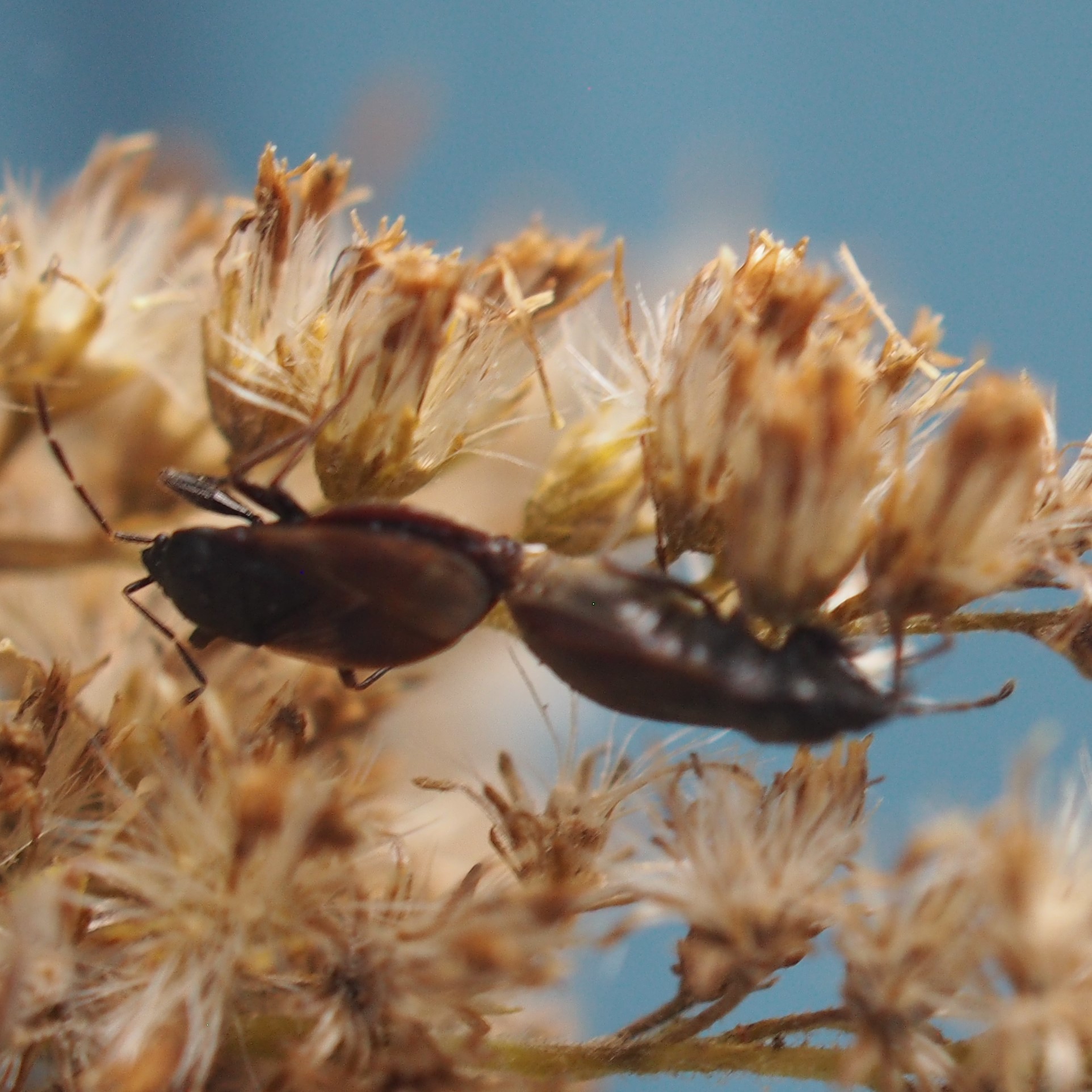
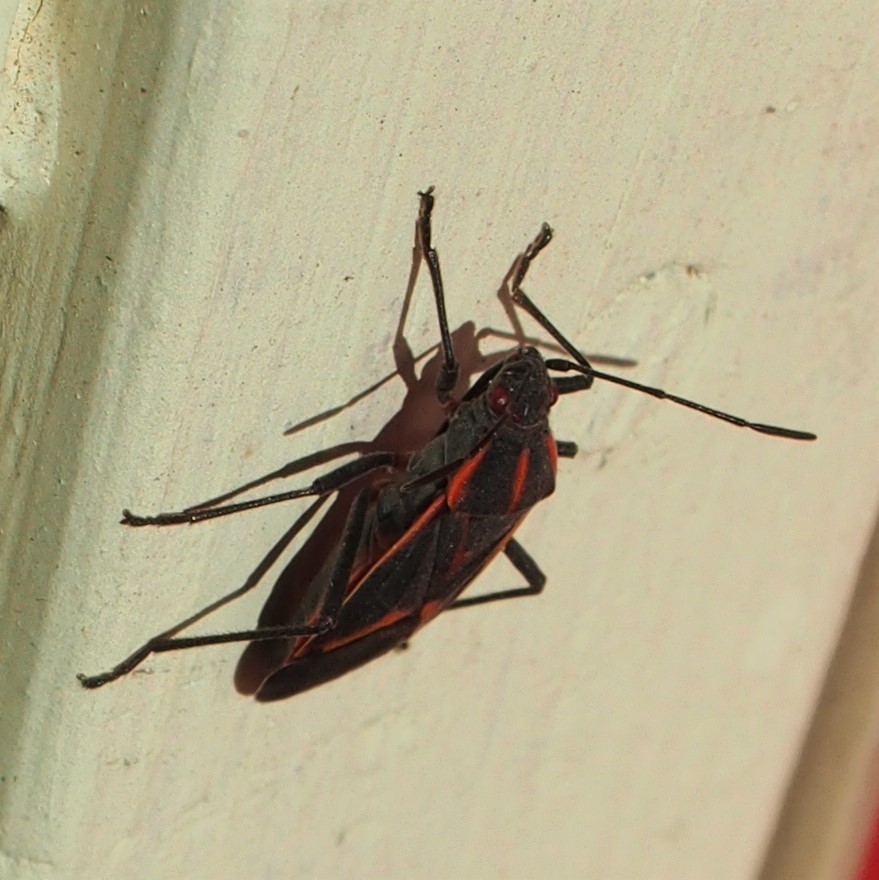
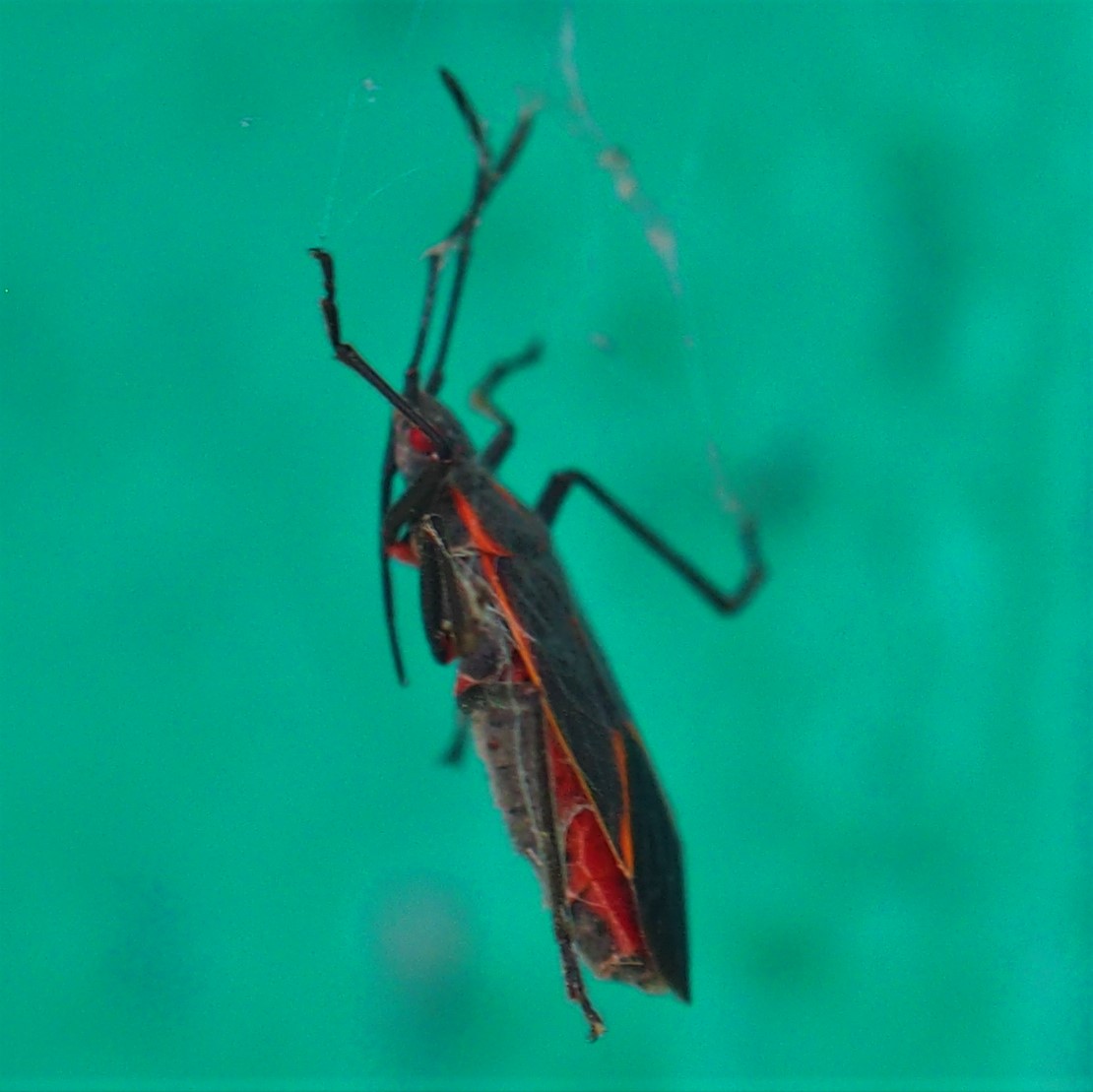
On we go into the Leafhoppers. First is the usual shot of one of the members of genus Eratoneura. Then another usual shot, also of Eratoneura, just called "Dots". Third is a variation on genus Erythridula called E. noeva.
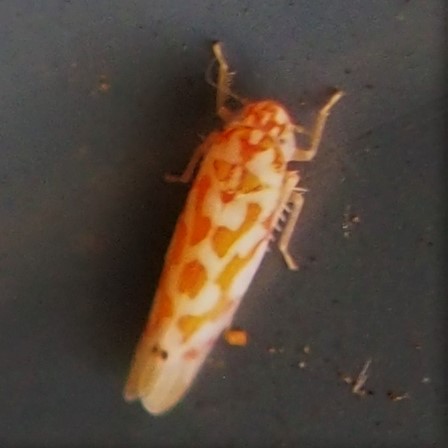
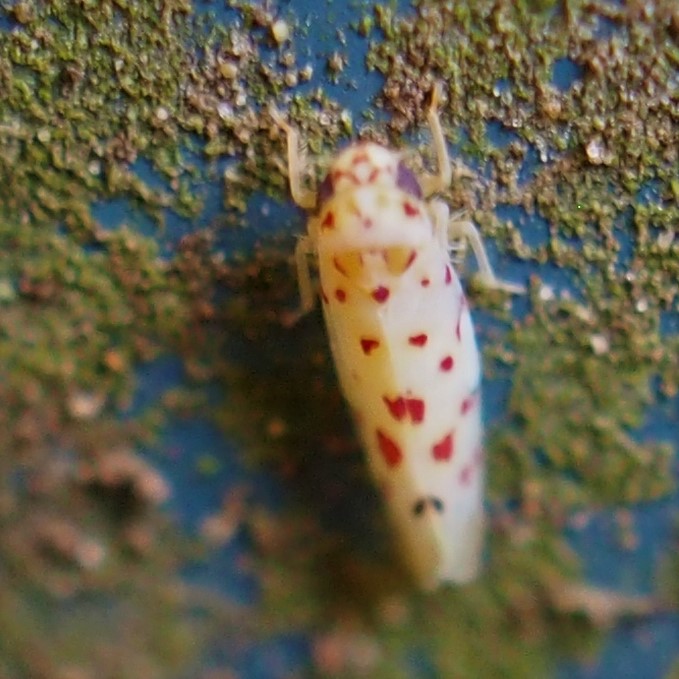
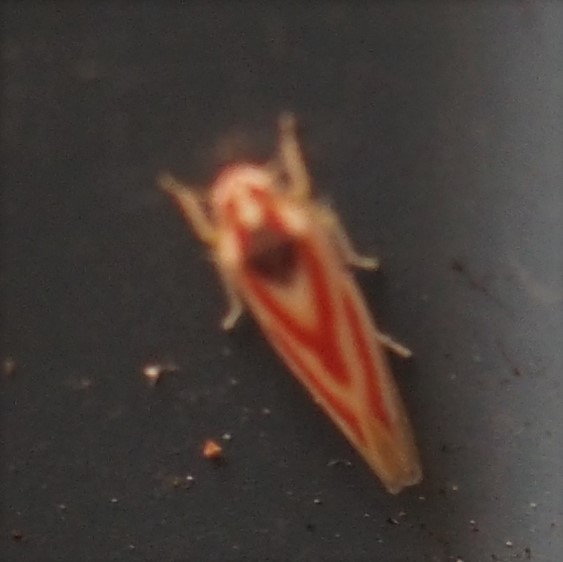
First here is another variation on Erythridula. Then comes that Red-banded Leafhopper. Third is one known as genus Balclutha. And fourth is Subgenus Cloanthanus, a member of Genus Scaphytopius, a genus which is known to hold a group of Sharp-nosed Leafhoppers.
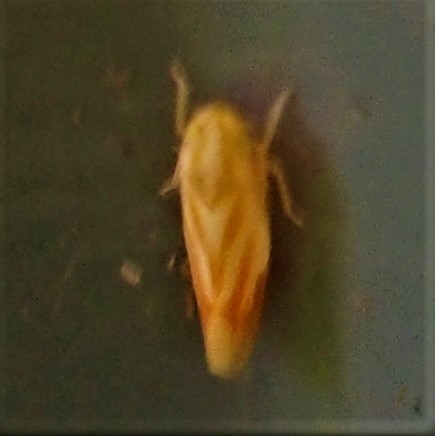
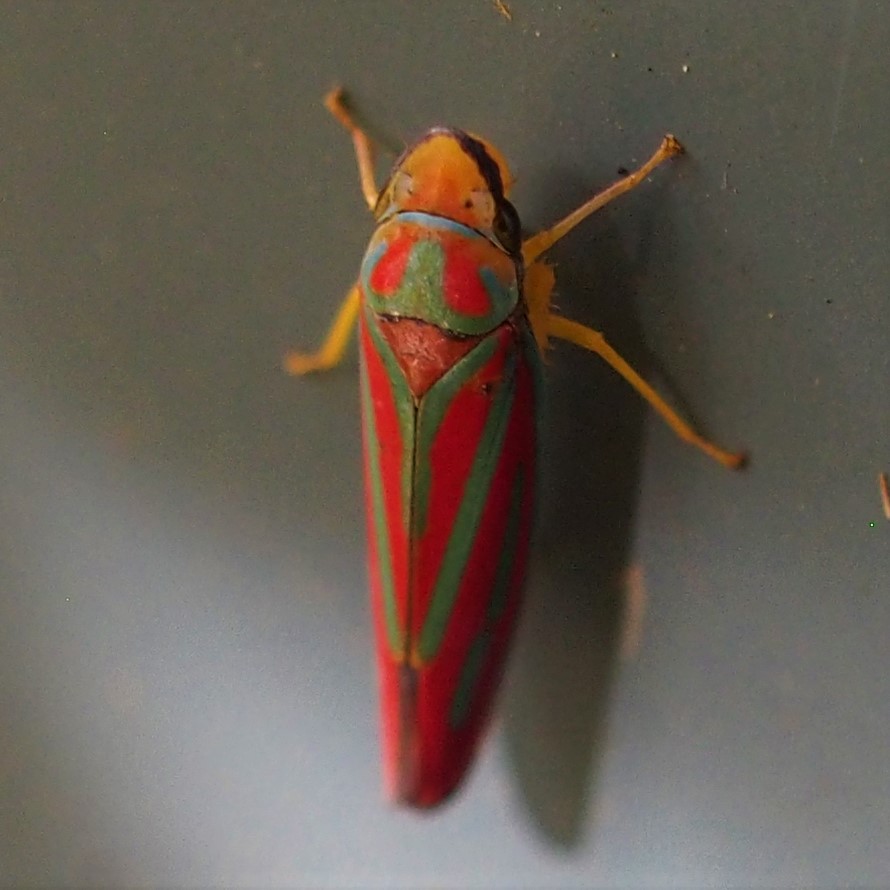

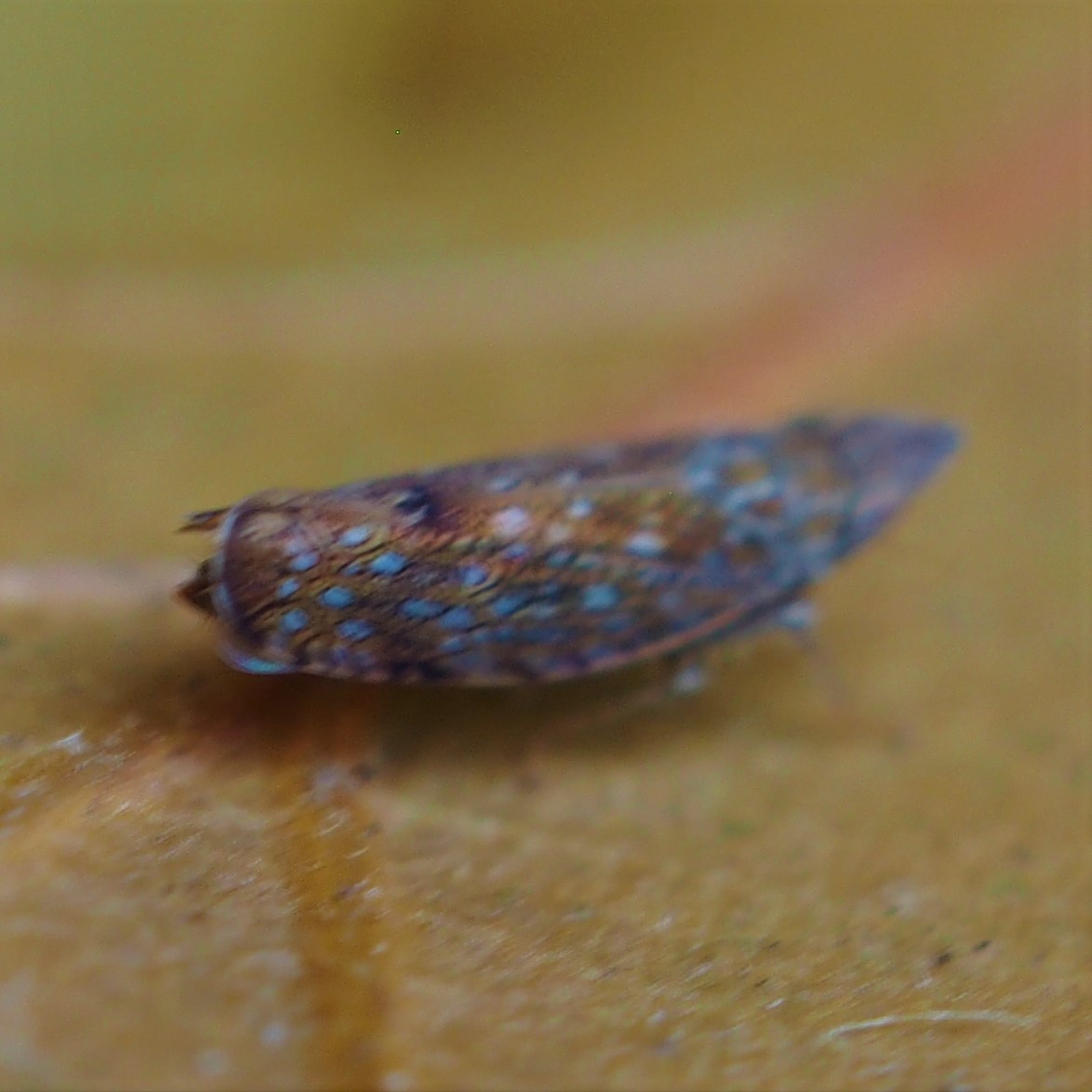
We're not done with the Bugs yet. We still have to acknowledge the Stink Bugs. First is the bane of everyone's existence, the Brown Marmorated Stink Bug, or BMSB. Then we have one of the Predatory Stink Bugs. Lupoli-Roland of iNat says that is not just an illusion that makes Bug #2's wings seem longer. They really are that long! Picture 3 shows another Stink Bug that doesn't seem to be either of those two!
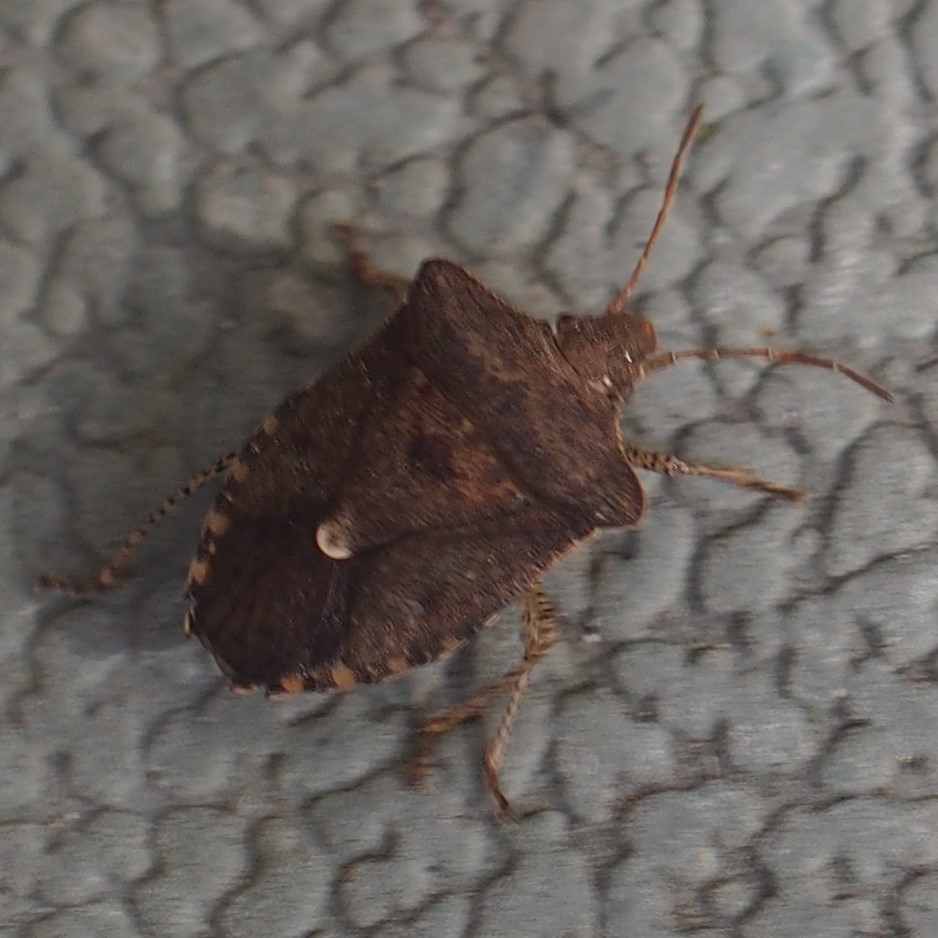
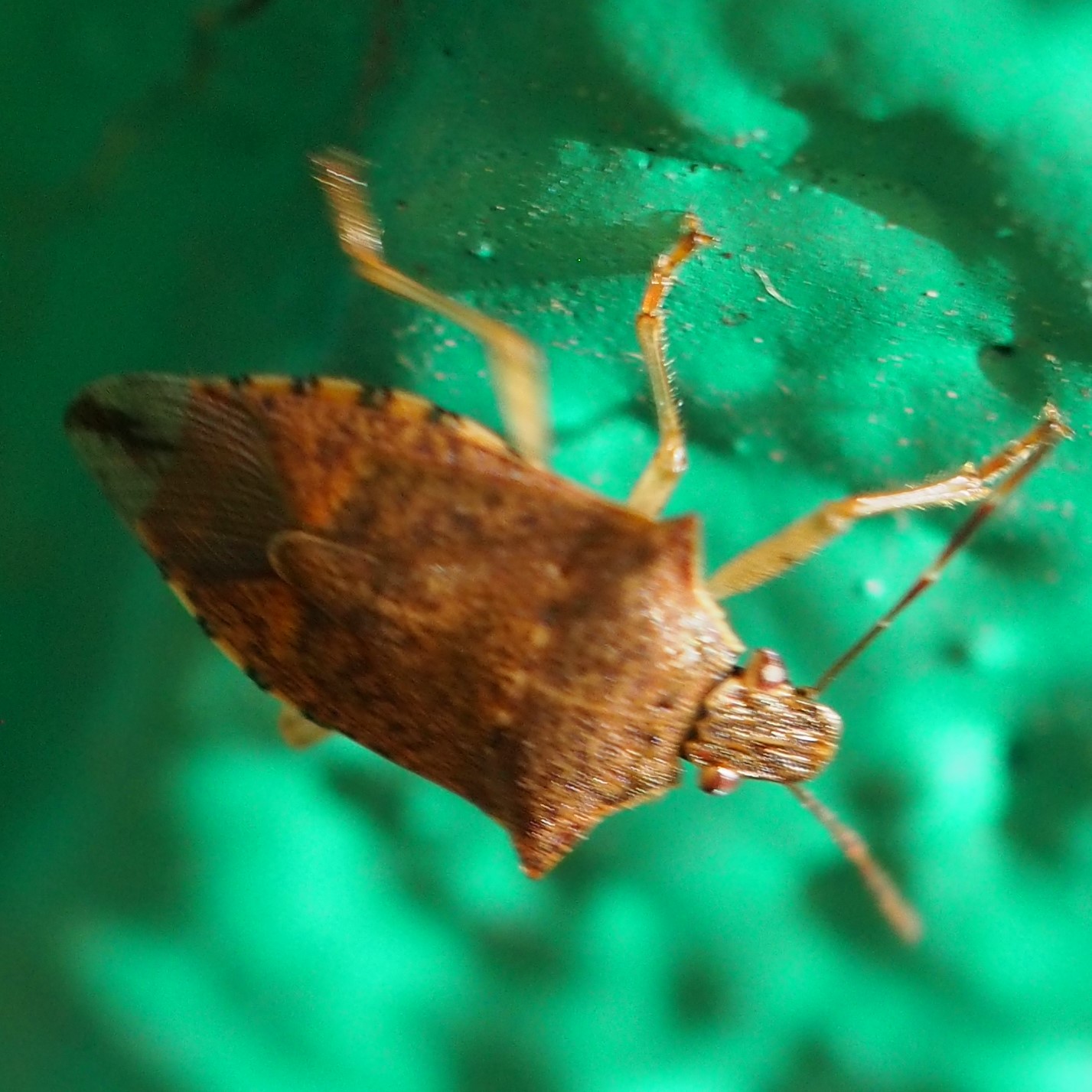
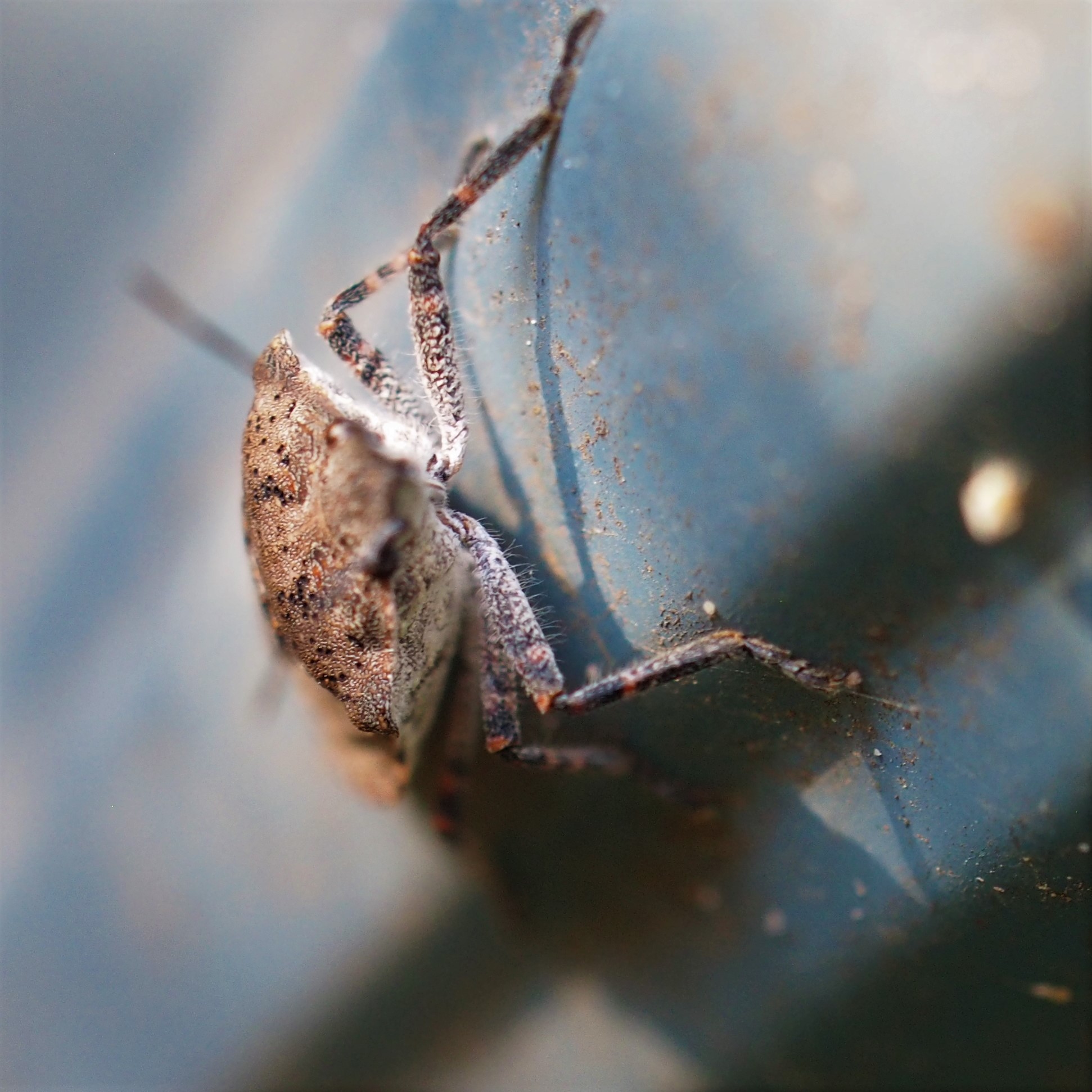
Even though the Whiteflies are called that, they aren't Flies, but Bugs. The family tree contains this path: True Bugs, Hoppers, Aphids, and Allies --> Plant-parasitic Hemipterans --> Whiteflies. This is the first time I've seen the heart-shaped one with the blue-grey markings. I modeled my ID on that of @@rrmeehan87 of iNat.
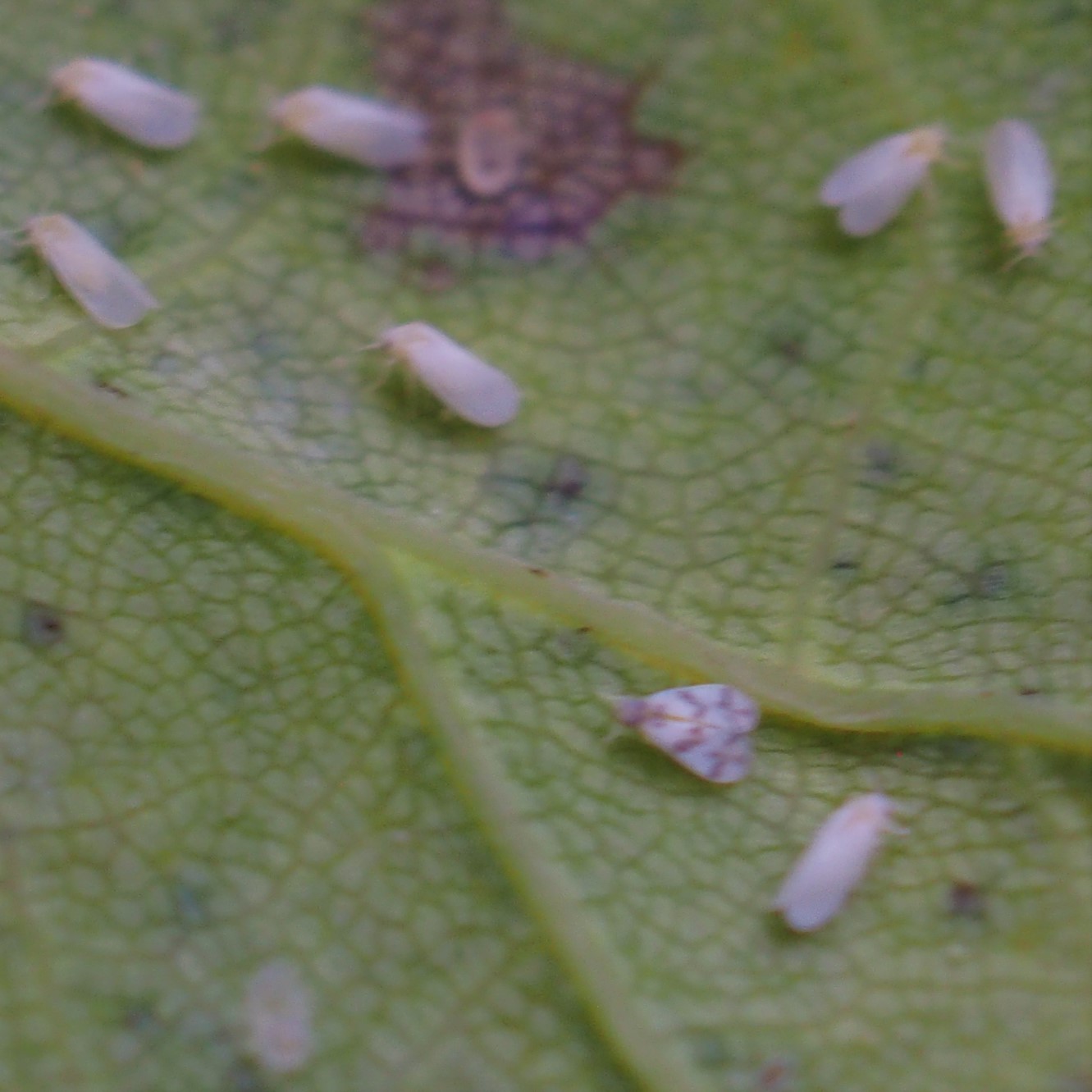
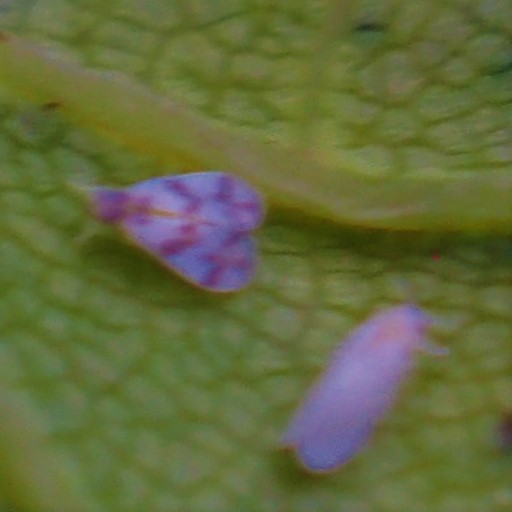
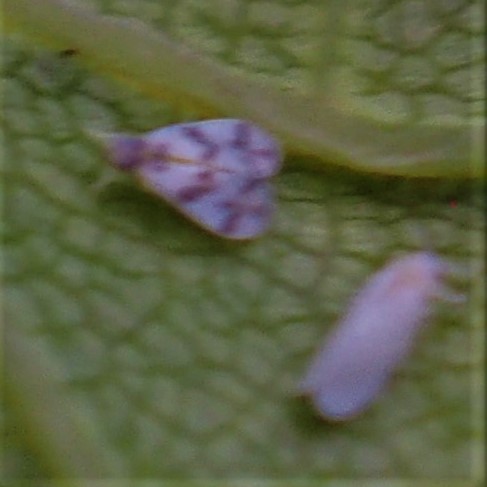
How about the Barklice? I'm beginning to be able to get better-focused pictures of this group. Pictures 1 and 2 here have the yellow tint and red-orange eyes of genus Valenzuela. Number 3 is an unusual pose of Graphopsocus cruciatus and its shadow.

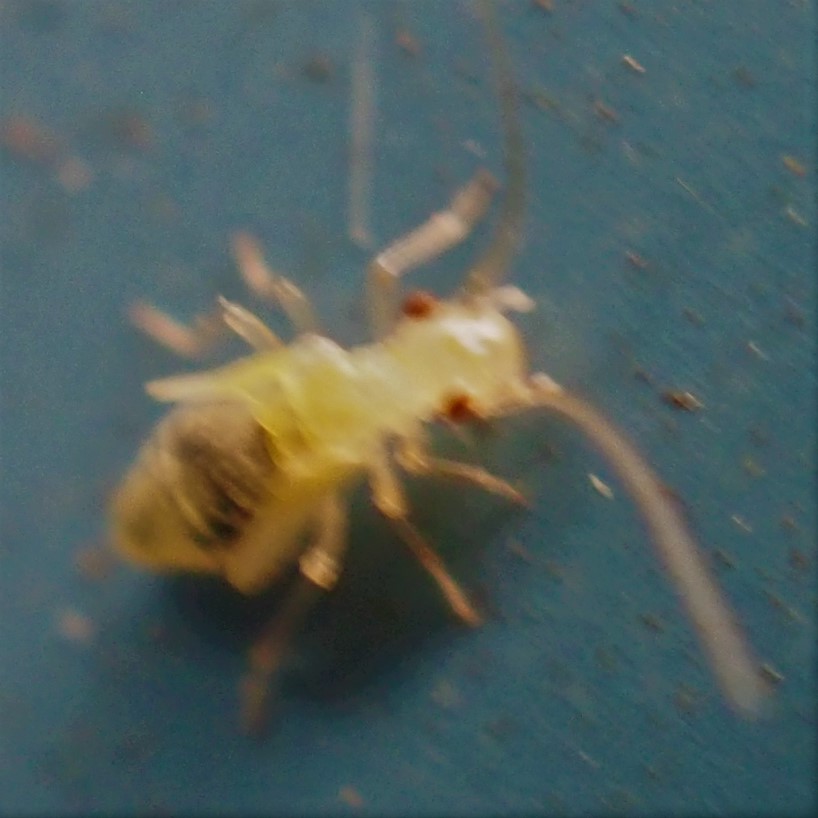

Let's see how the Flies were doing this past week. The first one here seems to be a Fungus Gnat. The others are some kind of blue-bodied large Fly.
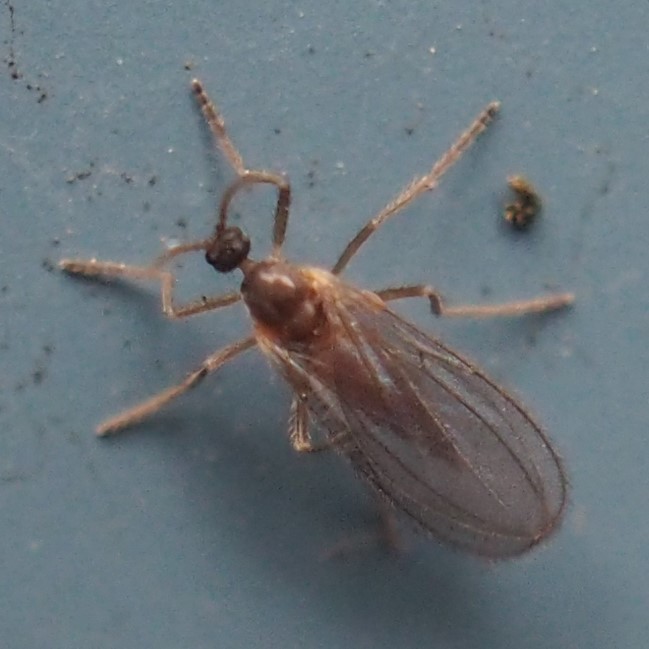
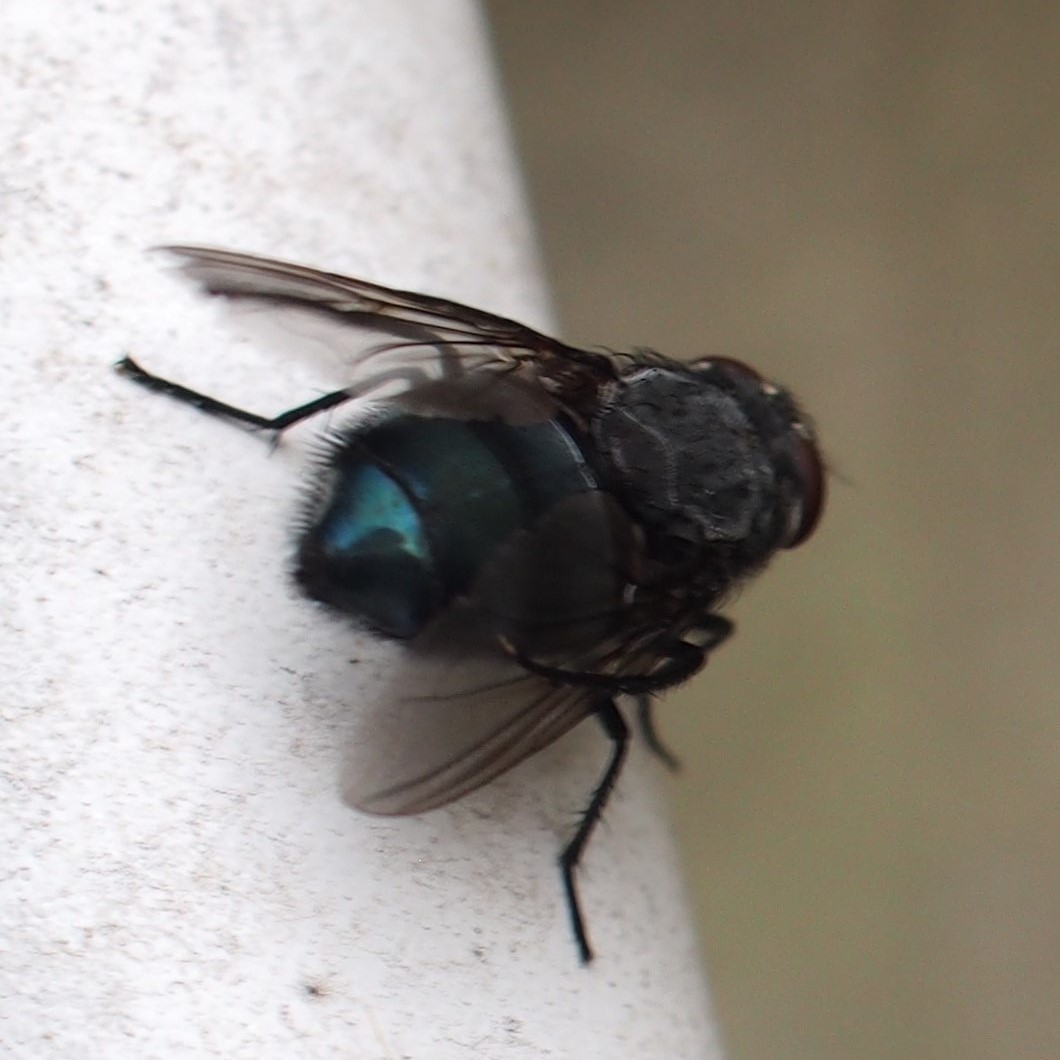
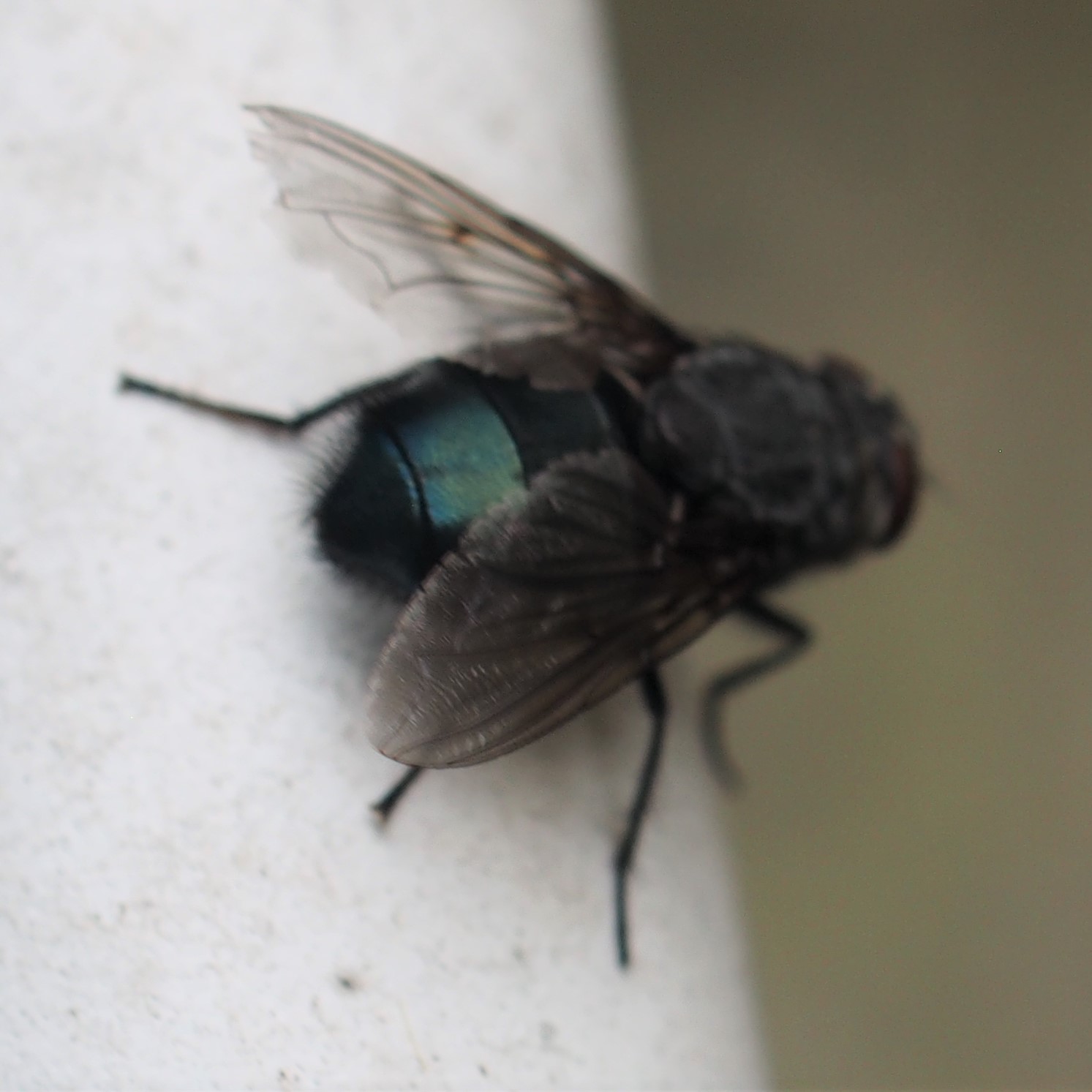
There were a few different-looking Crane Flies this week.
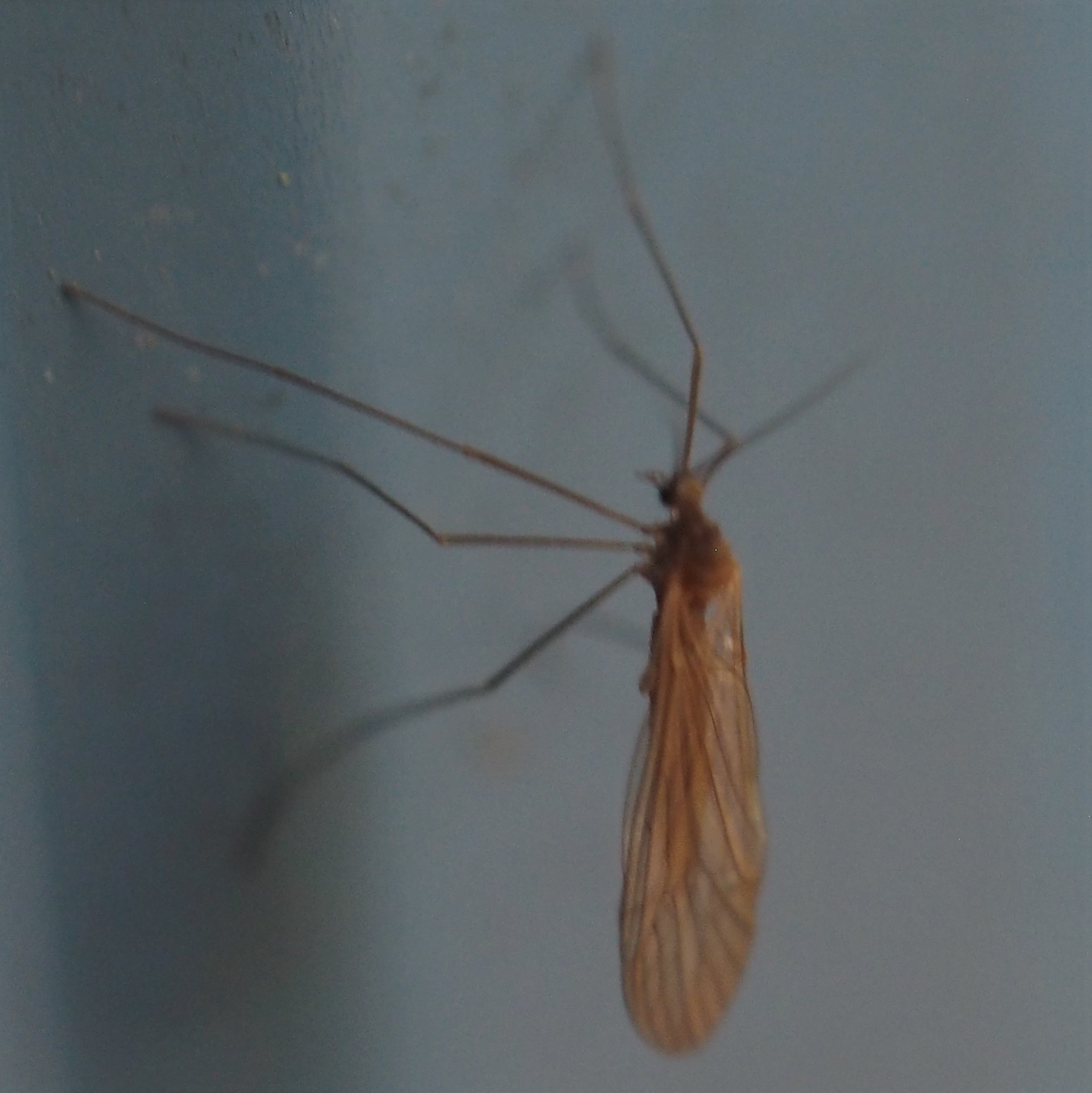
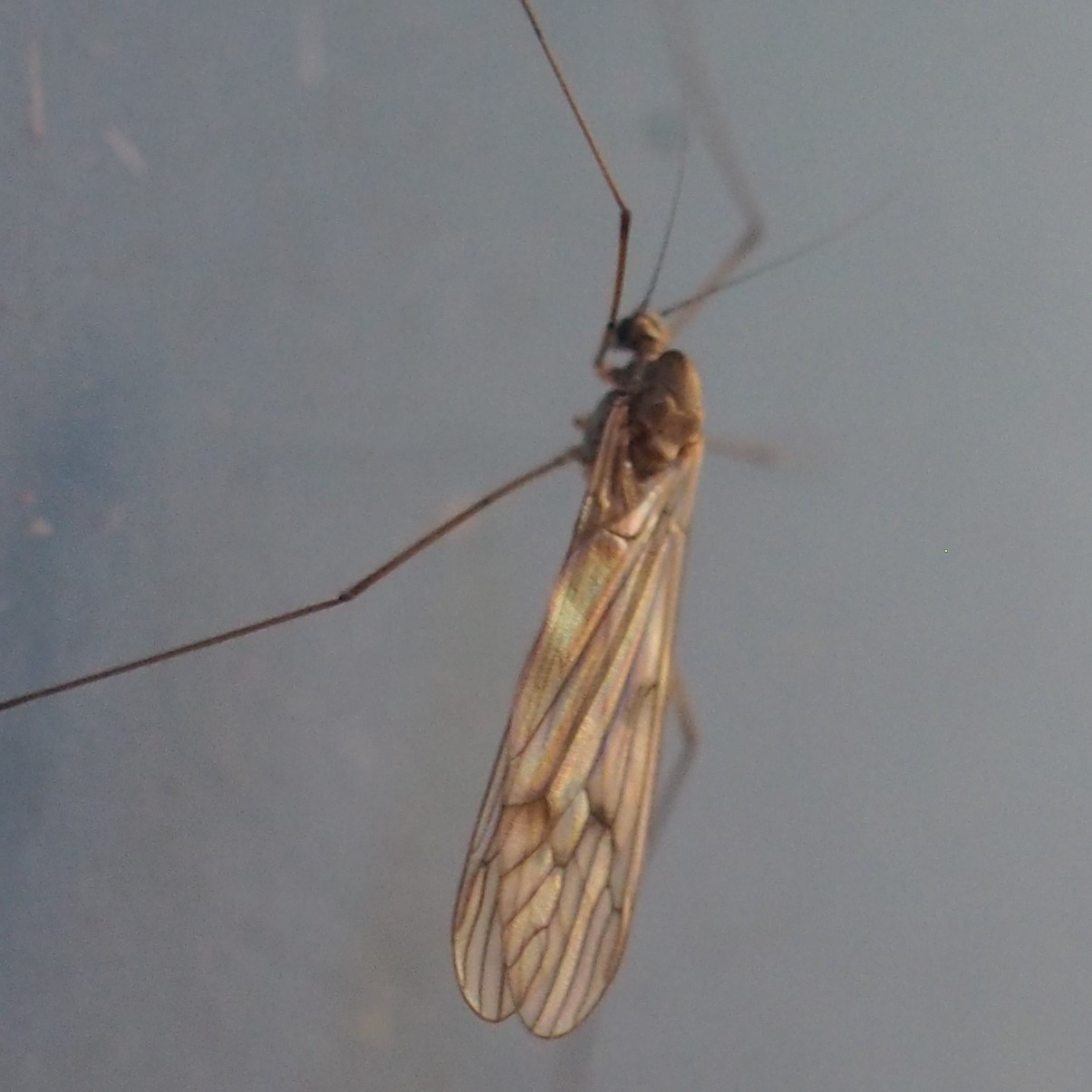
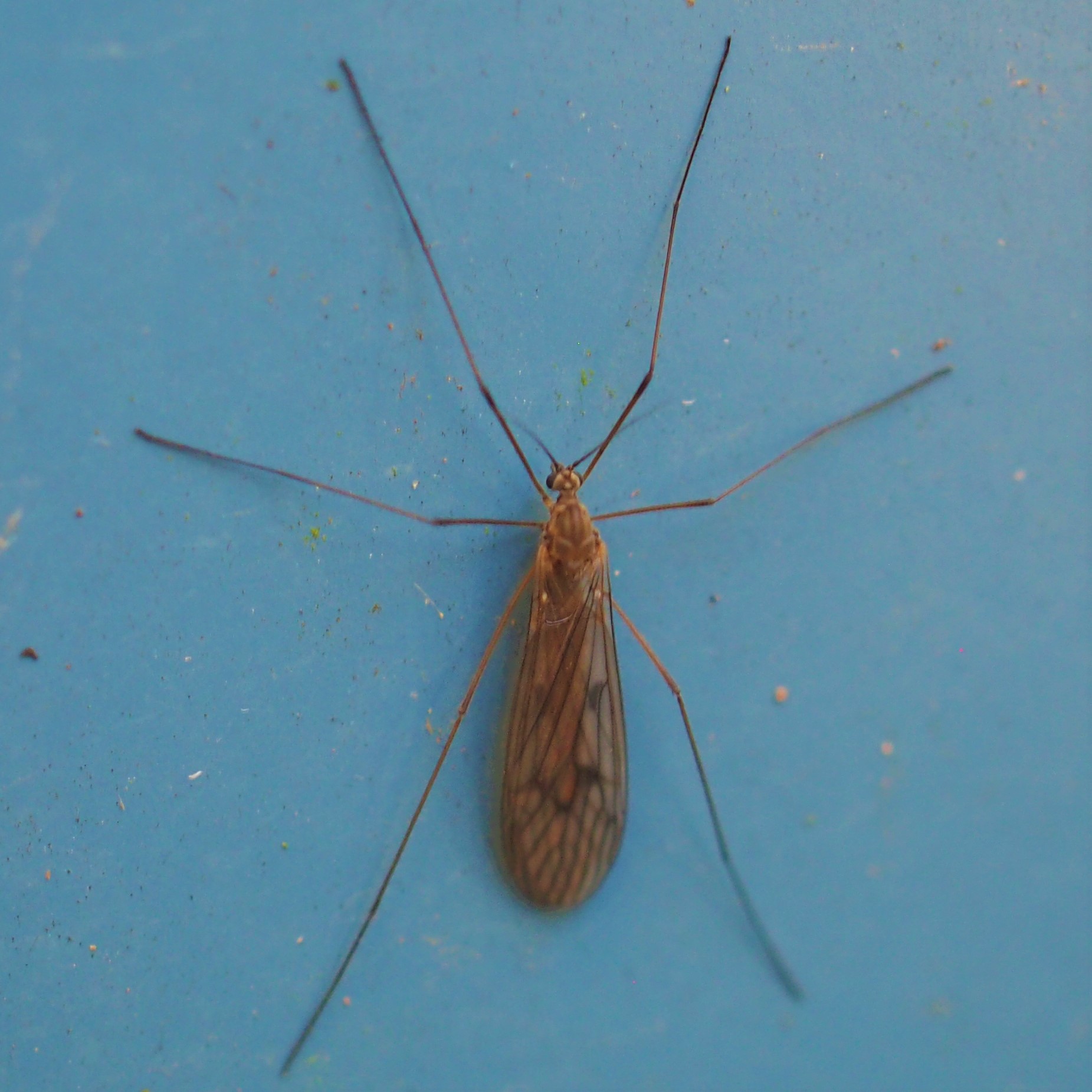
Here are several Flies shaped more or less like Houseflies.



Last week I showed you a male Woodlouse Fly and told you the female would have clear wingtips. Well, here are the two sexes side by side, Male and Female! Quiz: what's a Woodlouse? ADVICE:If you want to reply to this (or any other) question, please DON'T use reply to all, just to me.. PLEASE!
 10 21 22 2.jpg)
 female 10 25 22 1.jpg)
I have been having visits almost every day from a Fly in genus Suillia. They are beautiful but very hard to ID exactly. I'm just going to show you some of them - Chris Angell and I think this first one is the Five-Spotted Suillia Flies (Suillia quinquepunctata). The second one I saw yesterday and think it might also be a Five-Spotted one. Last is a possible Greenbottle or whatever color Bottle I've never seen before.
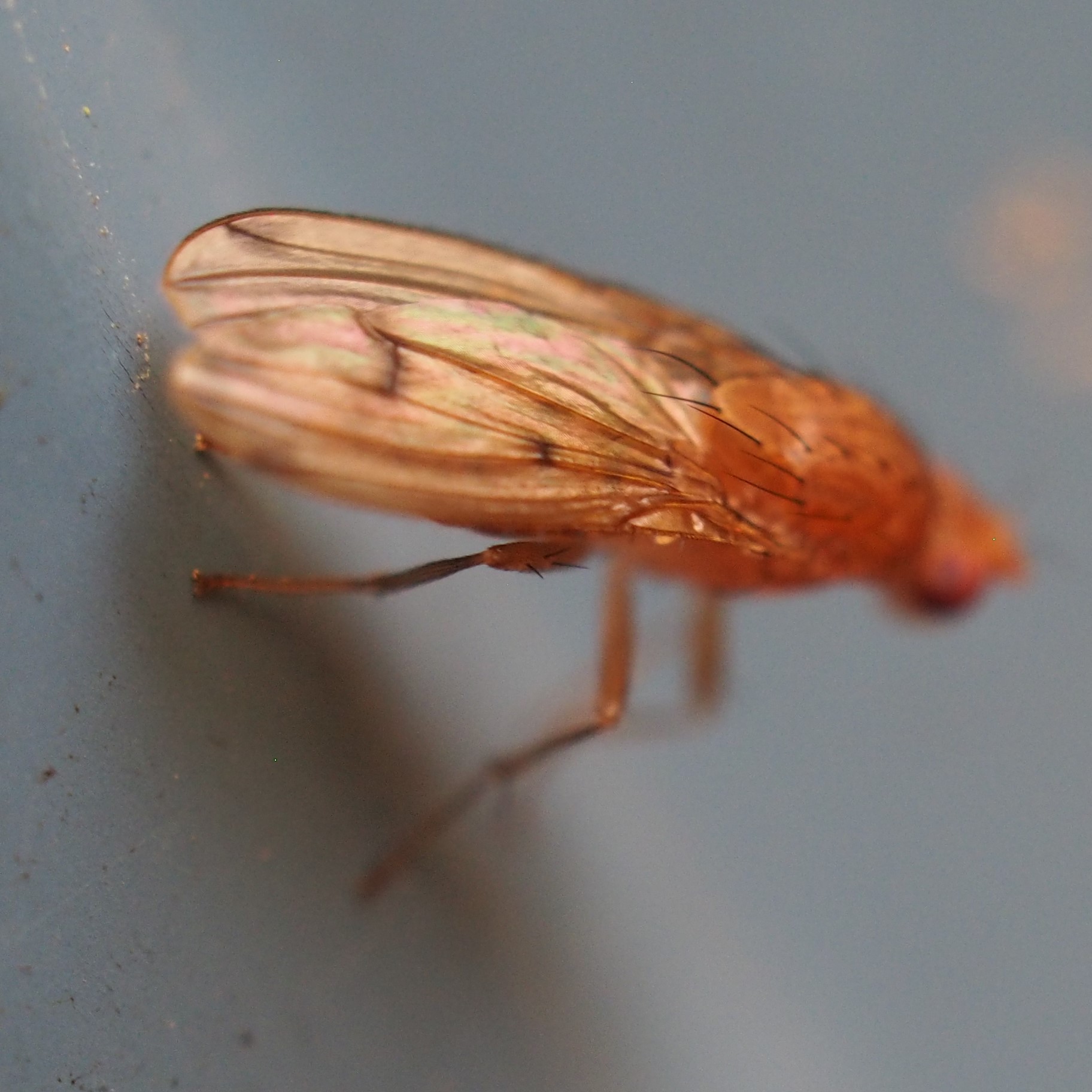
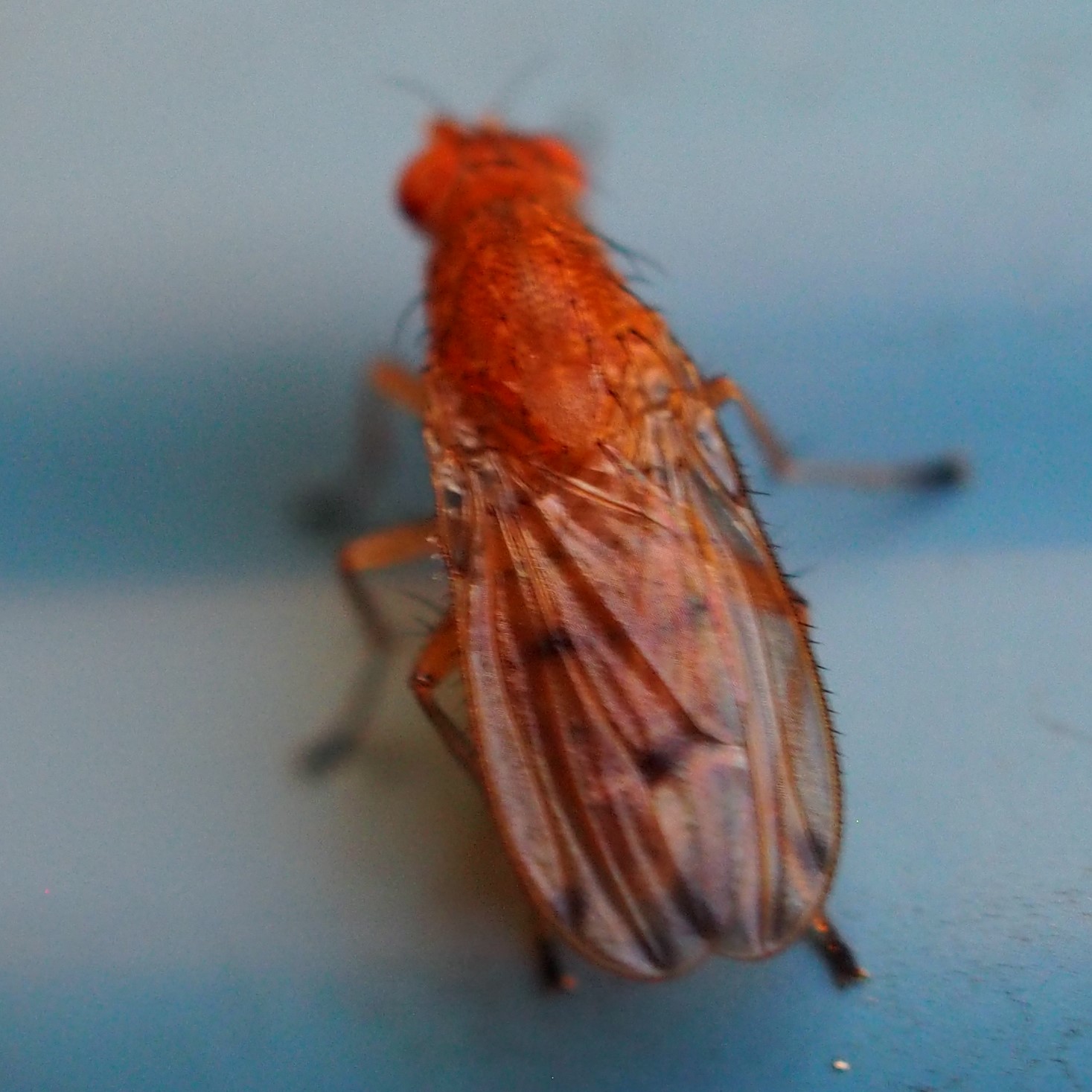
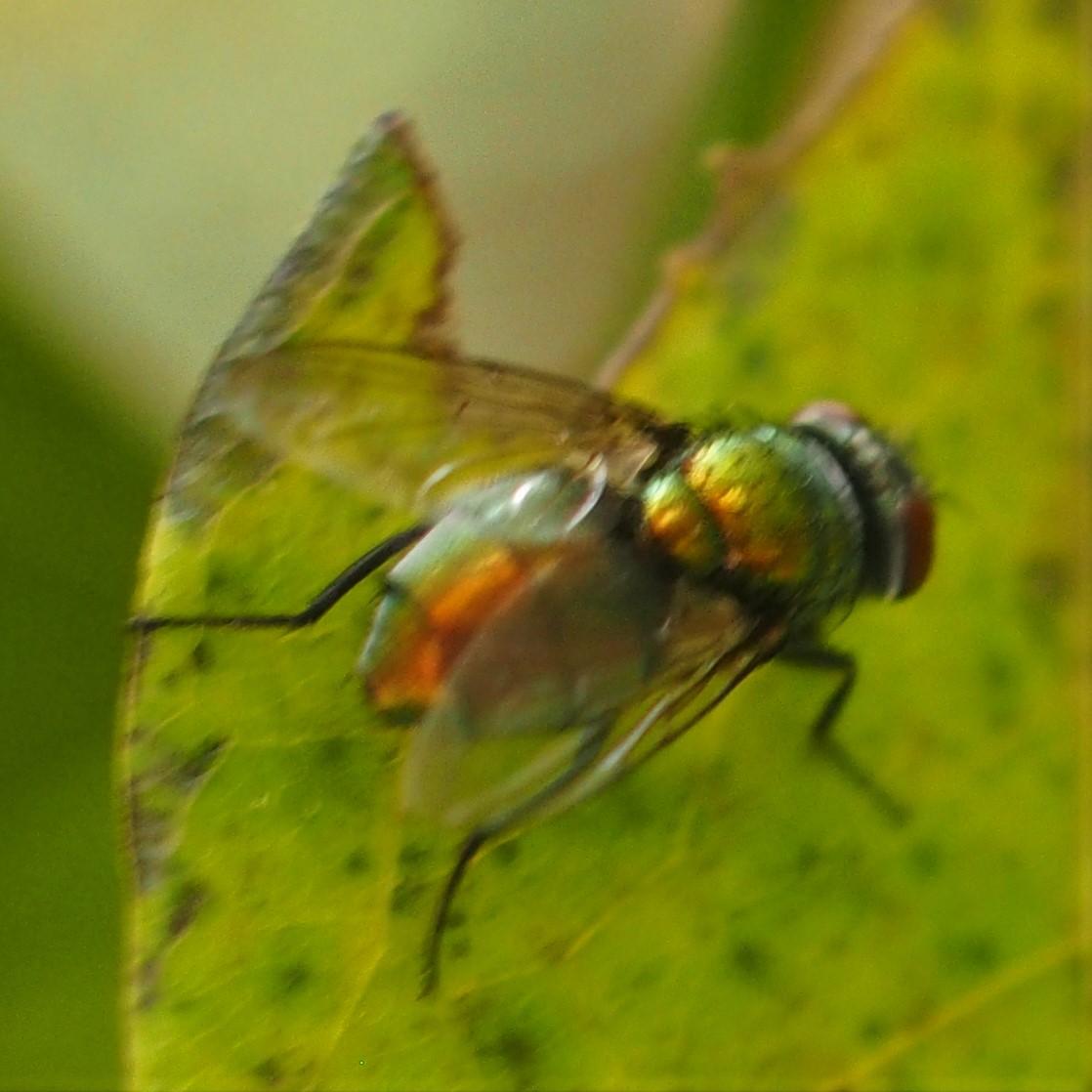
We continue to see Hover Flies. This first one is Complex Eupeodes americanus. Then we have two sightings of the lovely little Toxomerus geminatus.
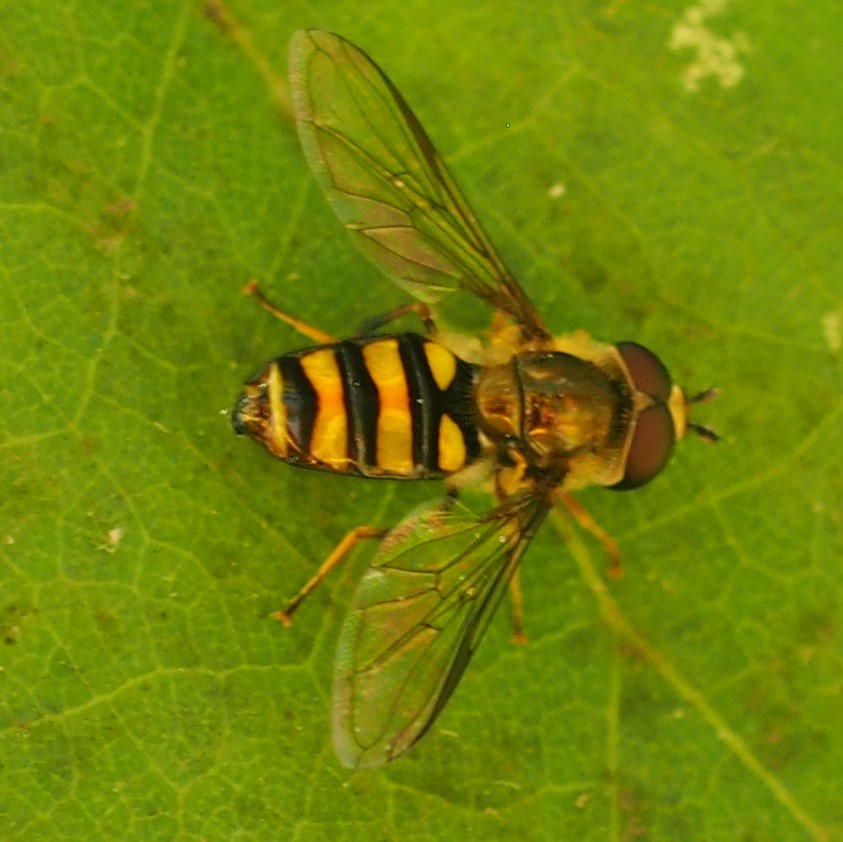
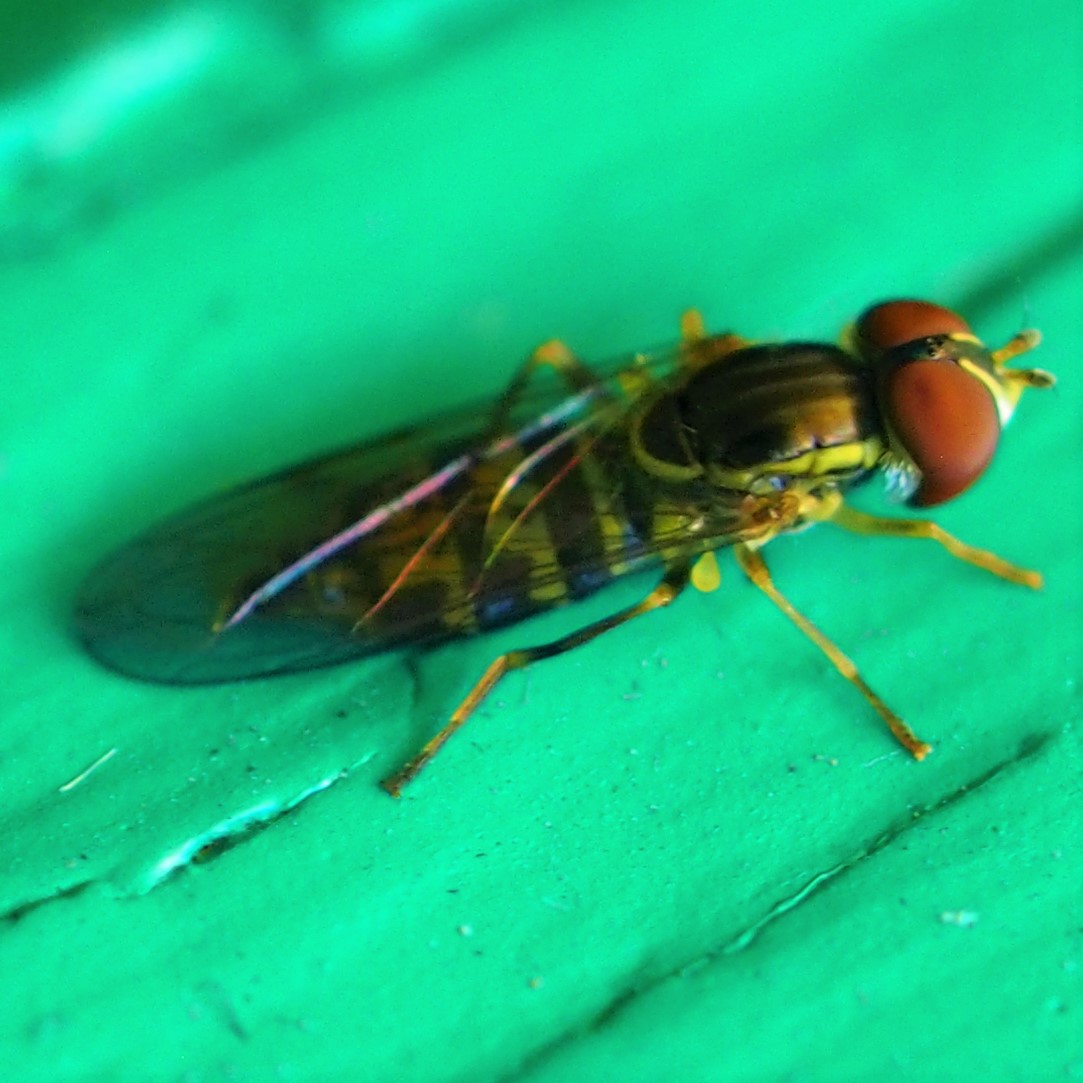
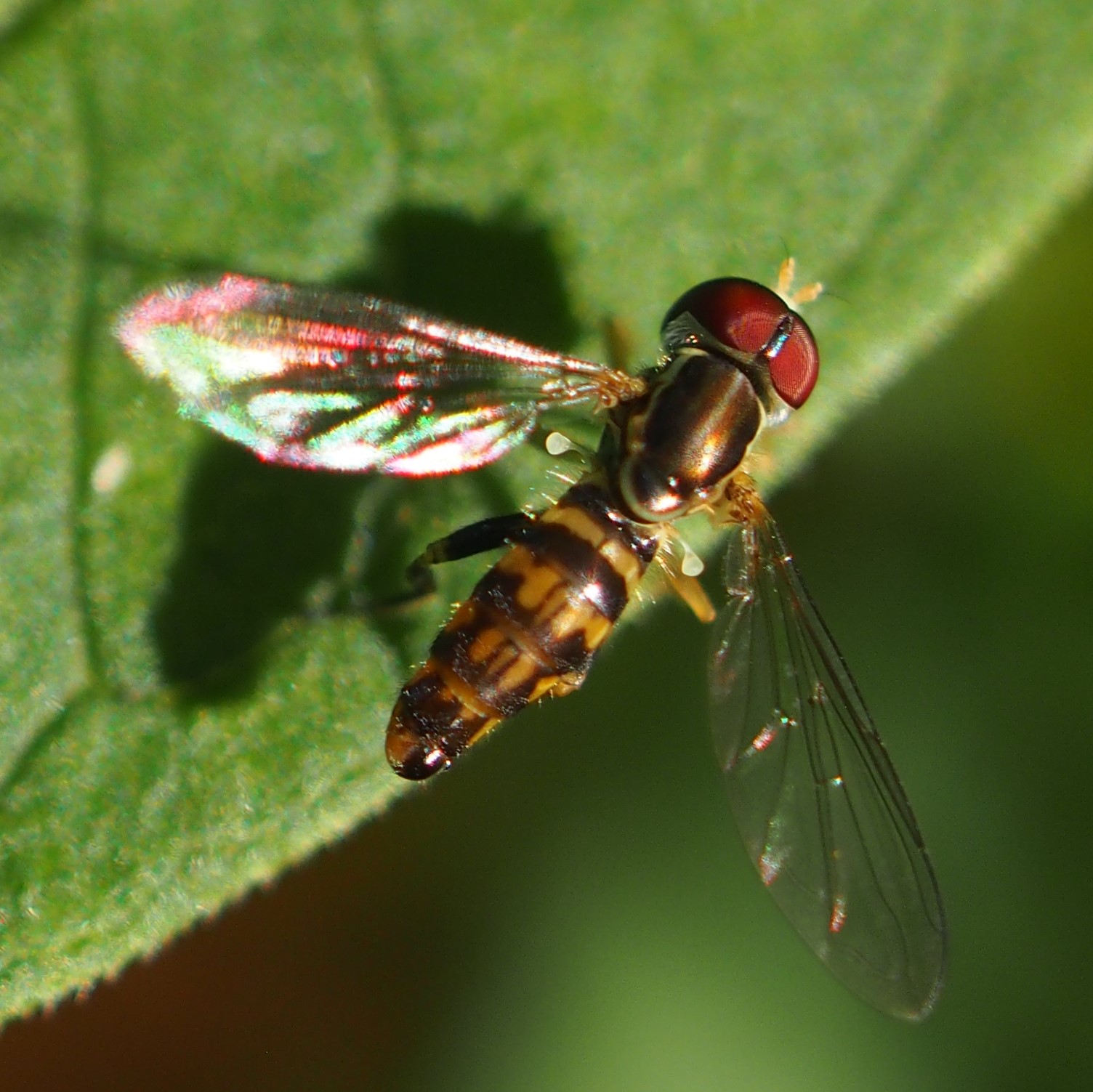
I THINK we had two different kinds of Lacewings (genus Micromus). For sure we had M. posticus (pictures 1 and 2), and possibly another species (pictures 3 and 4).
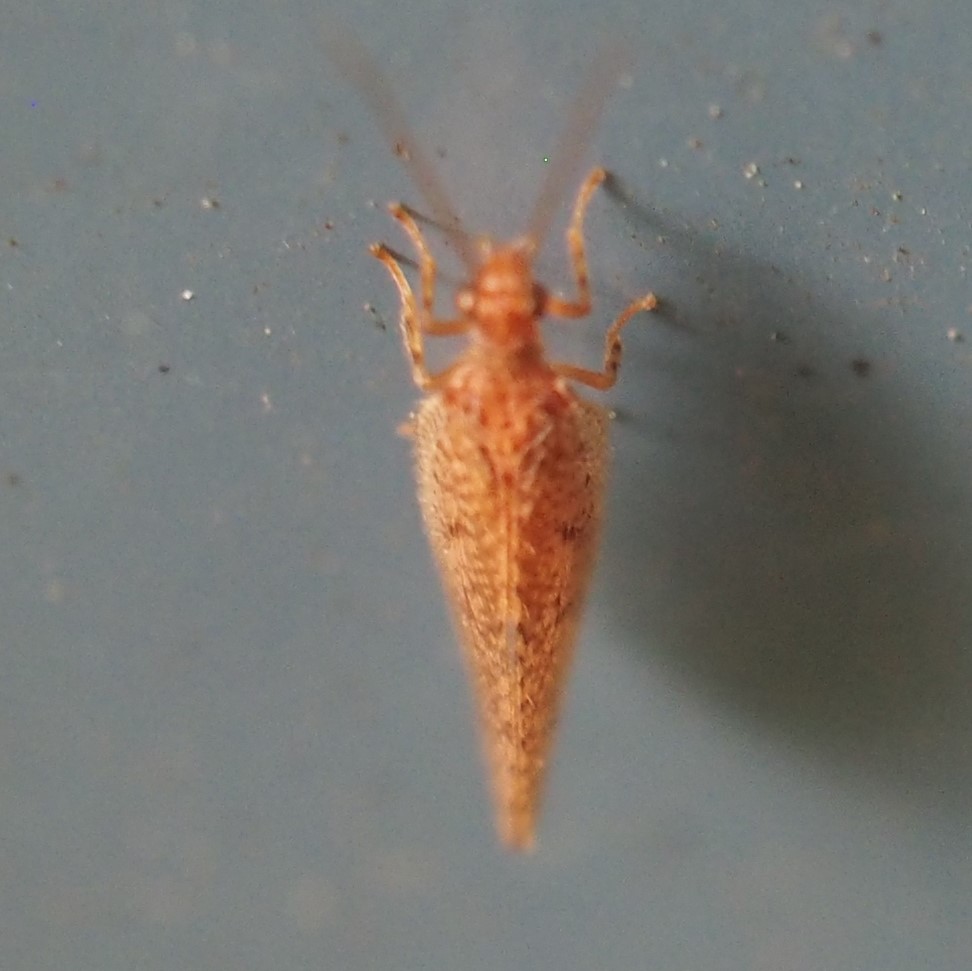
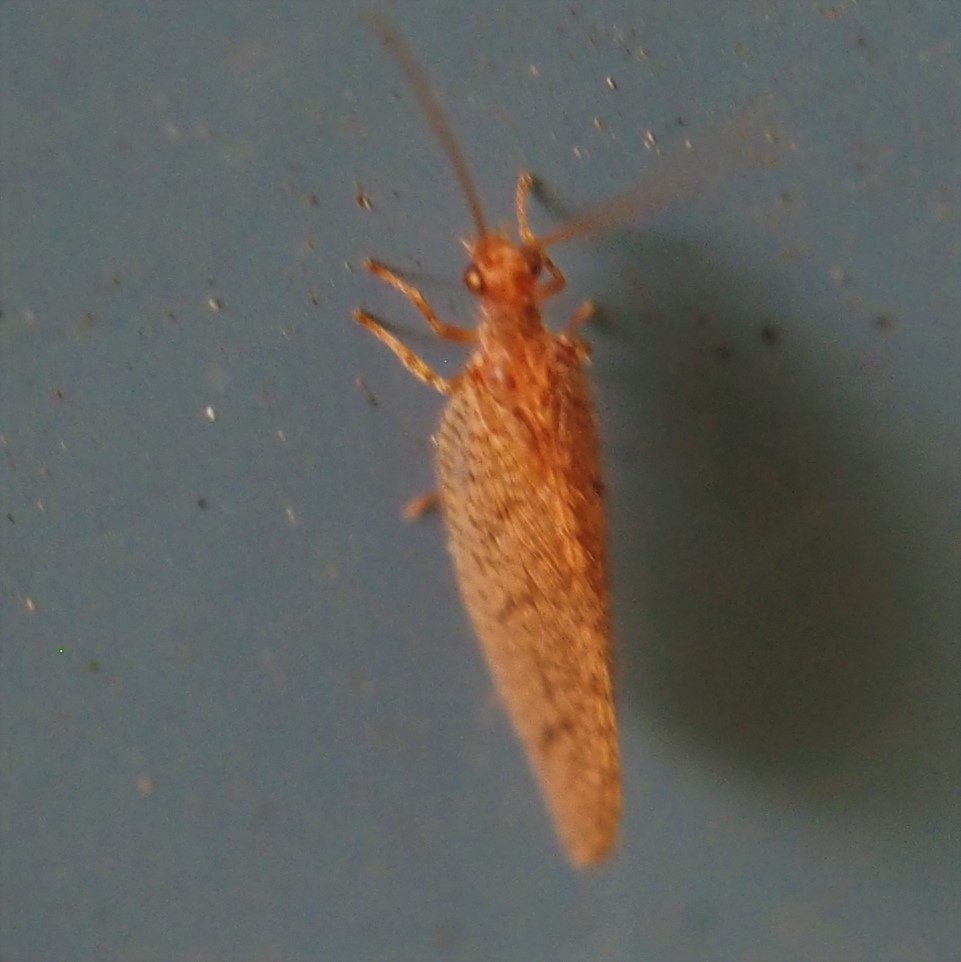
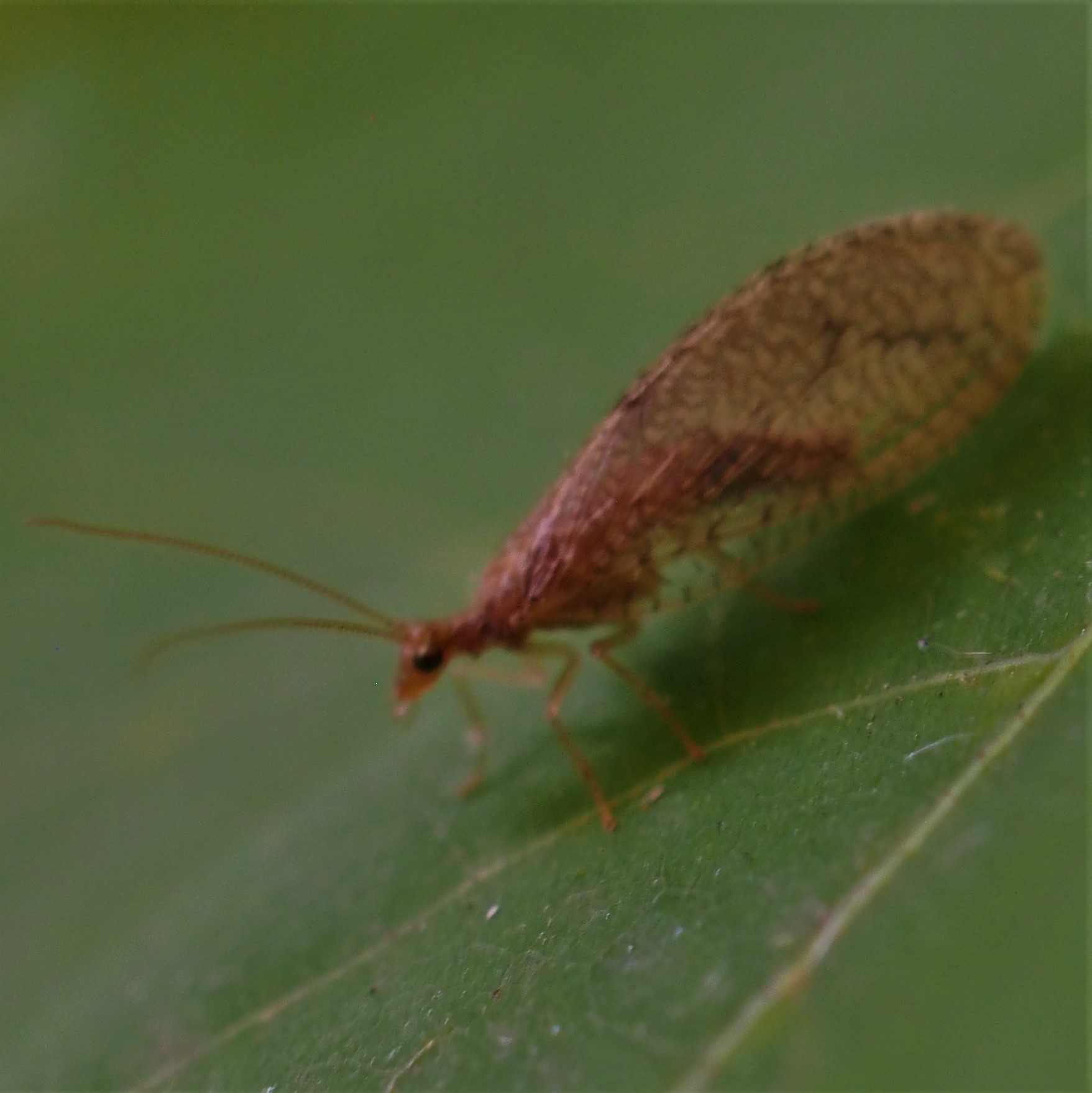
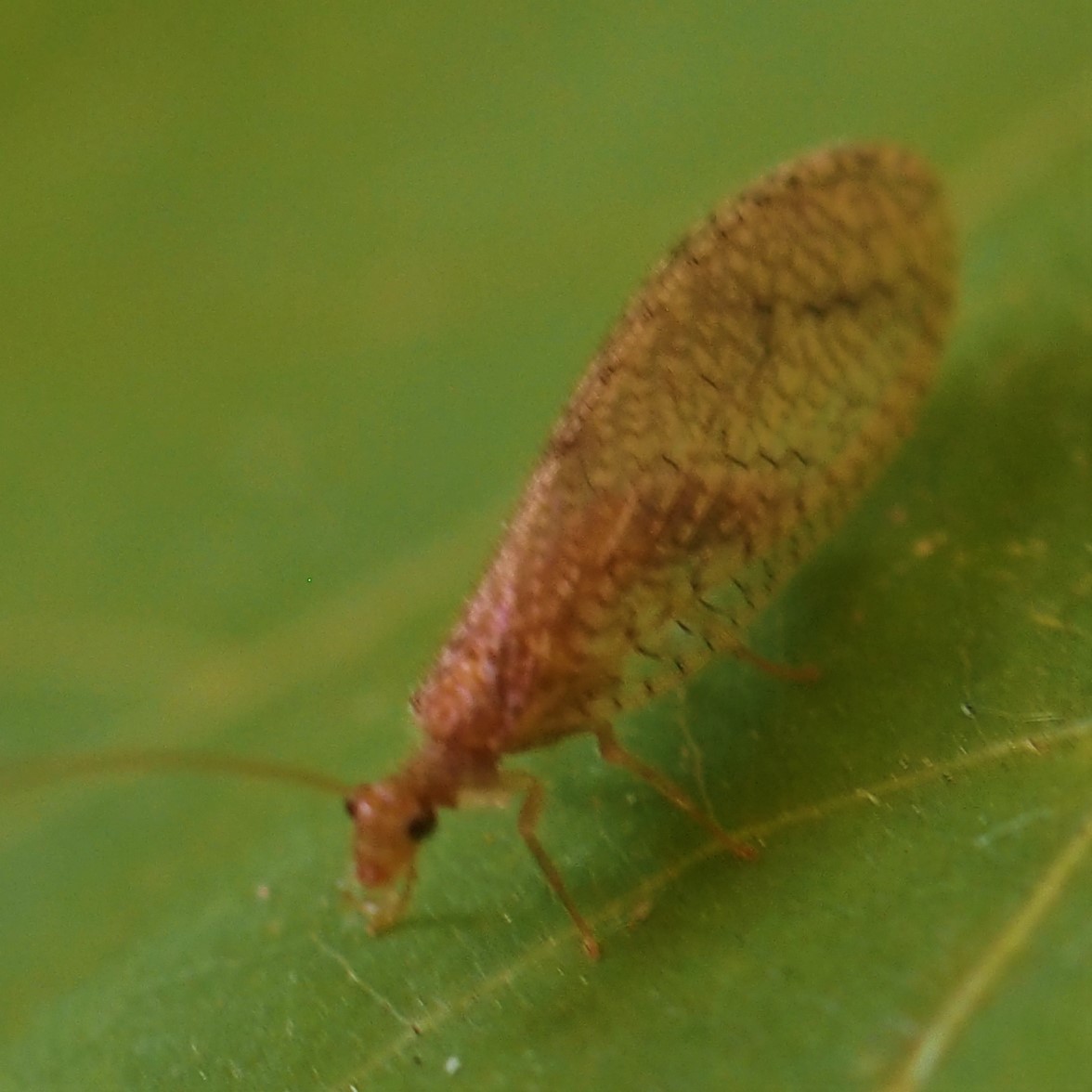
Those Pug Moth caterpillars are still out there - a bit different from the ones we saw last week. And here's a little Looper (Inchworm).
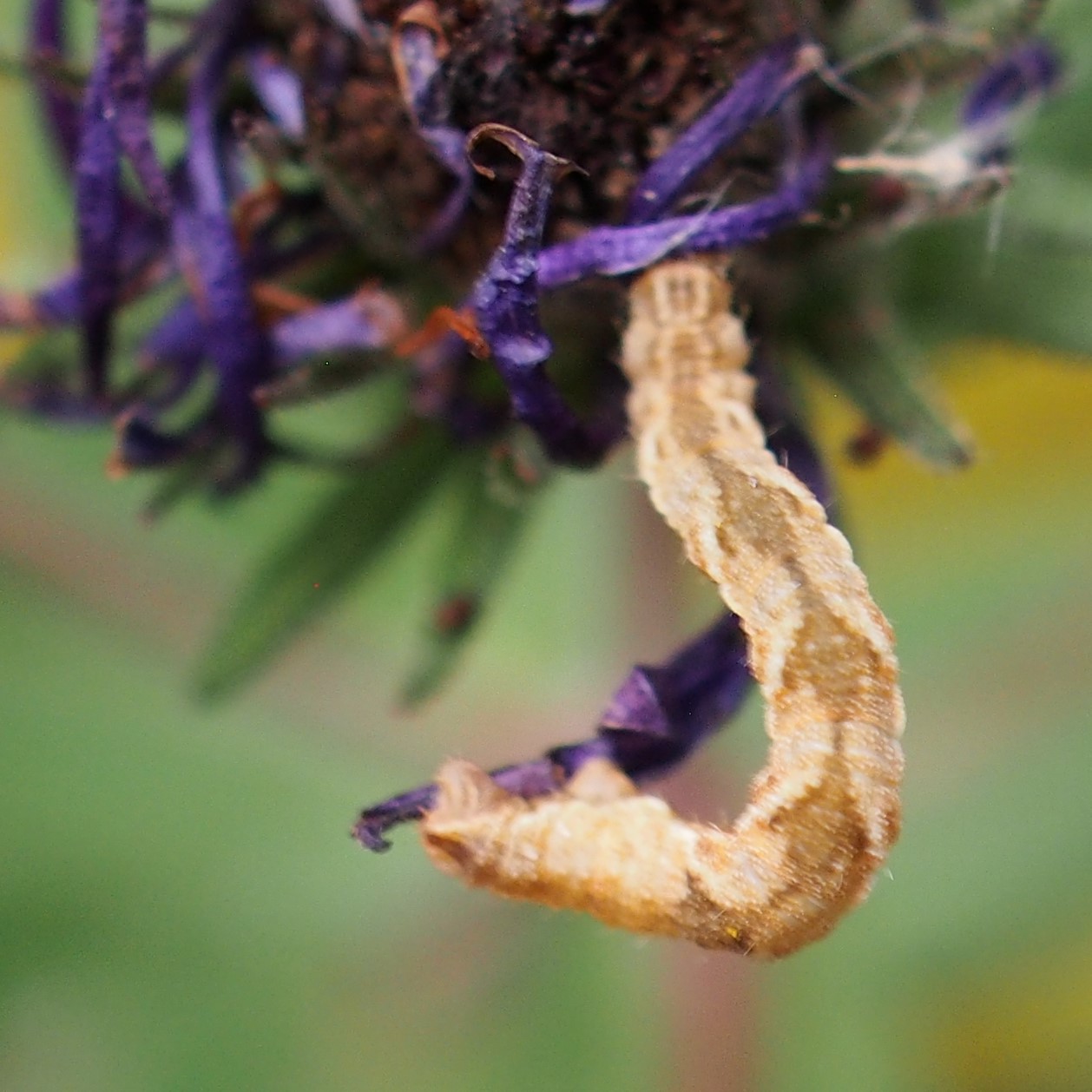

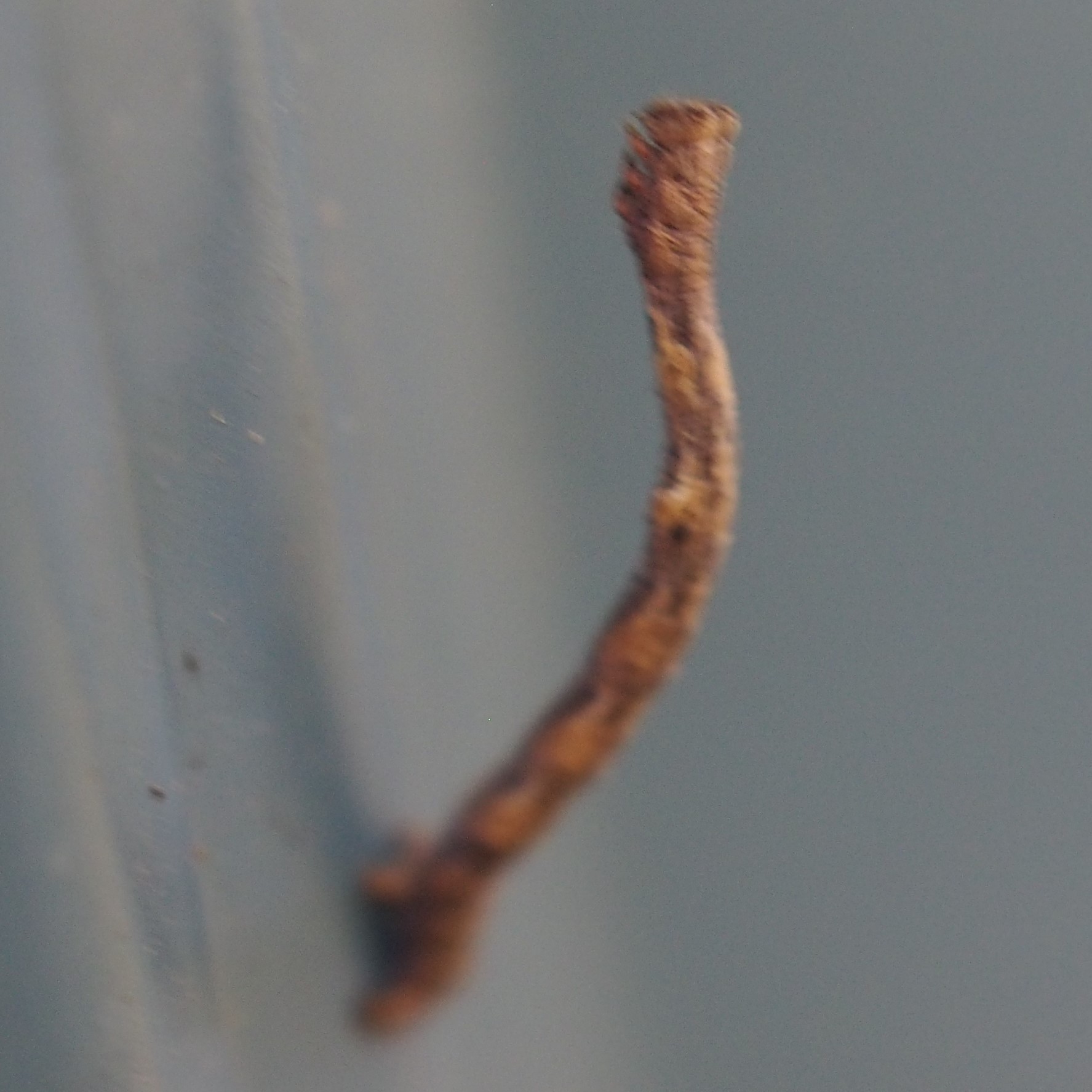
Time to do a Color Walk? As usual for now, let's see some of that remaining yellow Goldenrod! And the Asters that are still winding down.

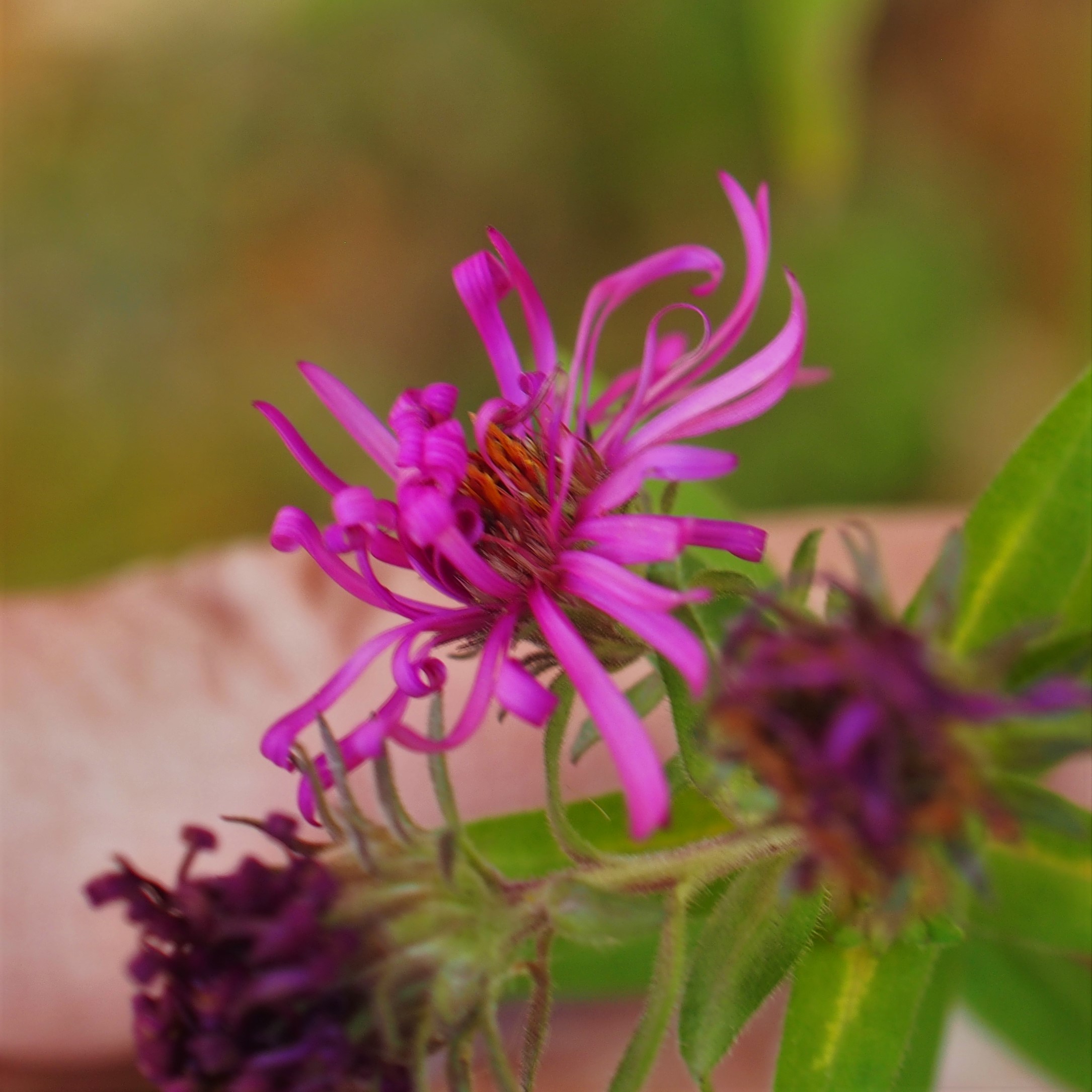
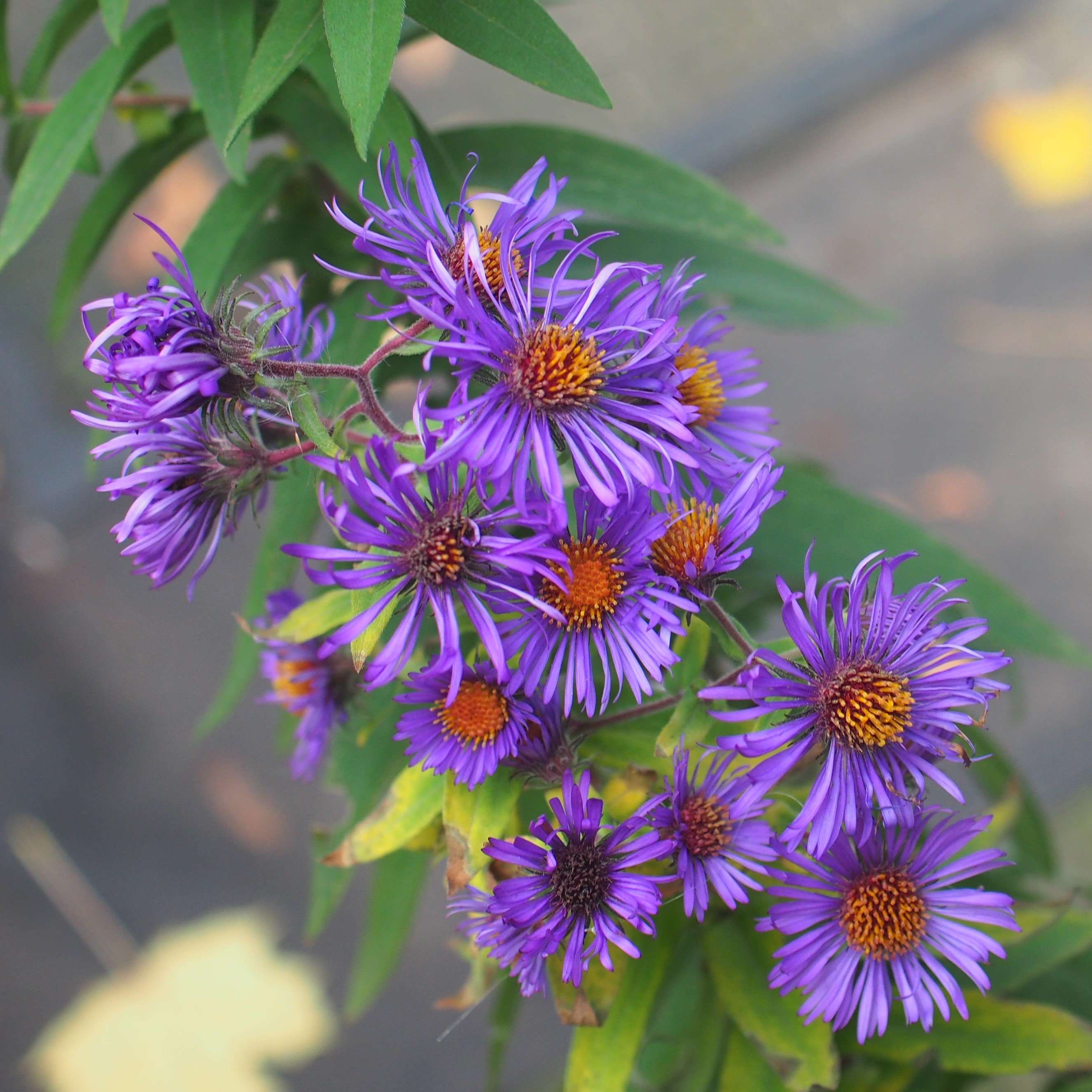
The white Fleabane is still alive. The third little white Flower is actually the Honesty (otherwise known as Money Plant) that usually is one of the first flowers blooming in the Spring, blooming now VERY much out of season. The last picture shows it on May 4th this year.

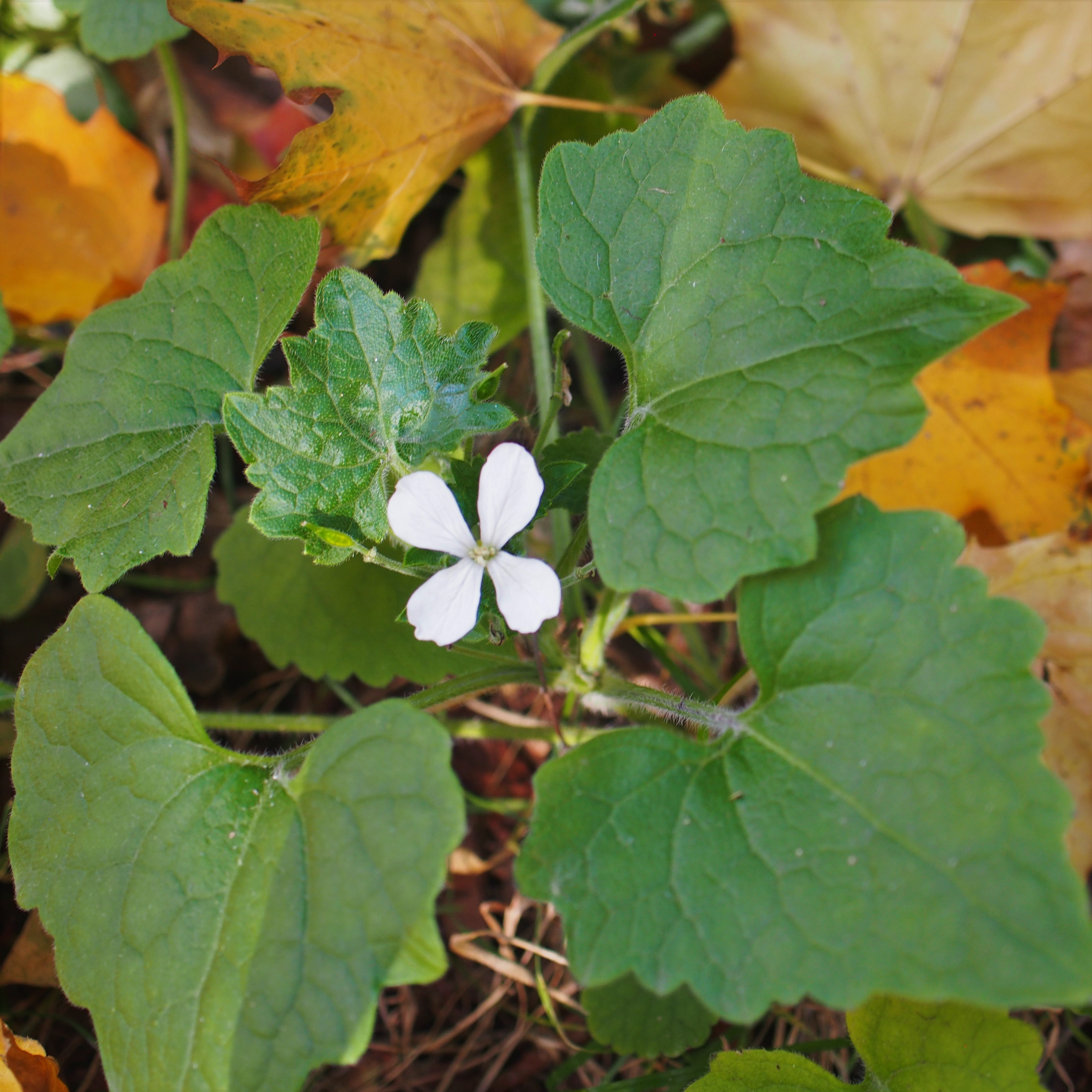
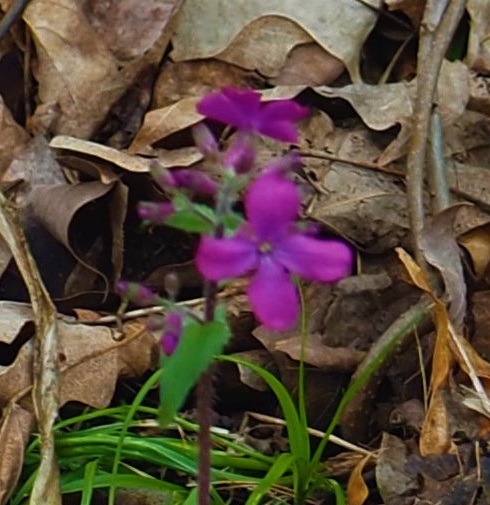
The Dogwood is still "blooming" in the sense of "very colorful"! And the Coral Berries and Snowberries are also showing their winter colors already.
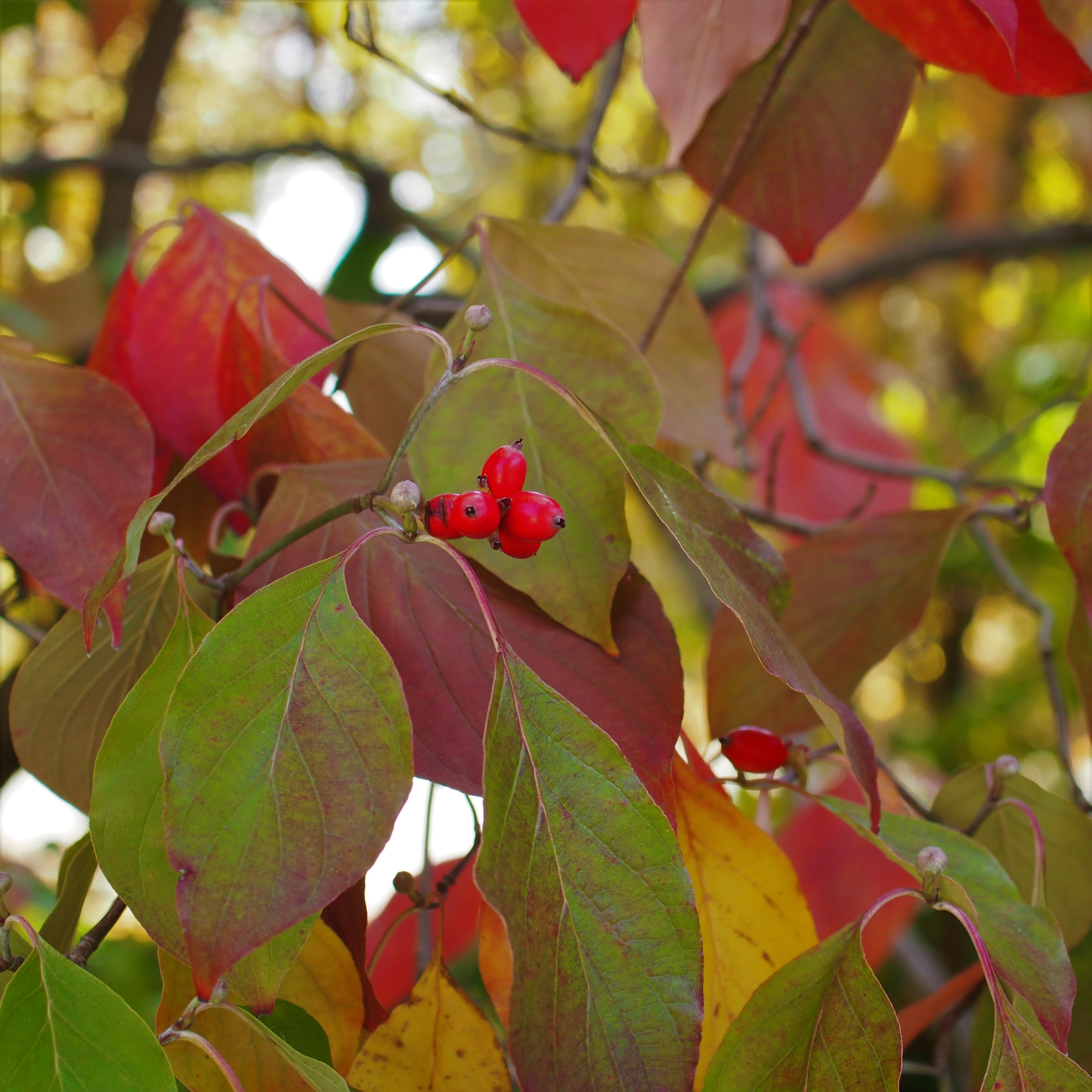
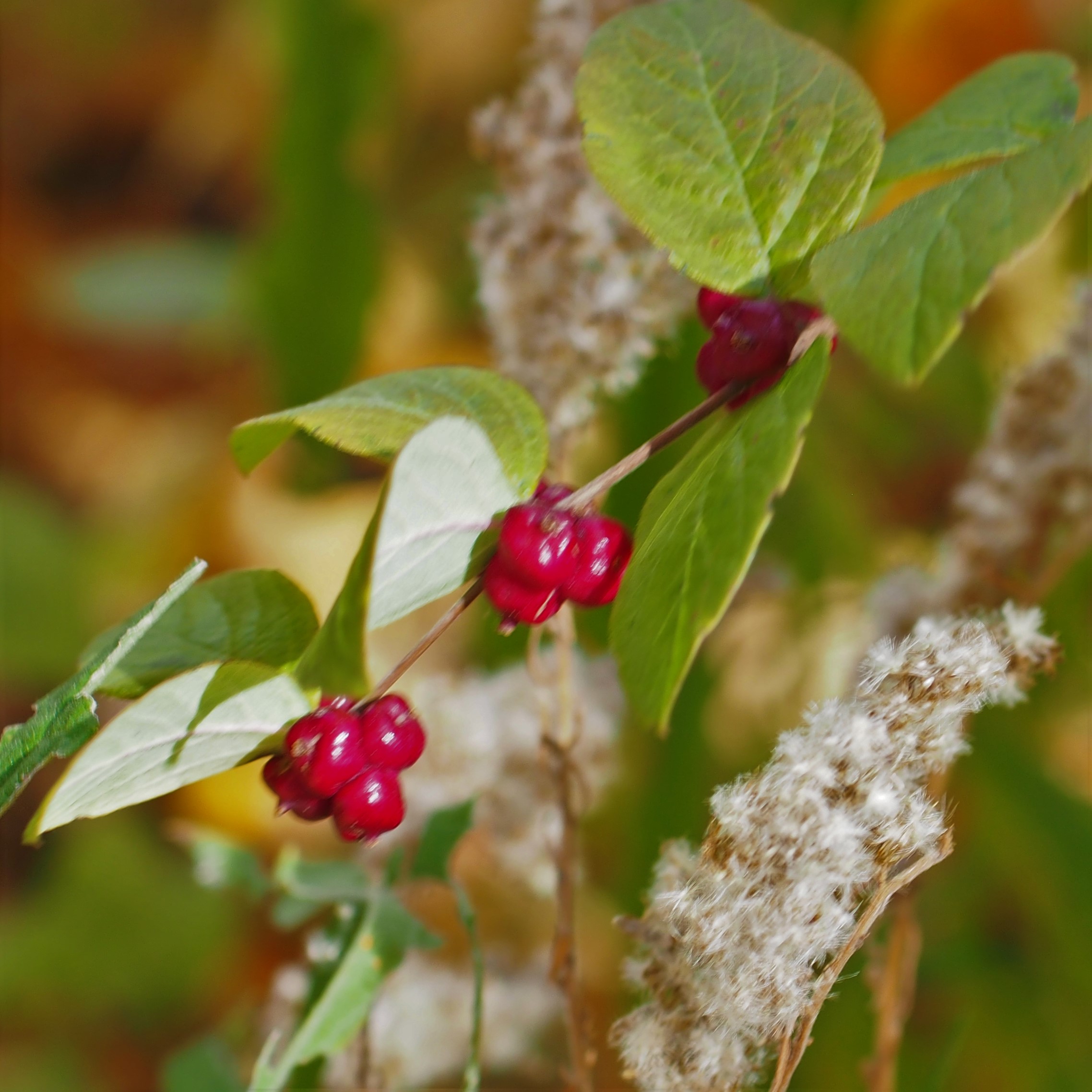
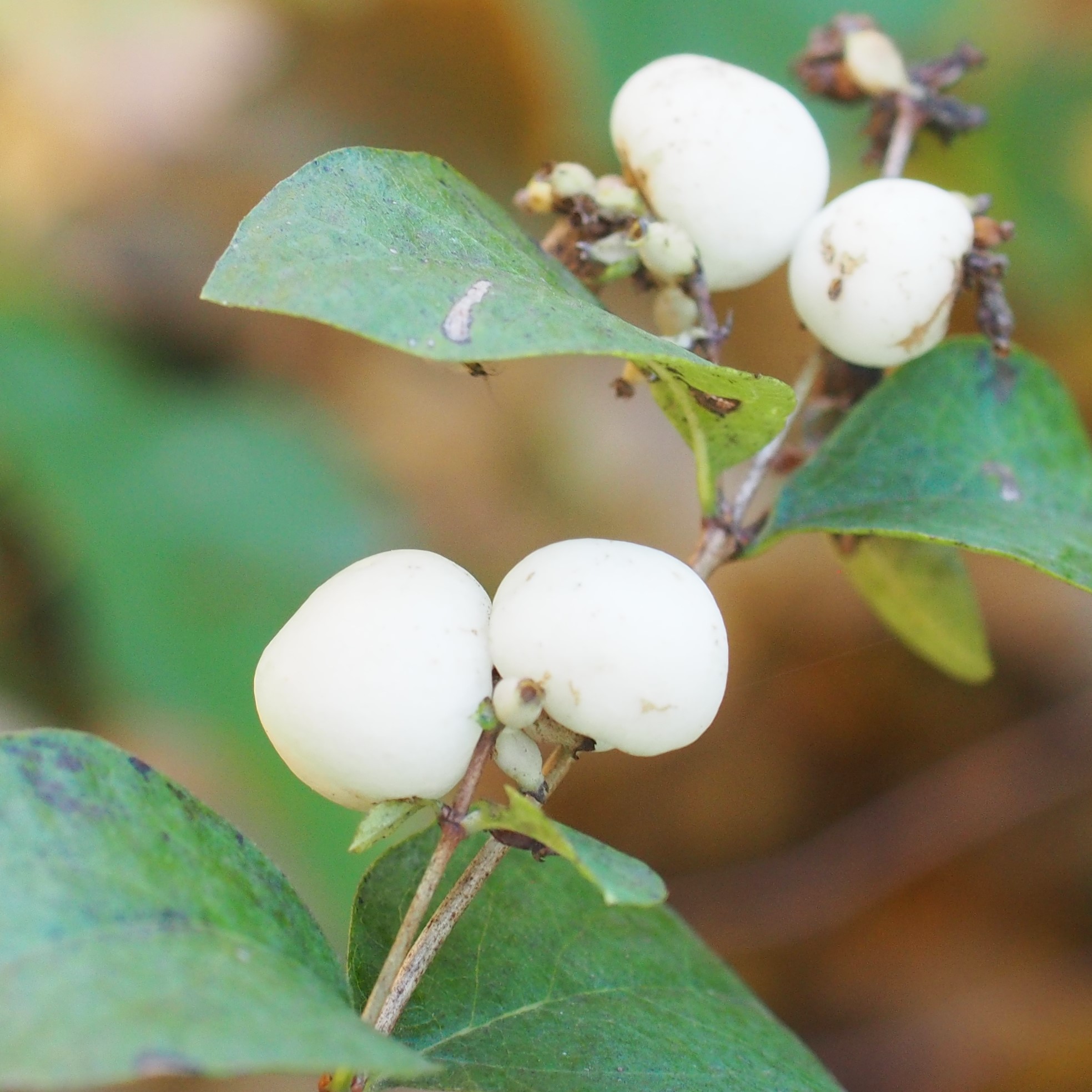
In the afternoon, the South Wall plays host to some lovely shadows. The Euonymus in front of the house is peaking. And since there aren't many leaves on the trees, here are a big collection of them in the pond, weighing down the leaf net. (I went out shortly after taking this picture and emptied it again.)

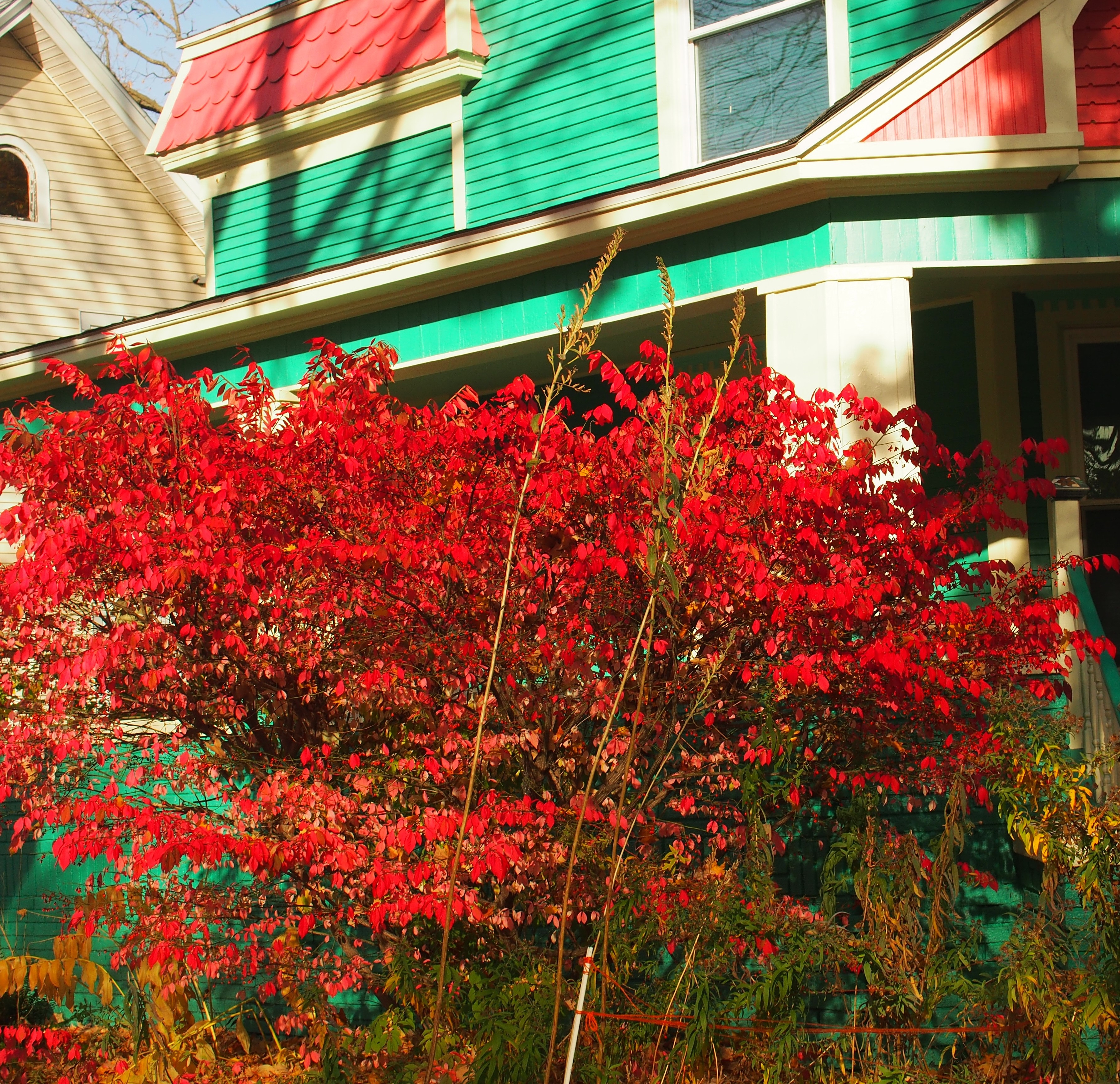
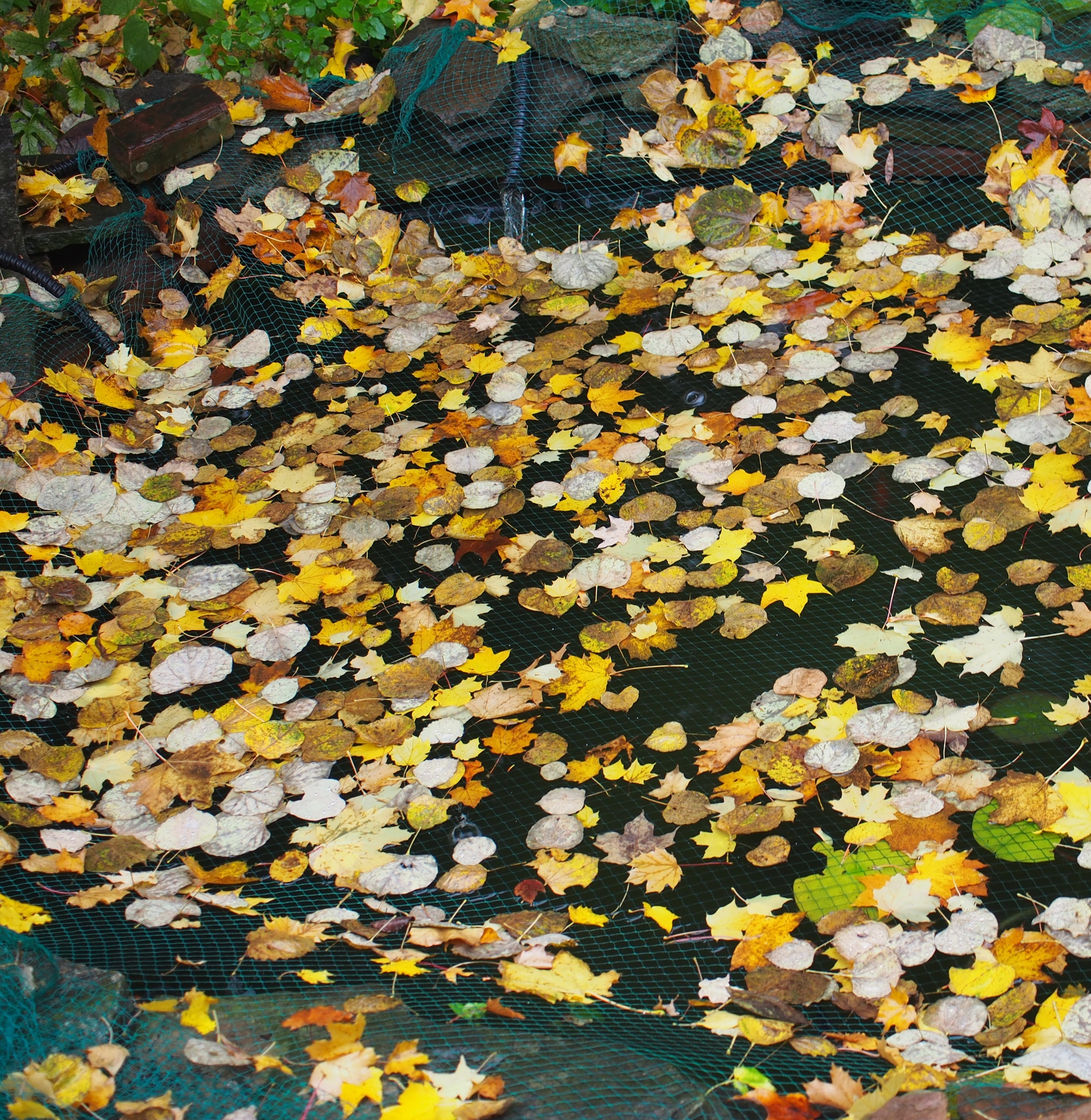
The front yard sports some of the Green color group: the Hellebore and two kinds of Ferns fit in handily.
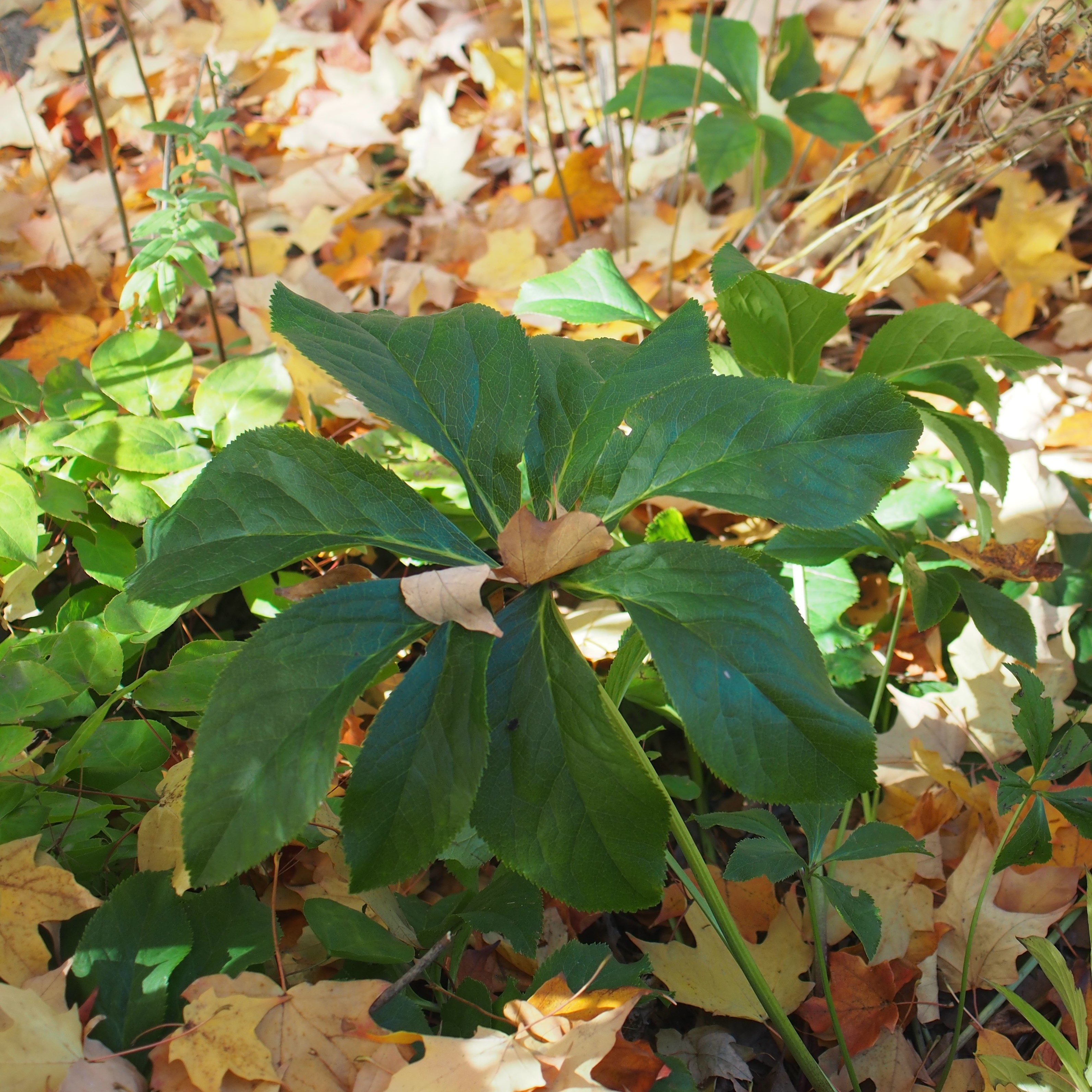
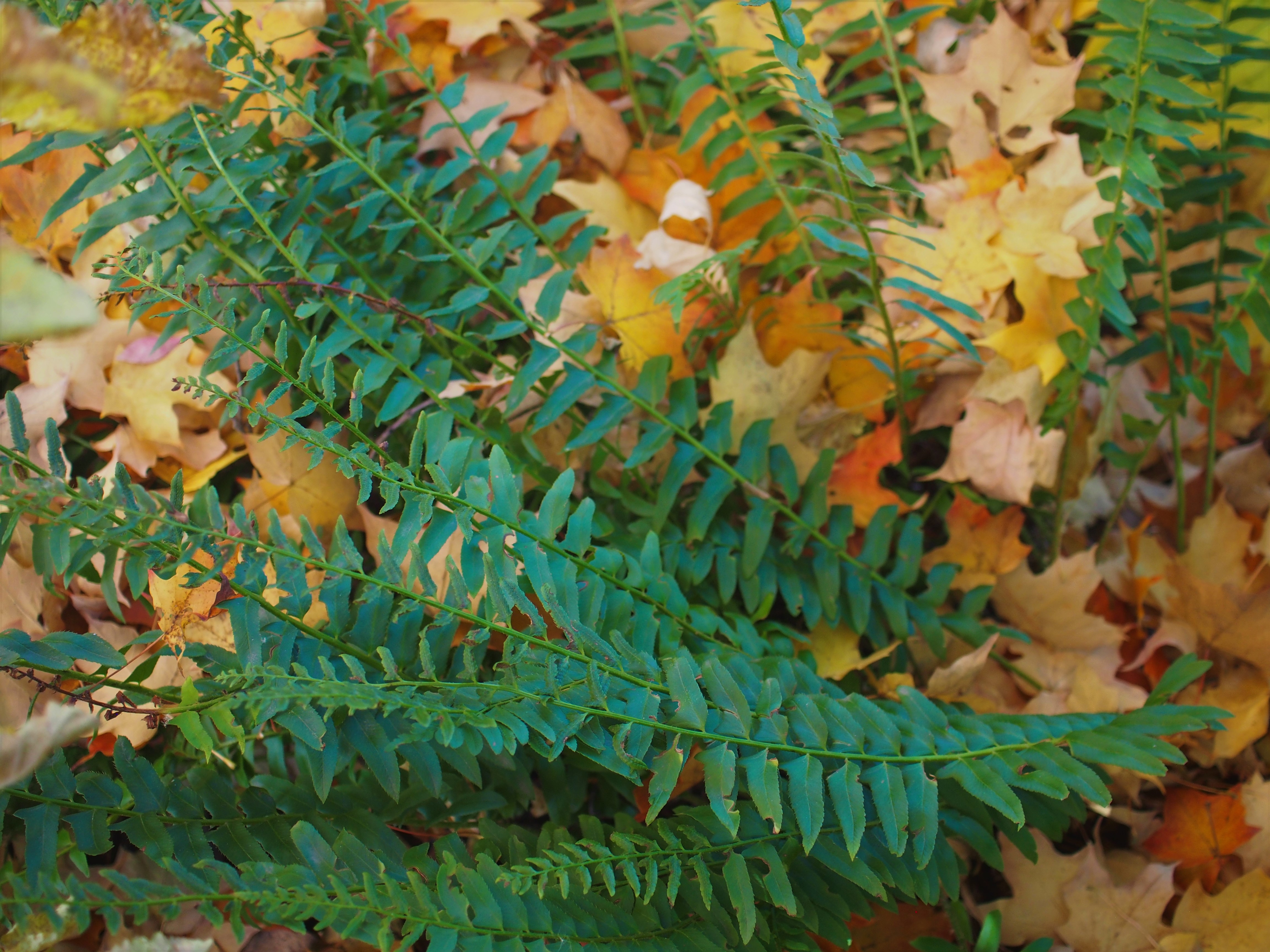
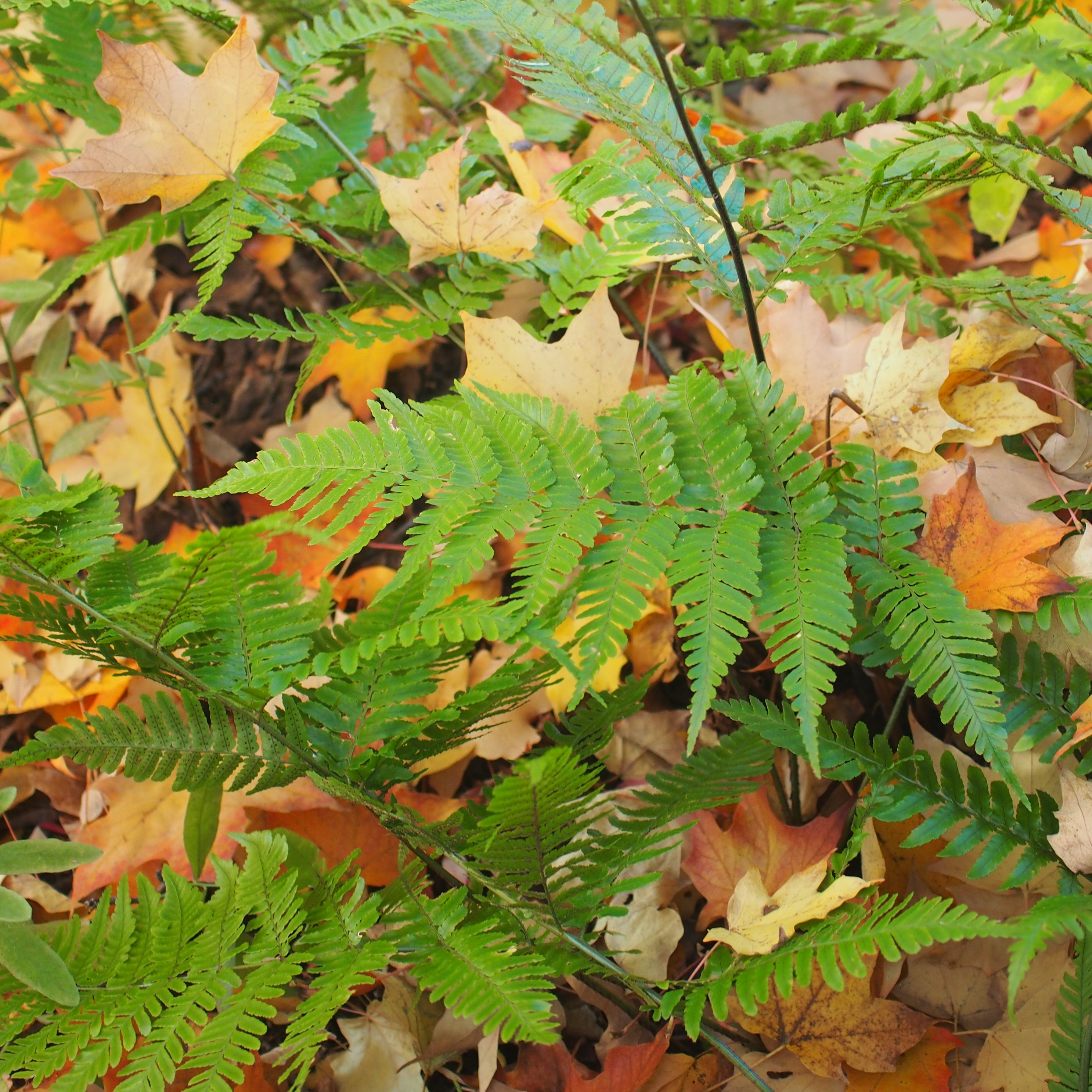
The Color Walk ended, we start to want to visit our Spider collection. There are quite a few little Crab Spiders. Here we see three kinds. The first is a Northern Crab Spider. I especially like the little face on the middle one.
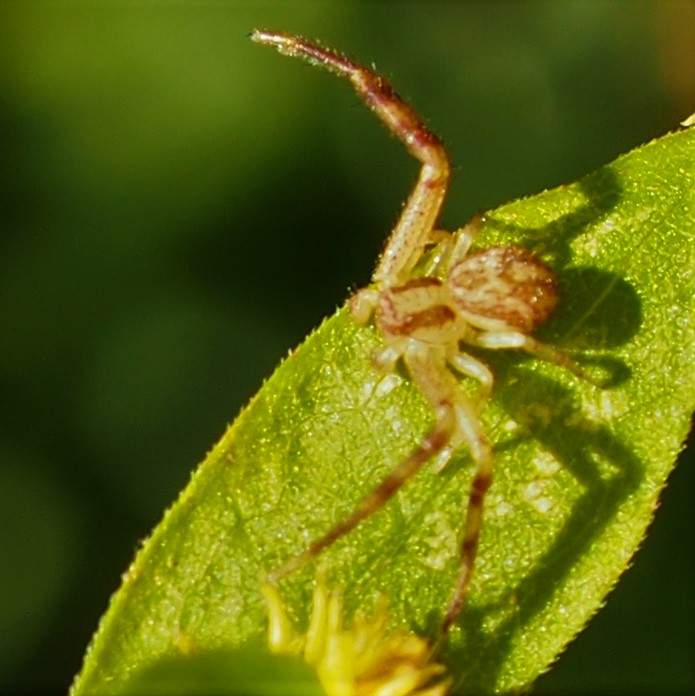
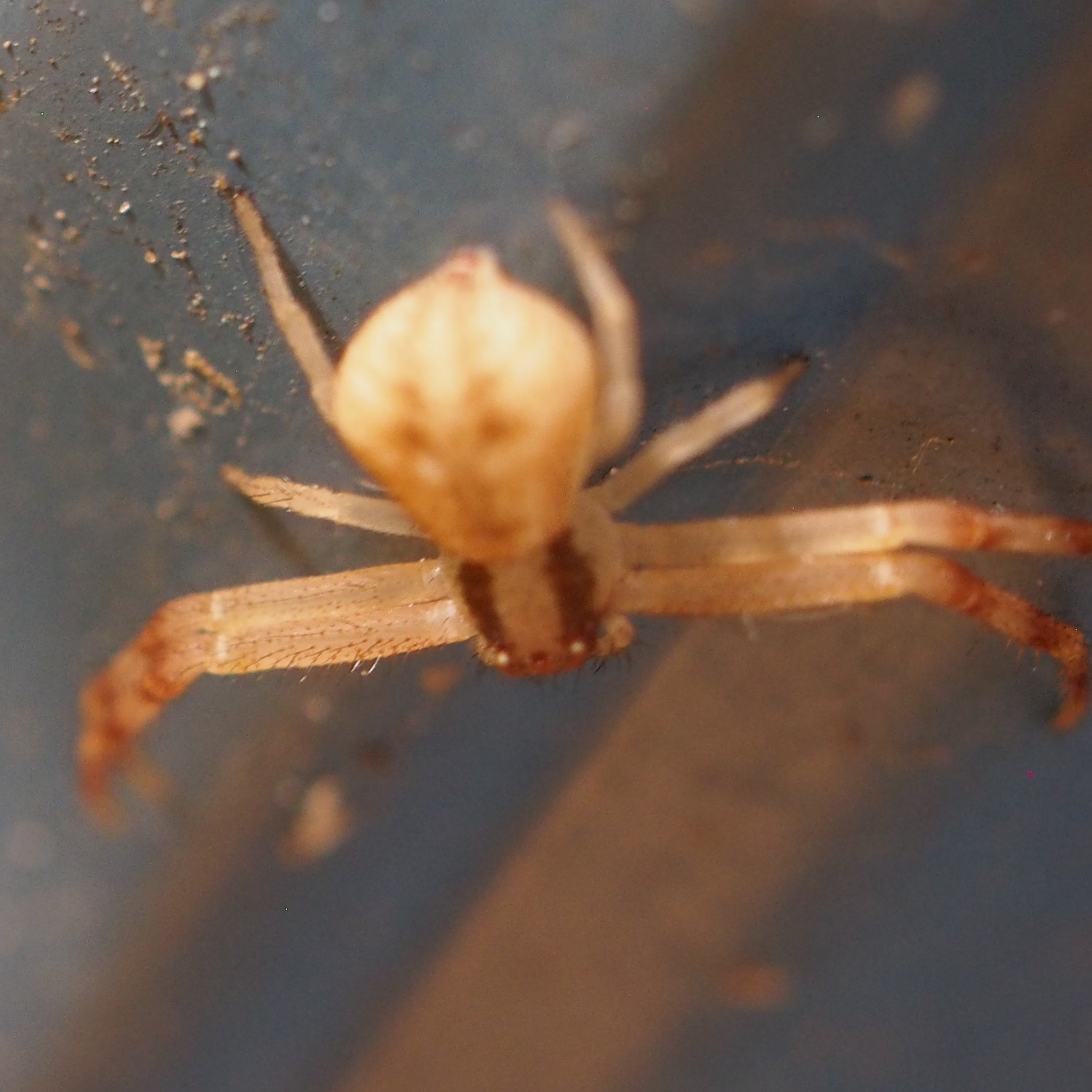
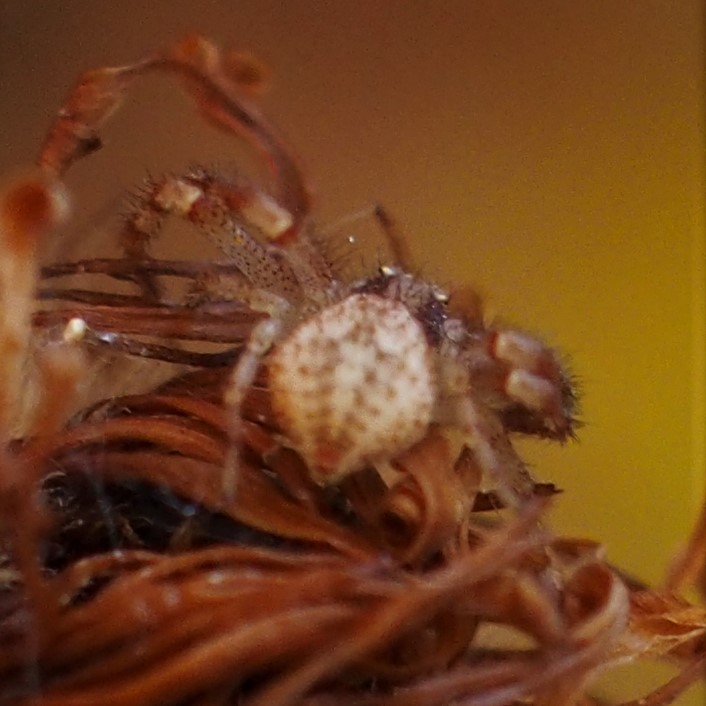
I keep thinking I'm seeing a new kind of Long-jawed Jumping Spider (genus Hentzia), but have trouble differentiating them from each other. They vary so much in maturity vs juventude.
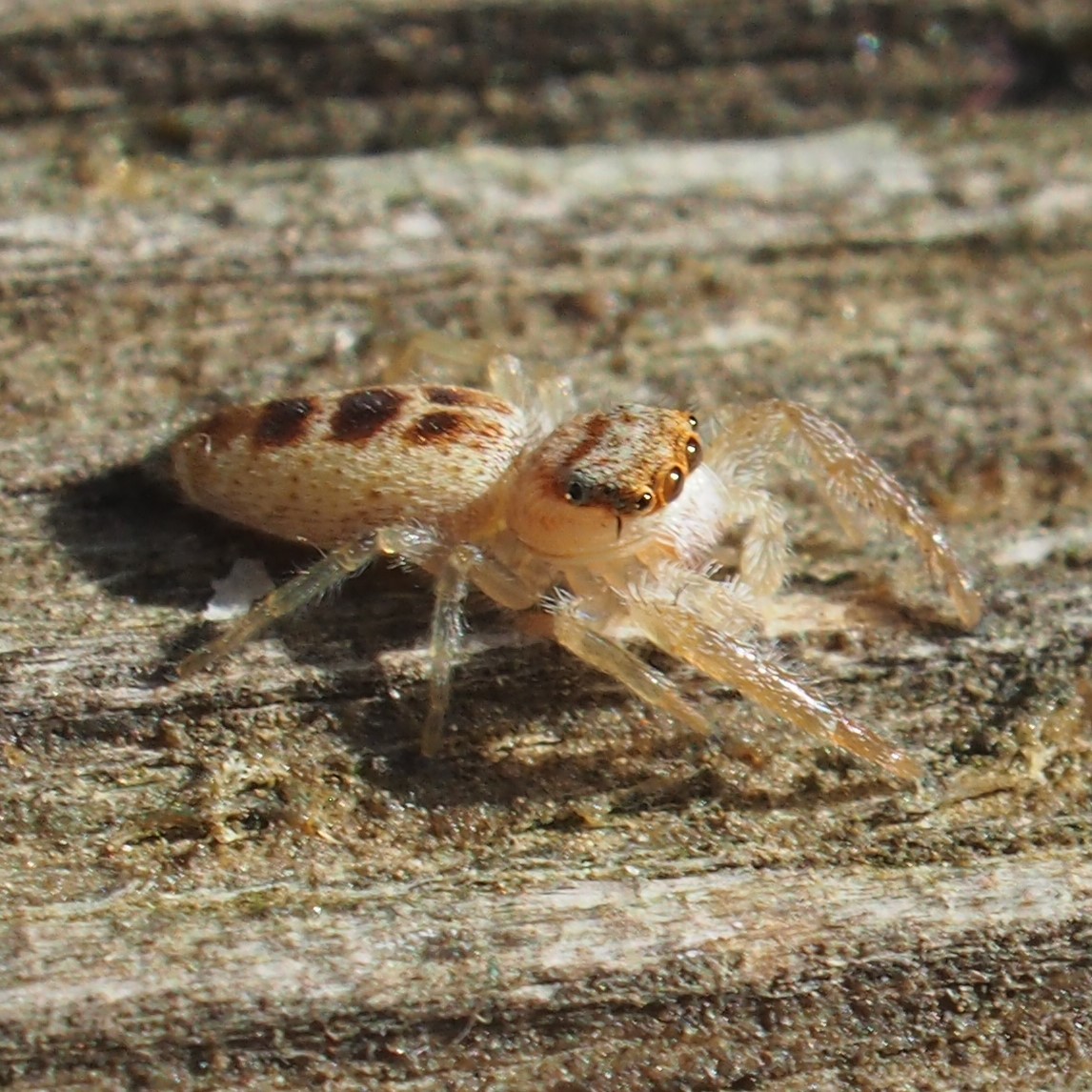
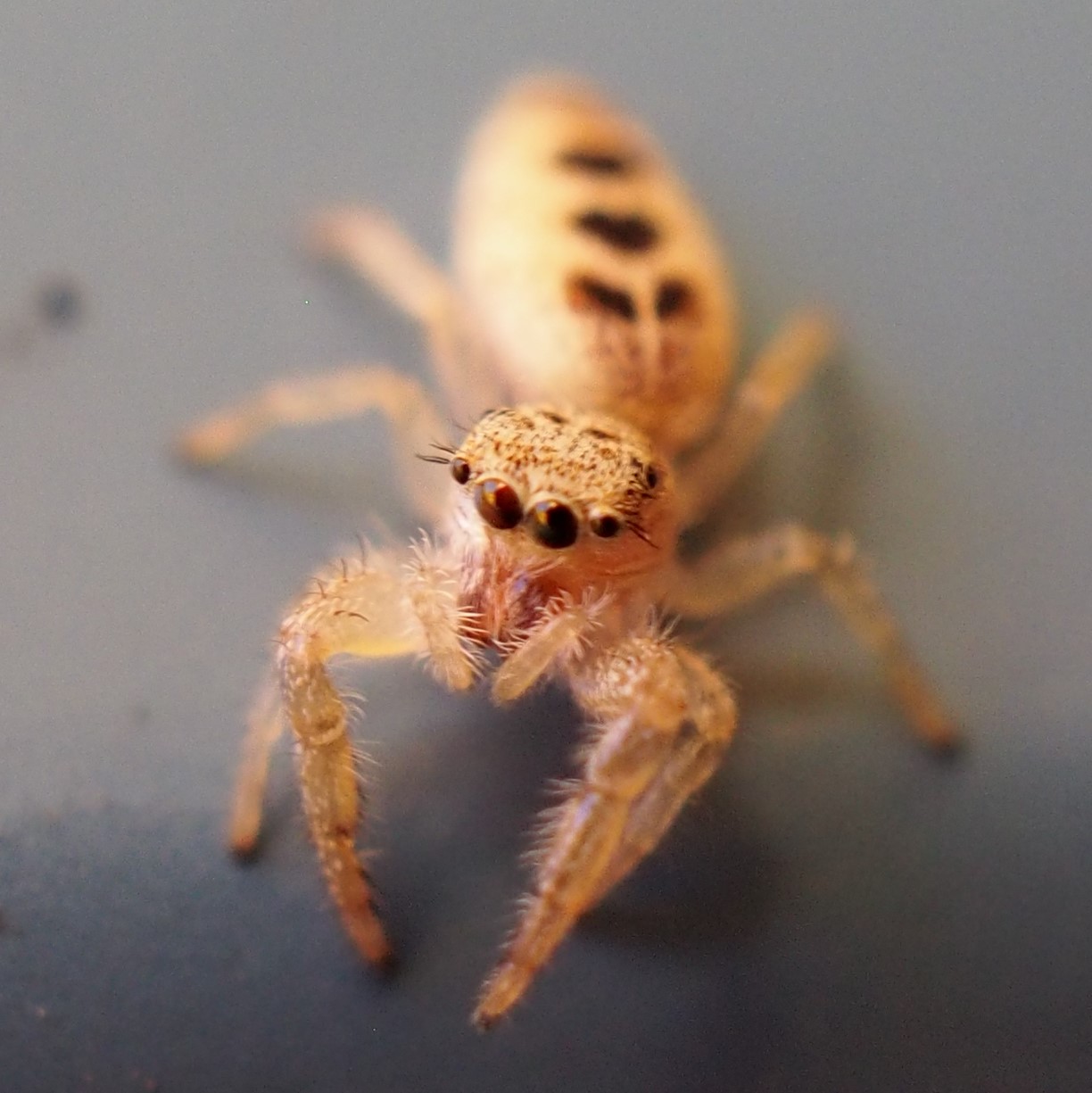
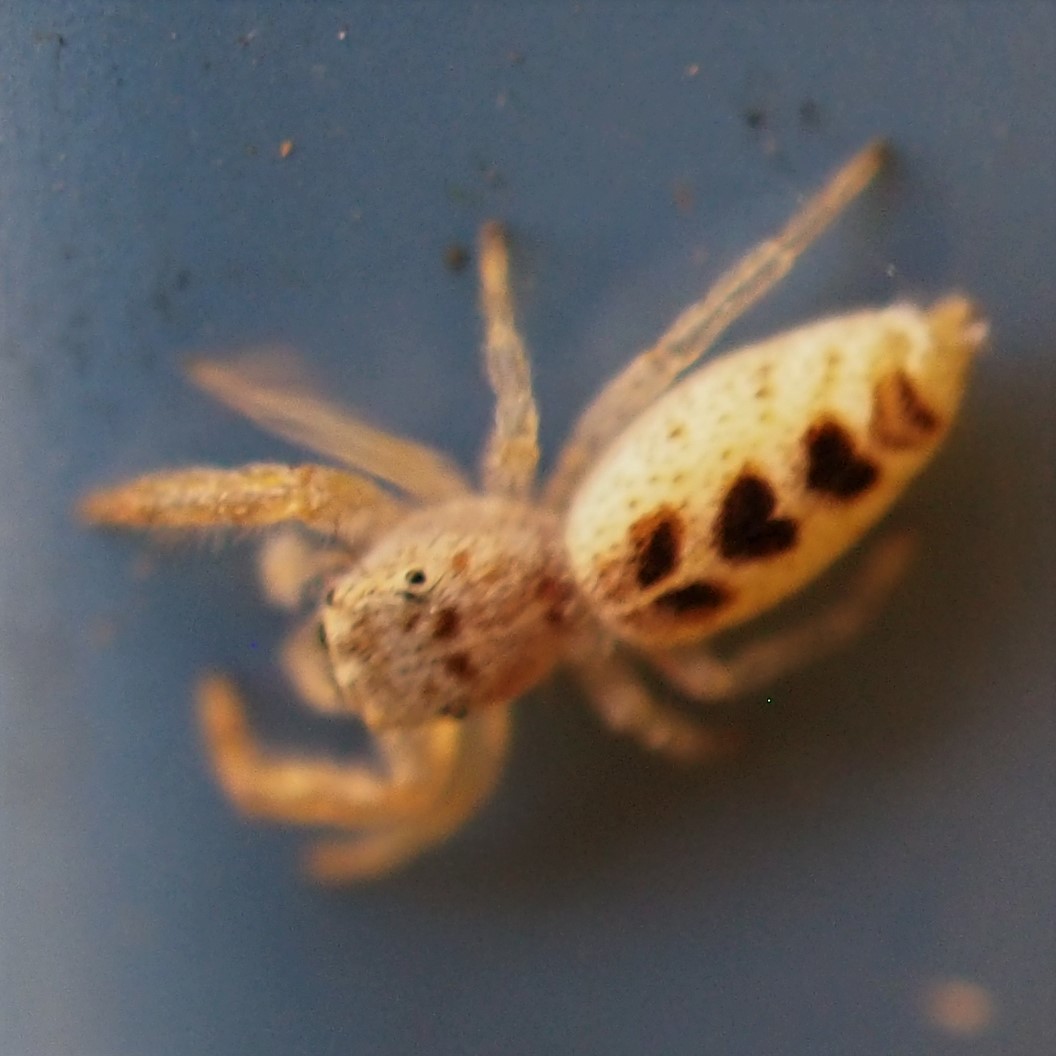
This tiny upside-down Spider is a mystery to me. Here are three views, one of which is upside-right.
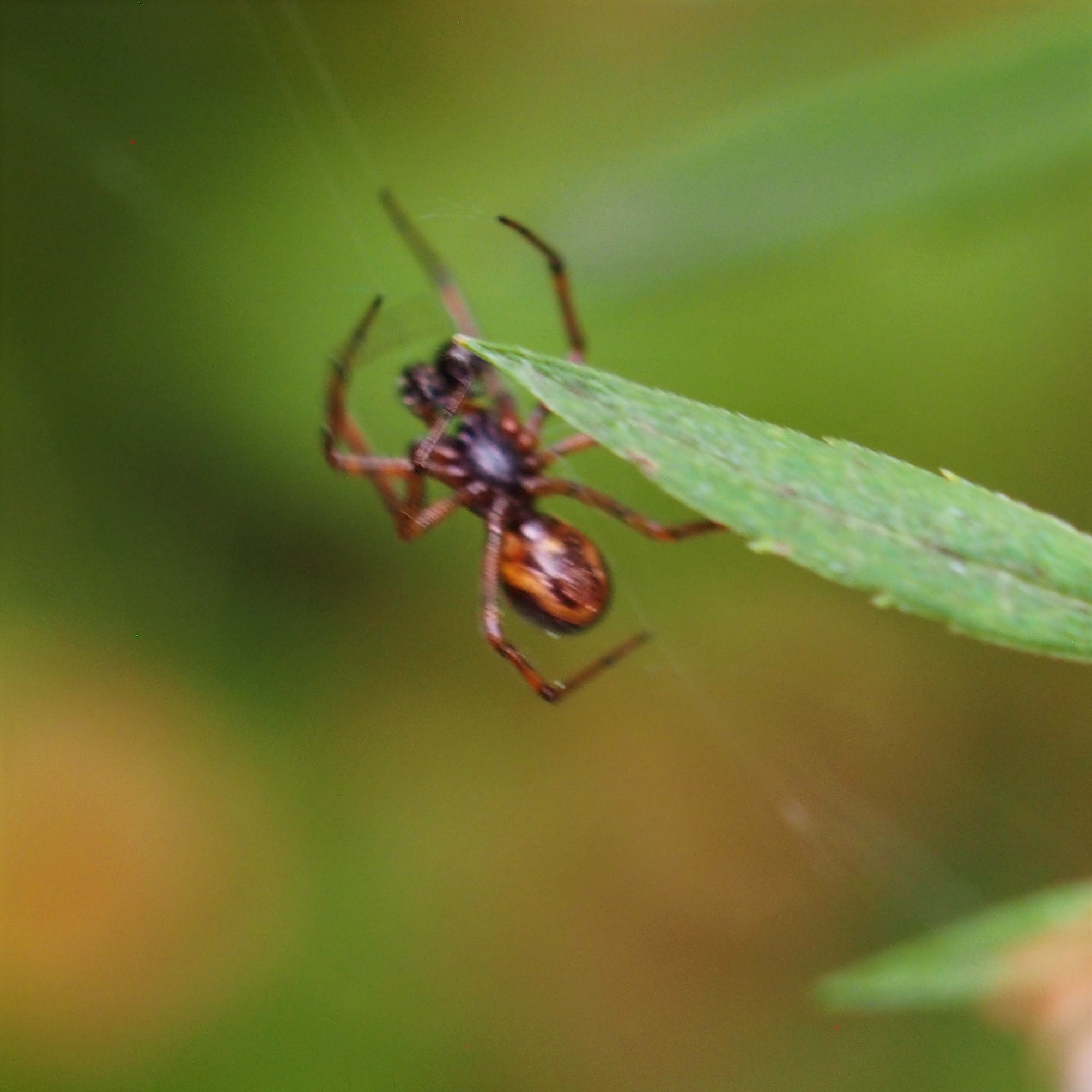
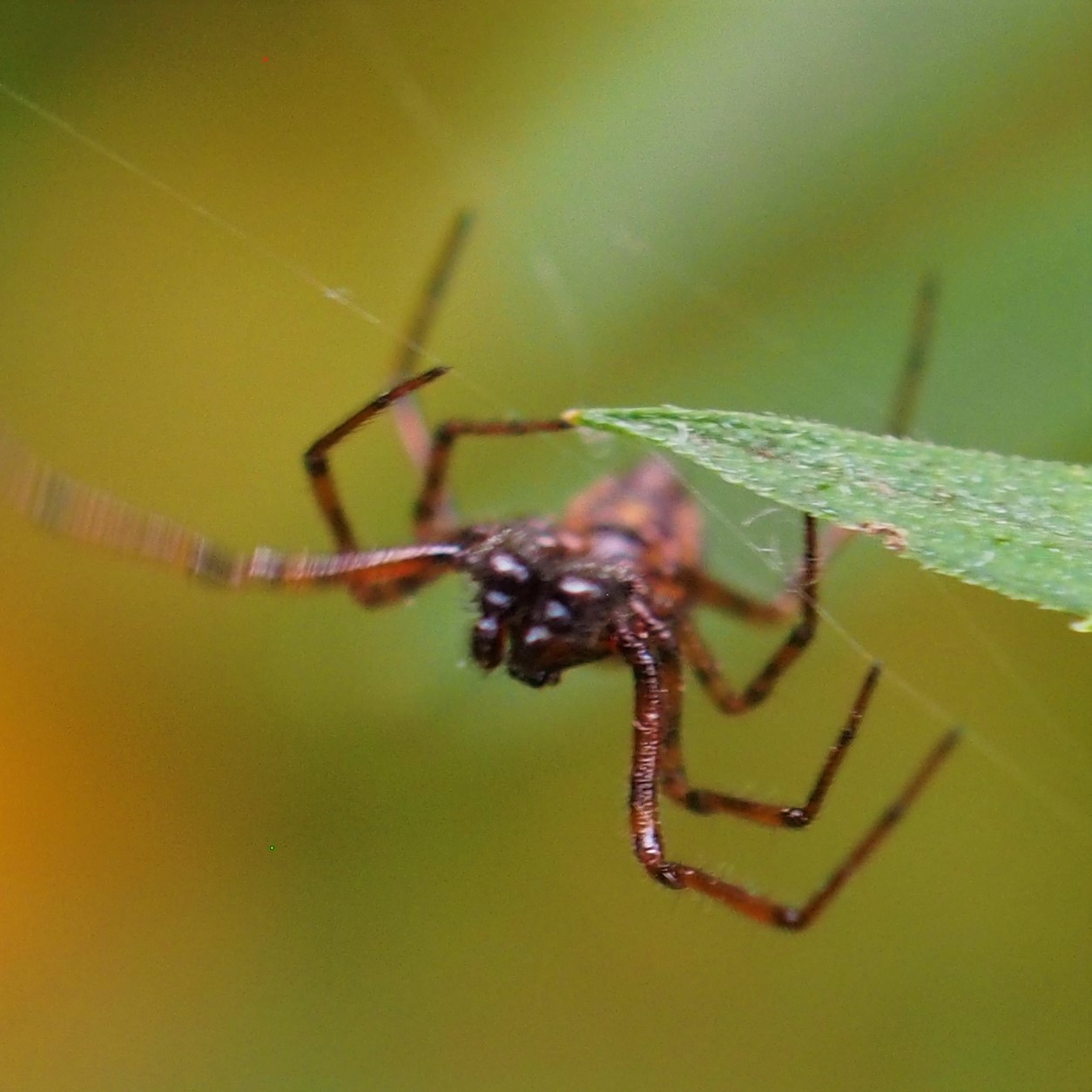
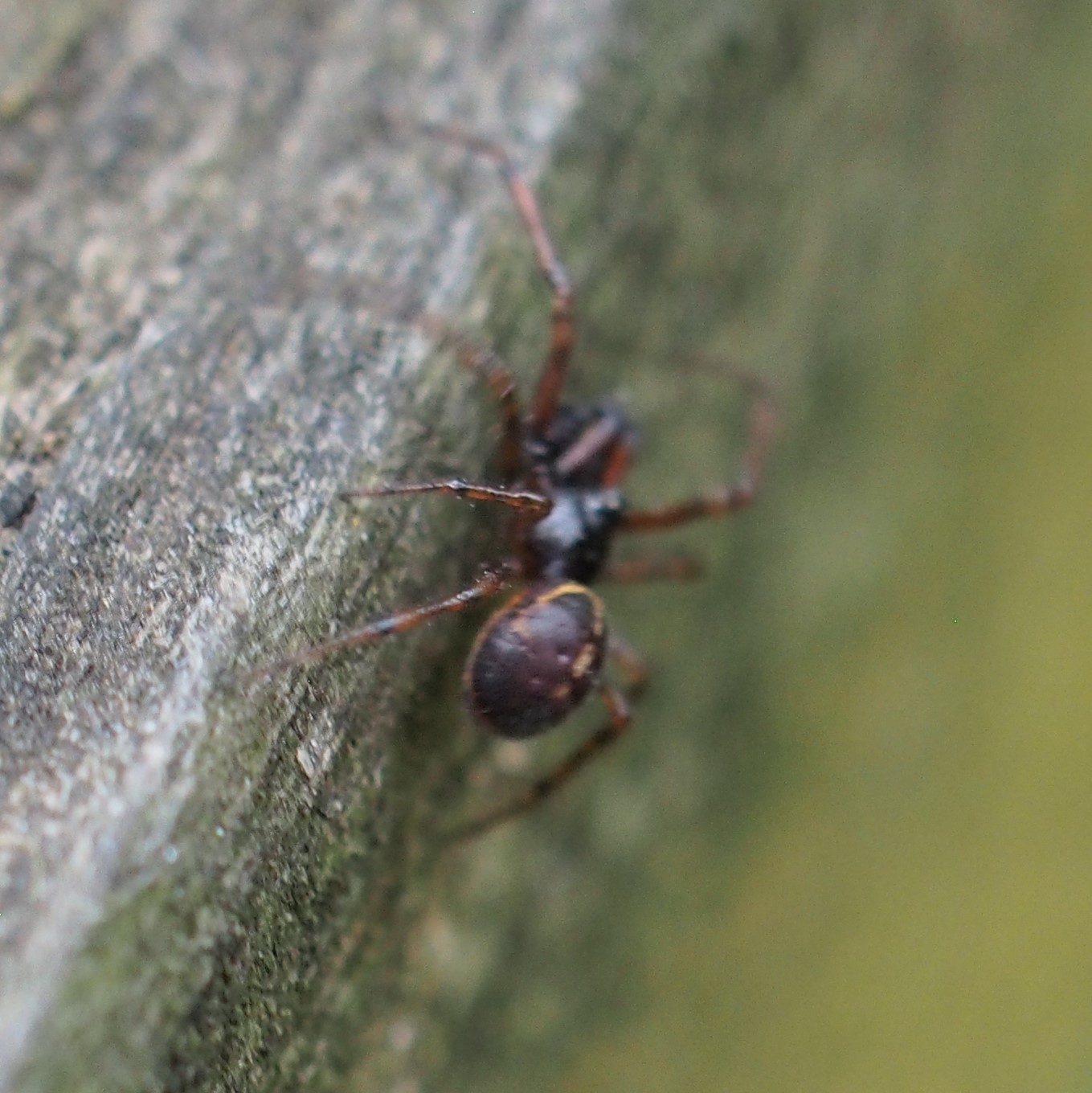
This skinny black silhouette is another mystery to me. But the red color of the next little Common House Spider gives it away - that's a color phase the males go through! Third is an unknown (to me) Jumping Spider.
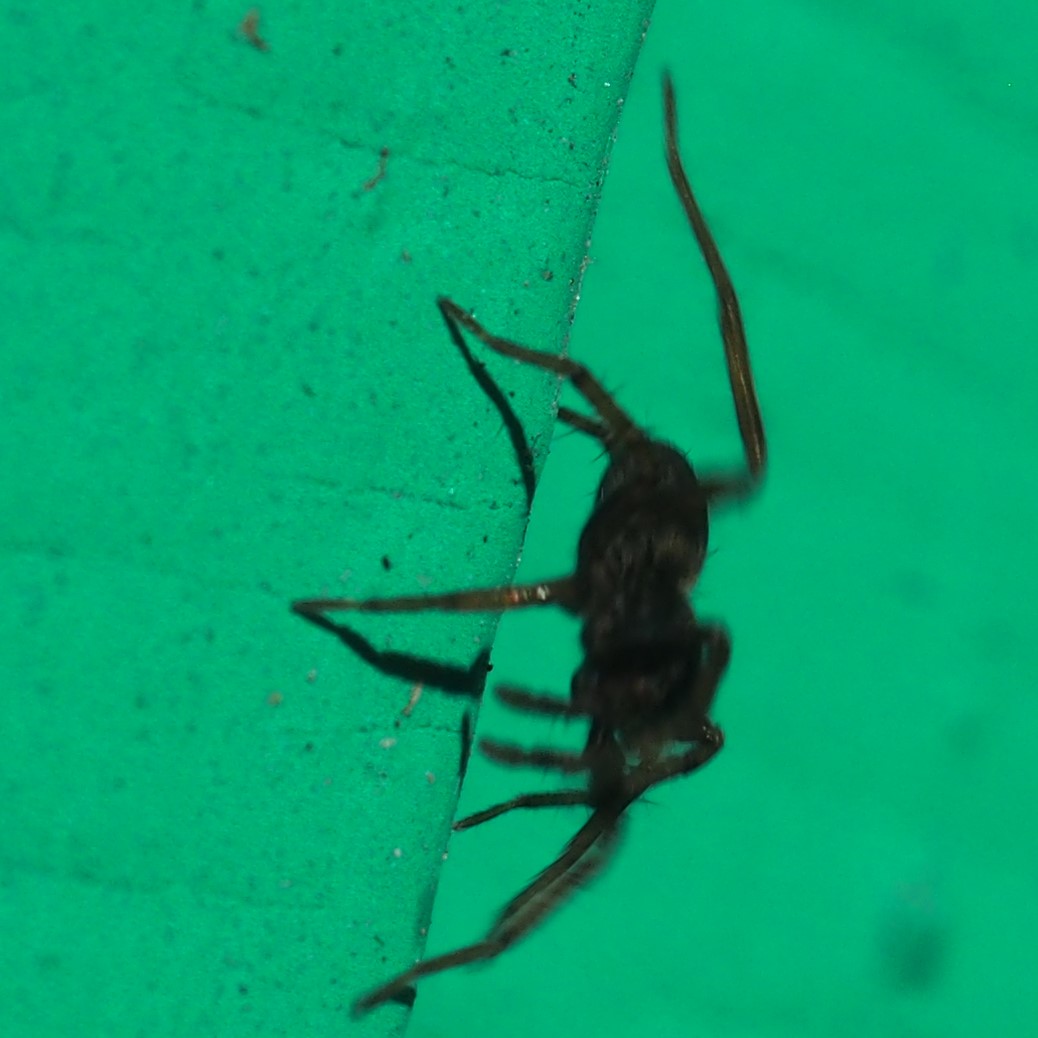

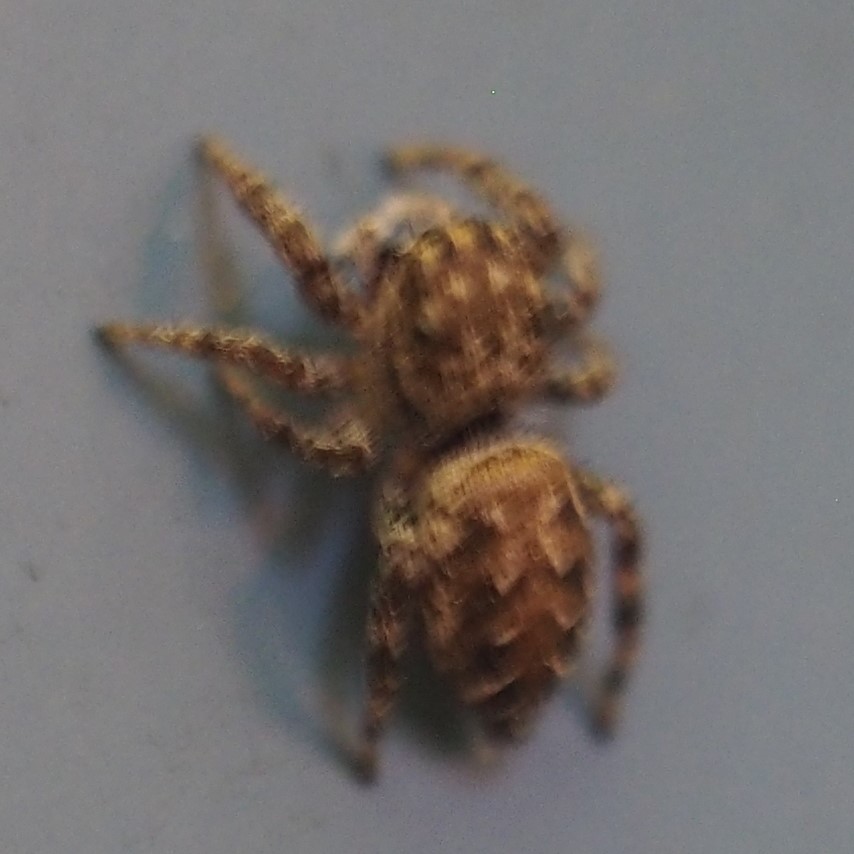
Let's turn to the many Wasps we saw this week. The first one seems to have caught a Spider for prey. Numbers two and three are the same bluish Ichneumonid Wasp.
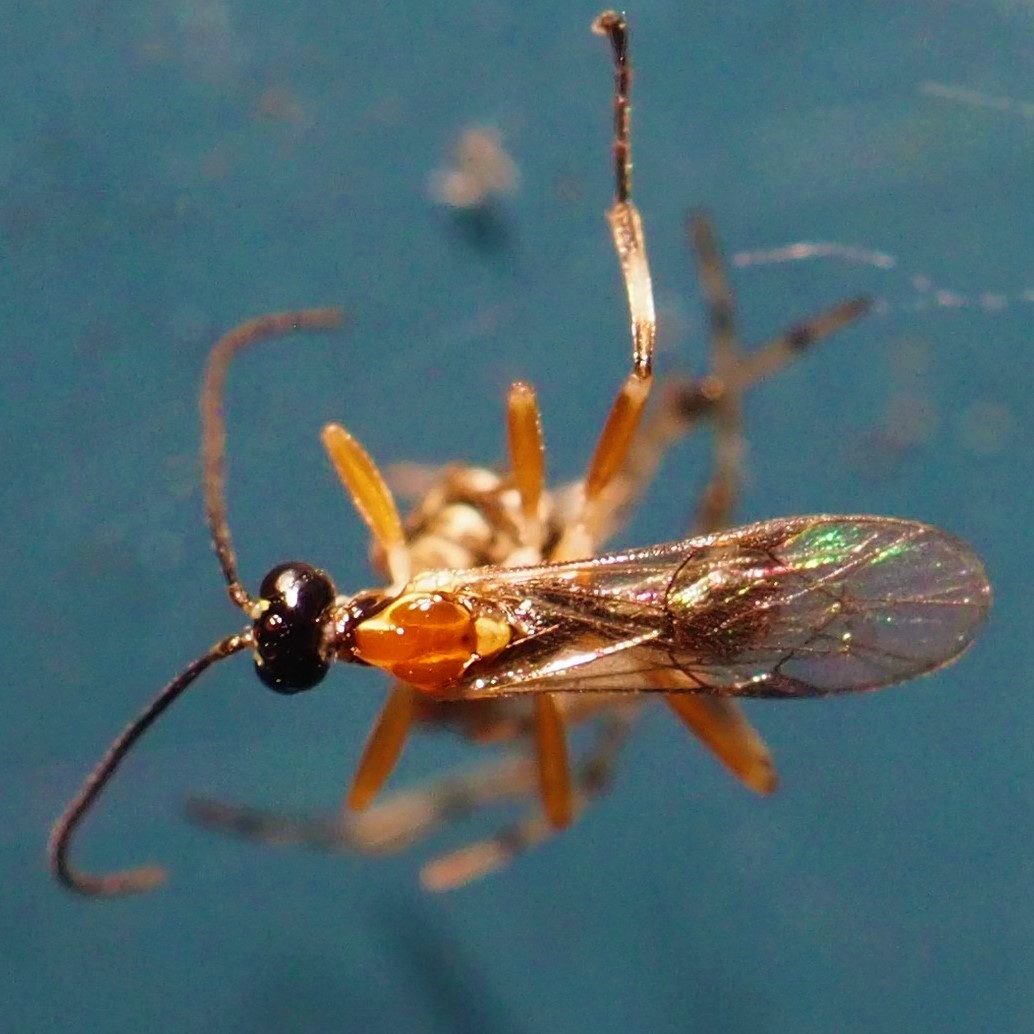
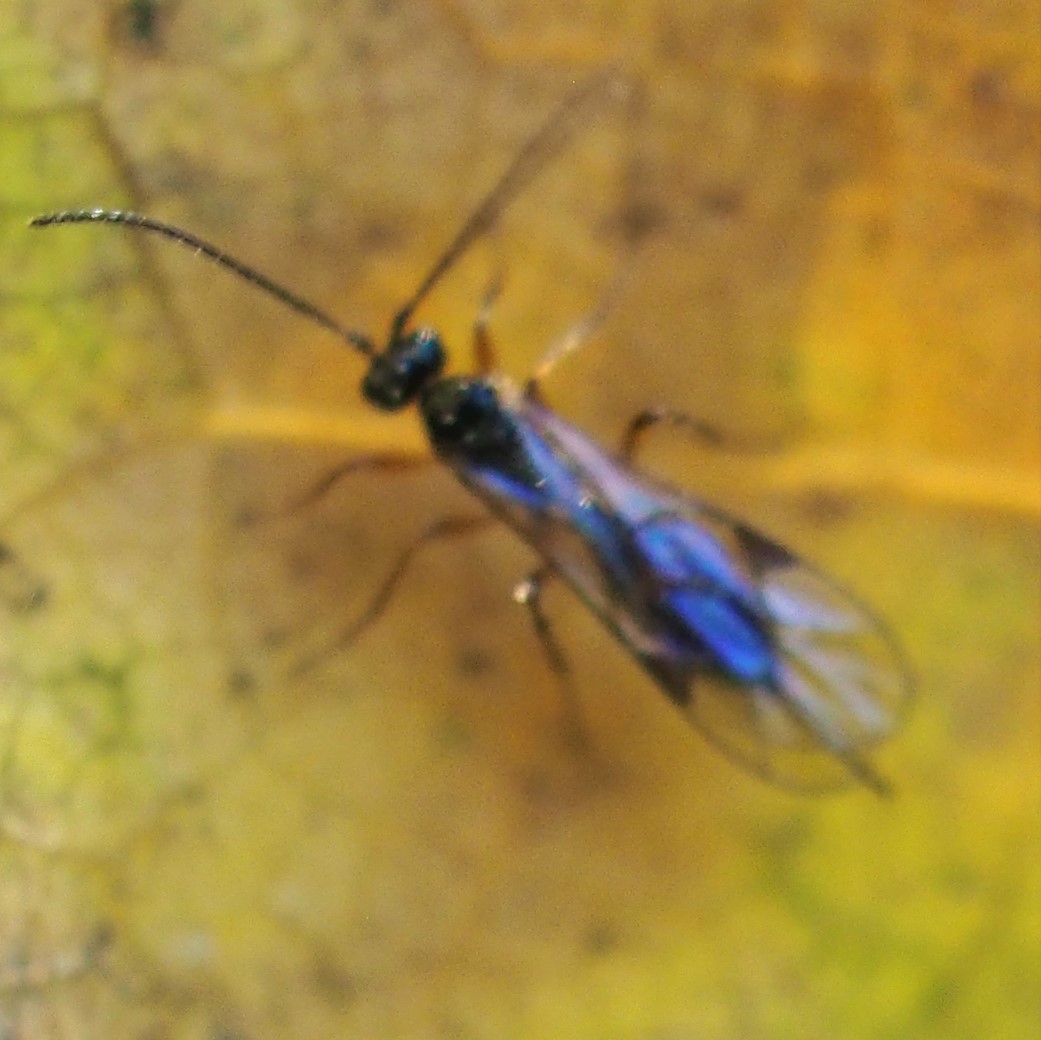
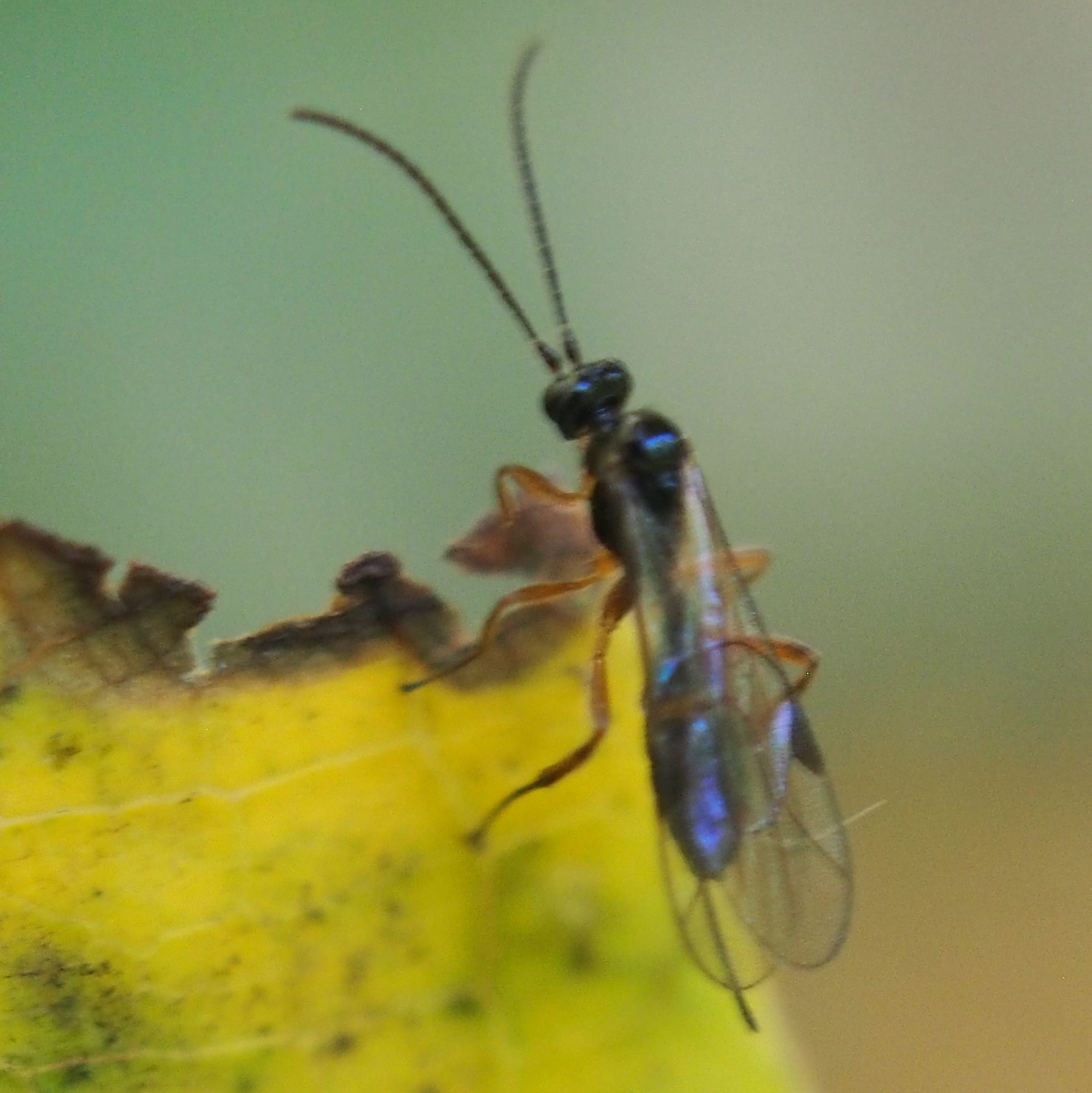
Here is a long red-and-black Wasp (two views). The third one is a short red-and-black one.
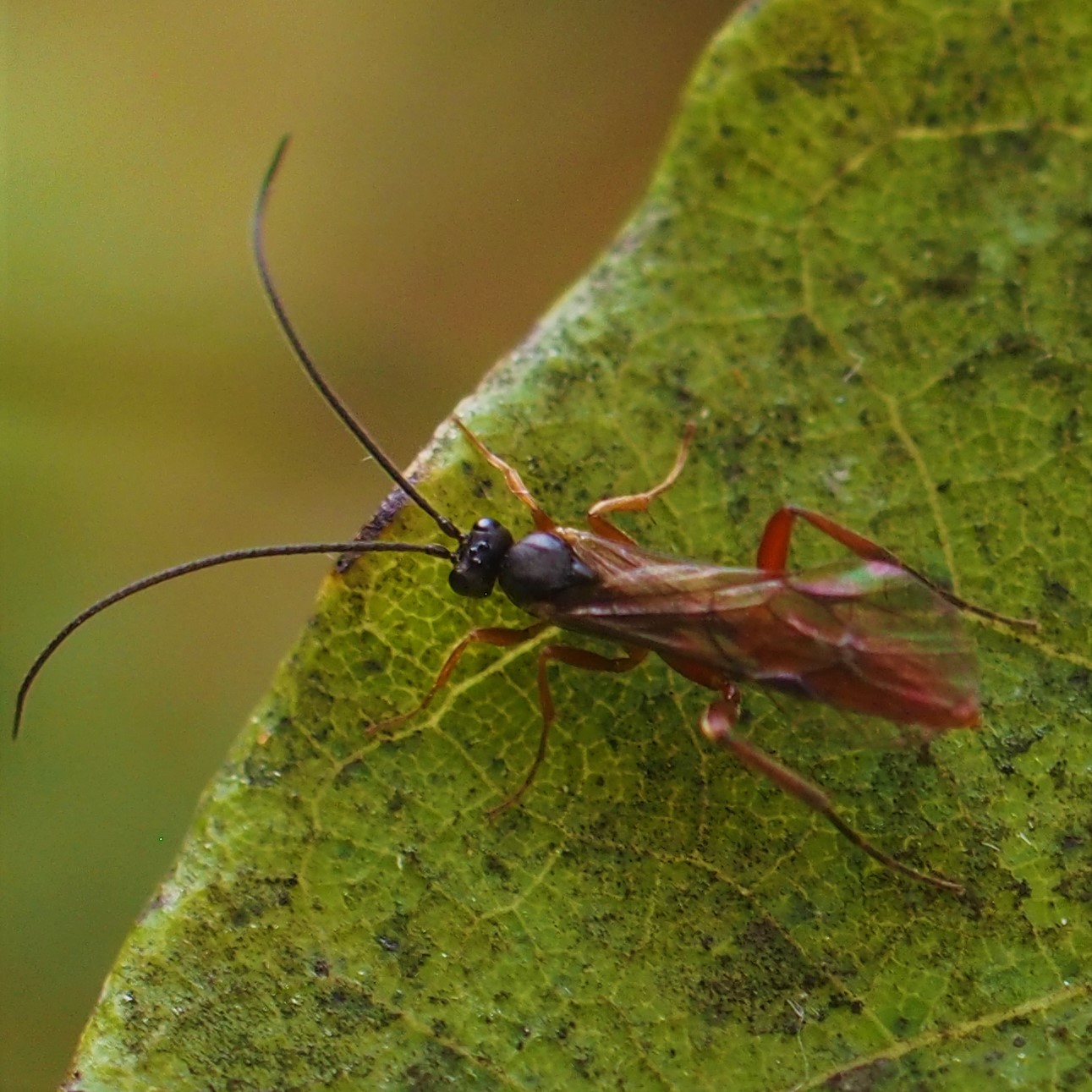
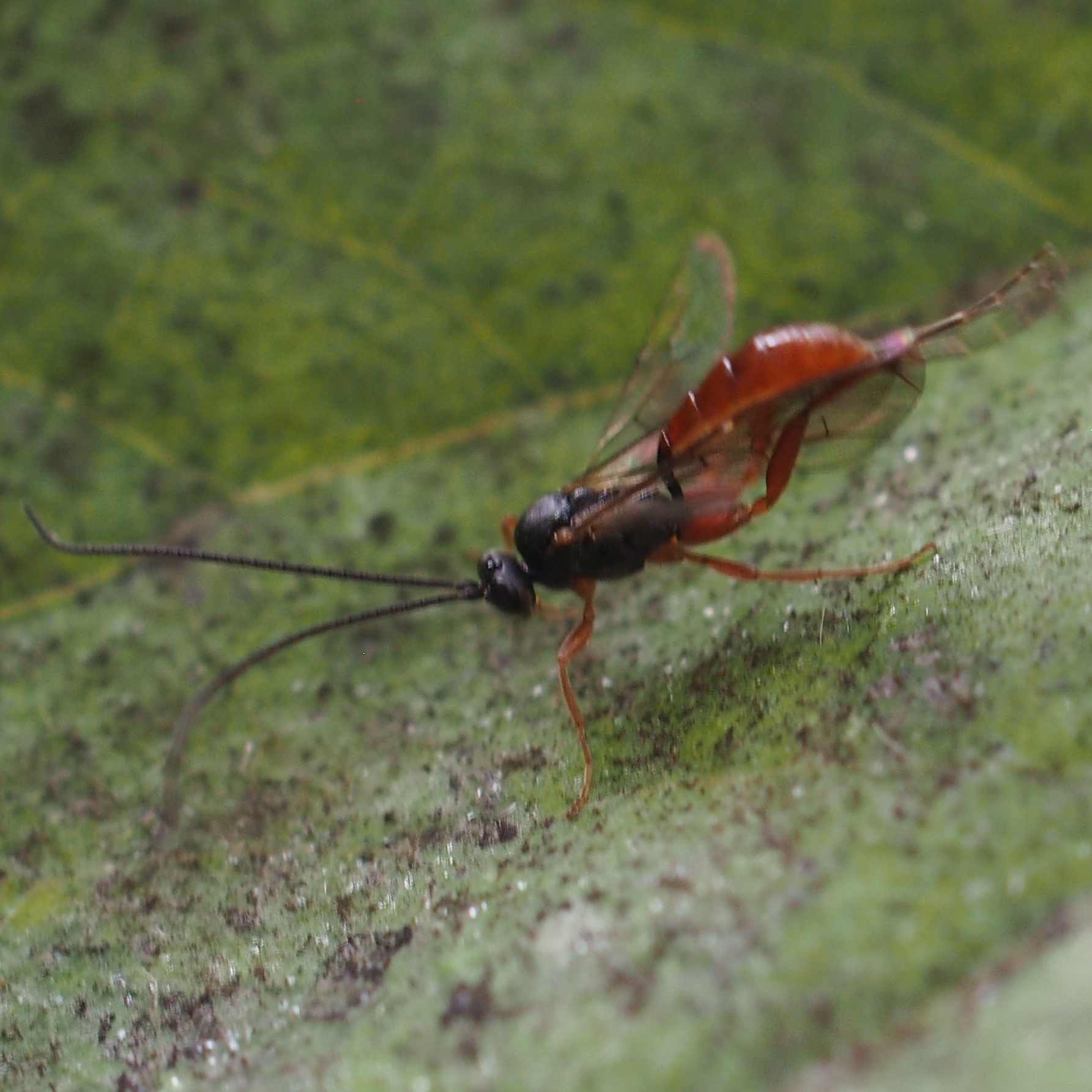

Well, you've seen what has happened to the Pond. The Fishes seem to have successfully adapted to the cold and lack of food. The other day I pulled the net out and dumped the leaves elsewhere. Picture 1 shows one big Frog who had come out of the water but was still under the net. When I uncovered him, another appeared on the edge. And when I re-covered the Pond, the two of them didn't seem to be anxious. You can see them under the net together.
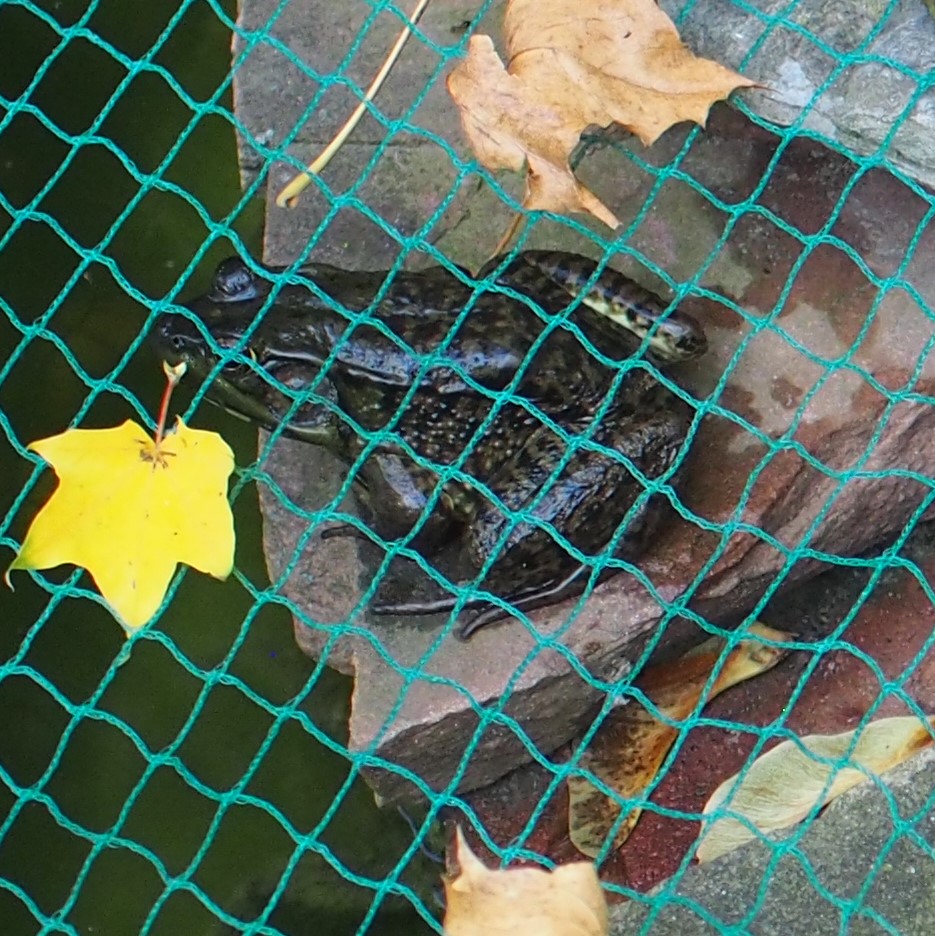
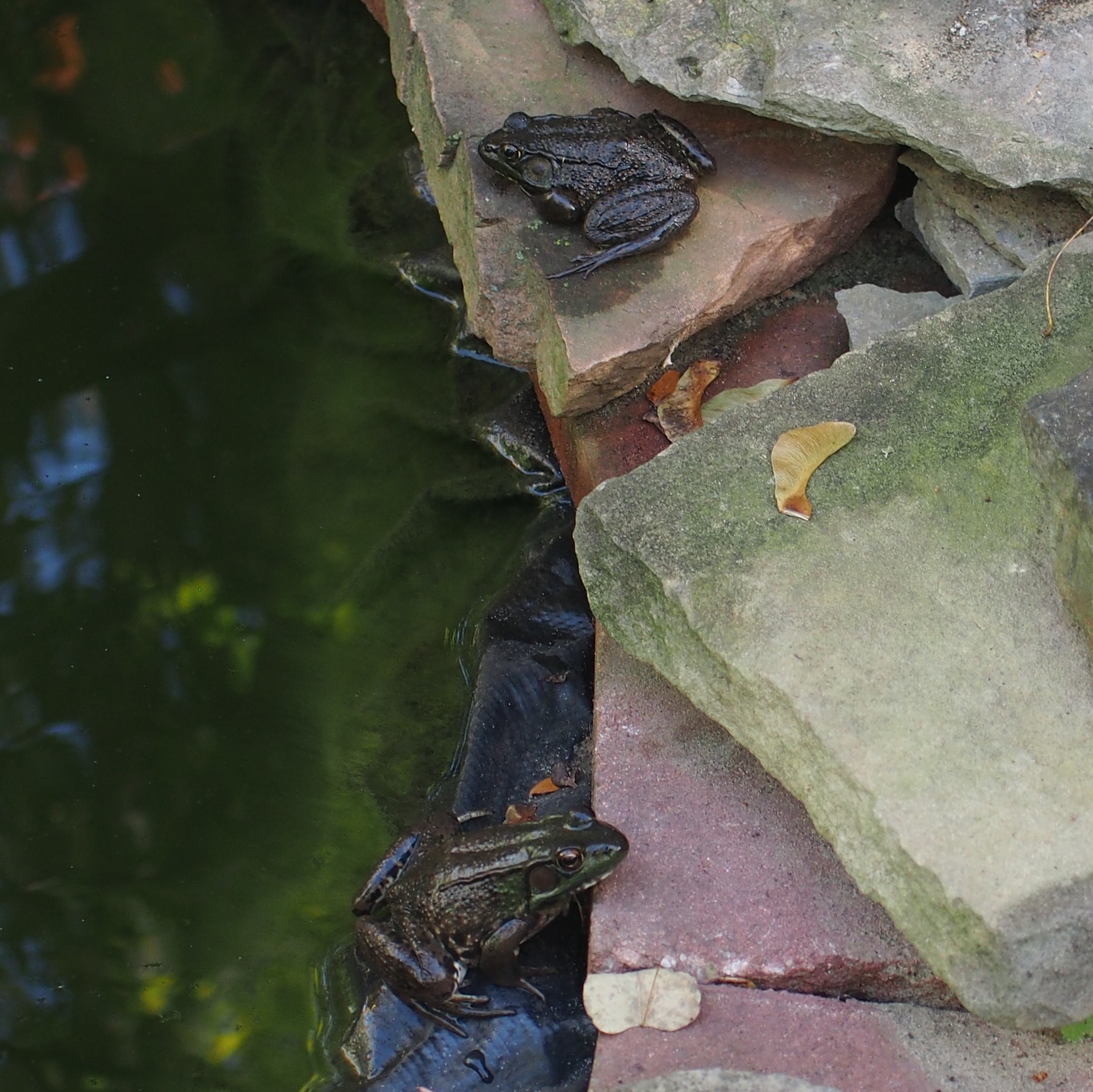

Here is the one photo of the Fishes under the clean net. They seem to be doing all right.
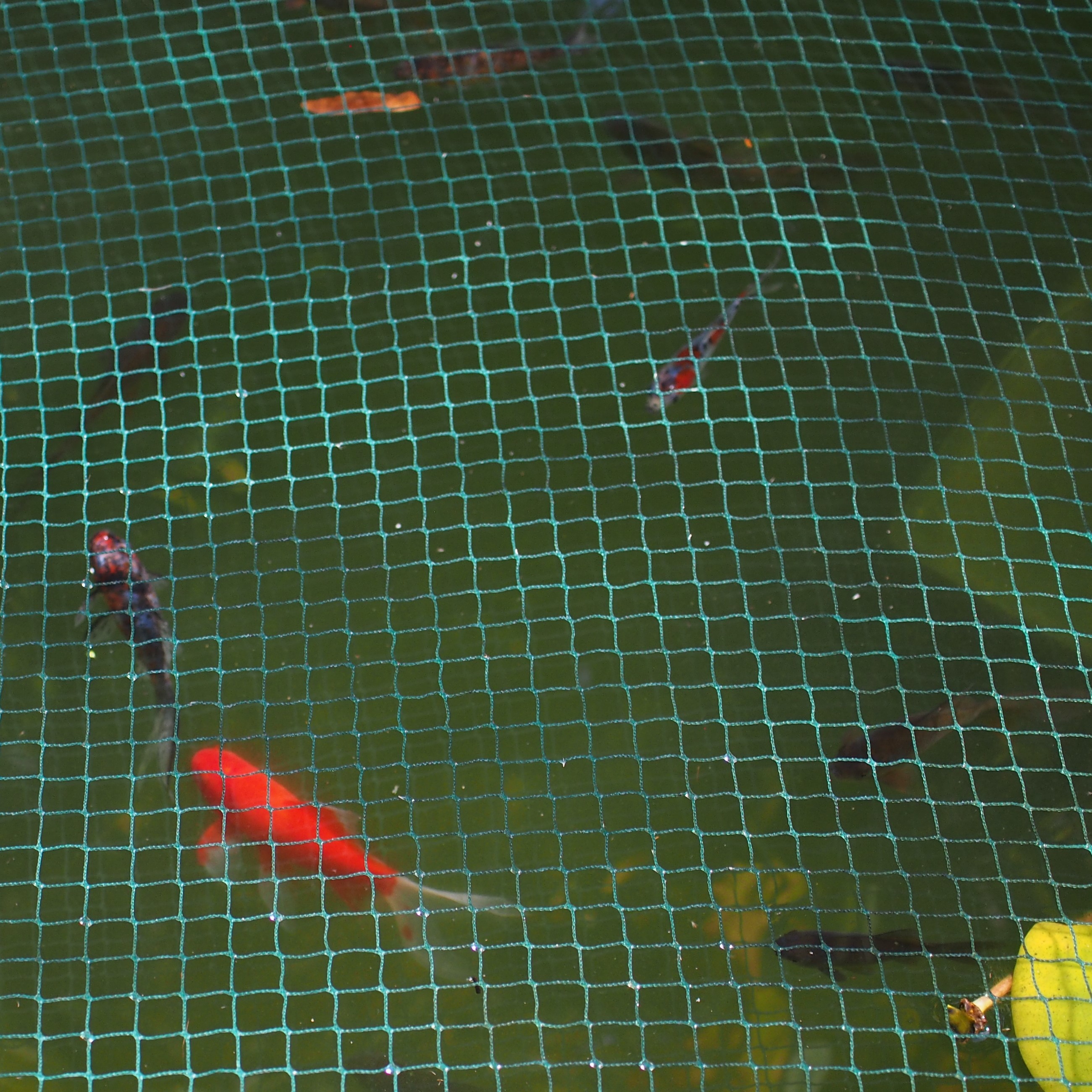
Another week has come and gone. Our AALL classes are almost all over and we meet this week to get going on the February term. Between classes and medical appointments, there is always something to do. :-)
I hope you also are too busy to feel the years piling on. Well, almost busy enough!
Love, Martha
P.S. Last week we got a bit into discussing the Wing Interference Pattern phenomenon, which explains the colors that appear in pictures of some creatures - not iridescence, which depends on the angle at which we view the creature, but real colors that are caused by films in the wings themselves. I have made a small website dedicated to these WIPs. Enjoy!
Back to October 23, 2022
Forward to November 6, 2022
Back to main menu
copyright Martha O'Kennon 2022
















































 10 21 22 2.jpg)
 female 10 25 22 1.jpg)

















































